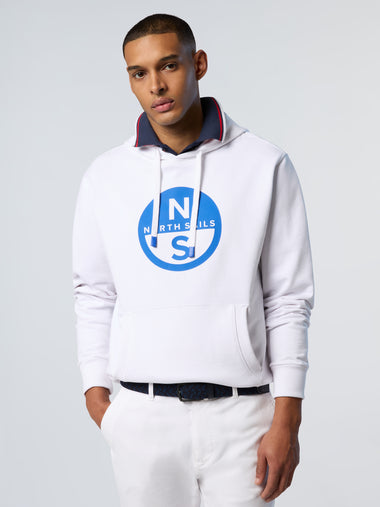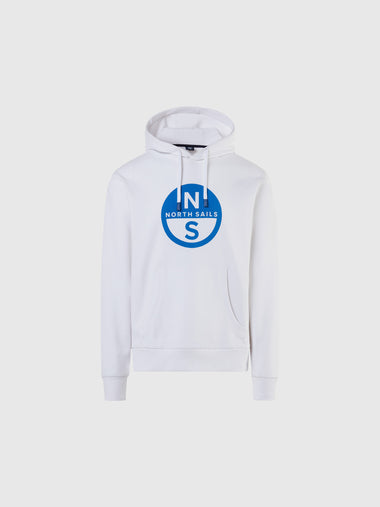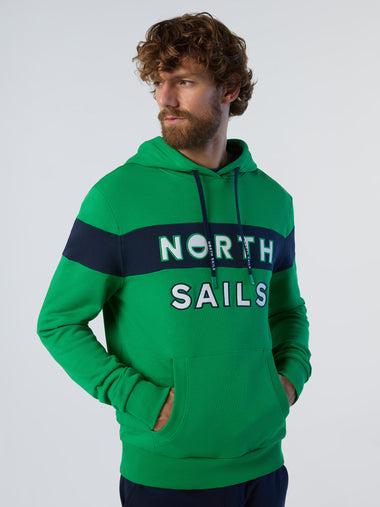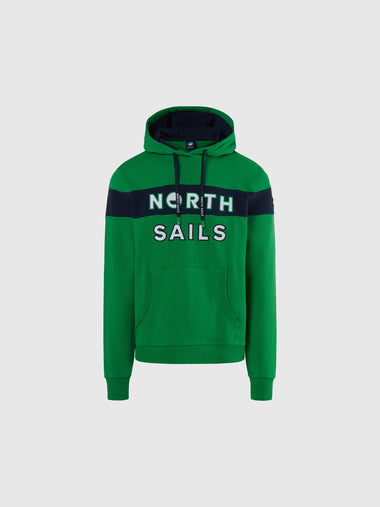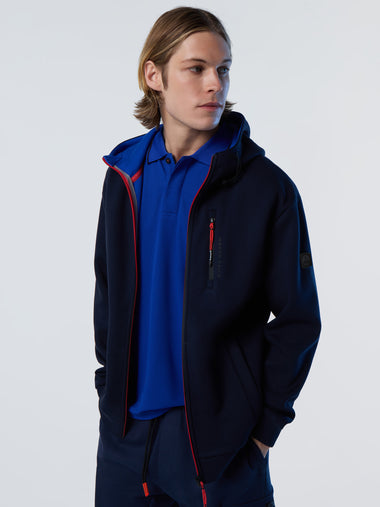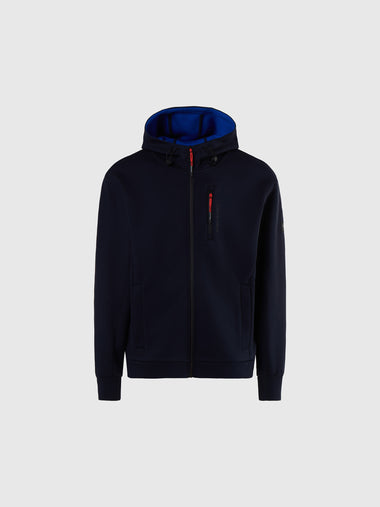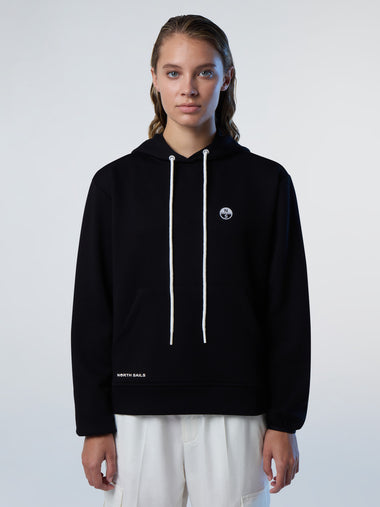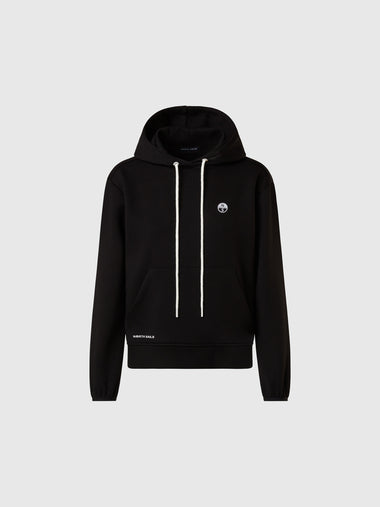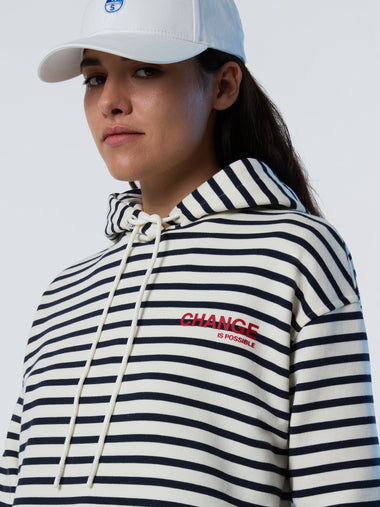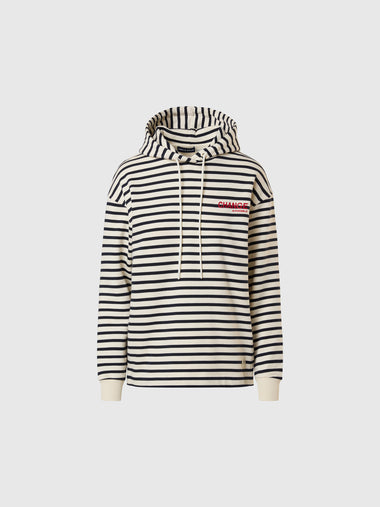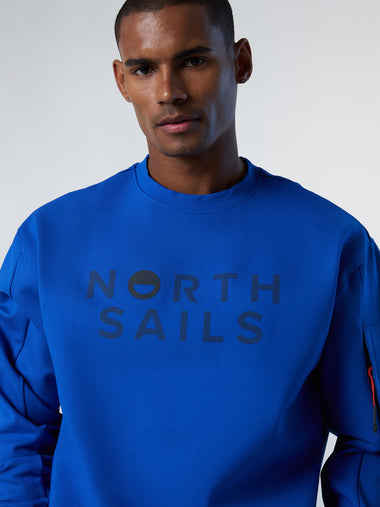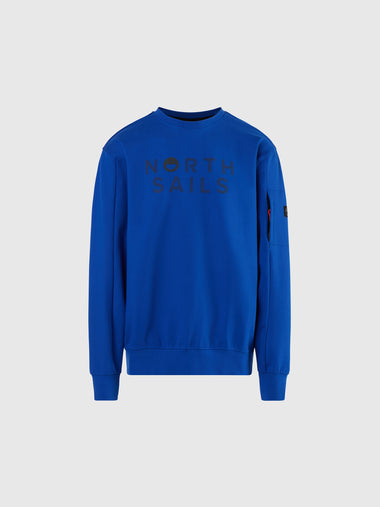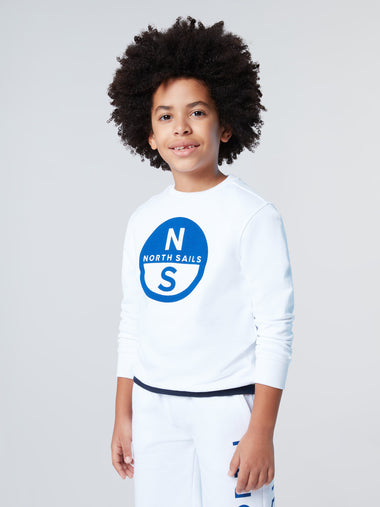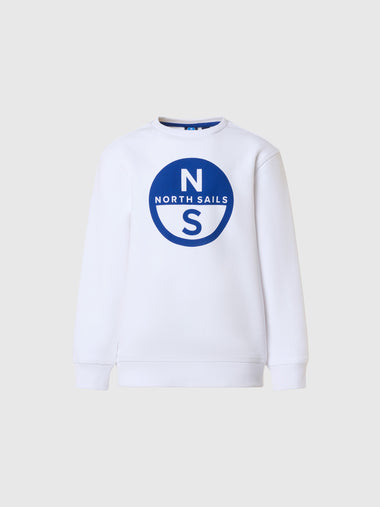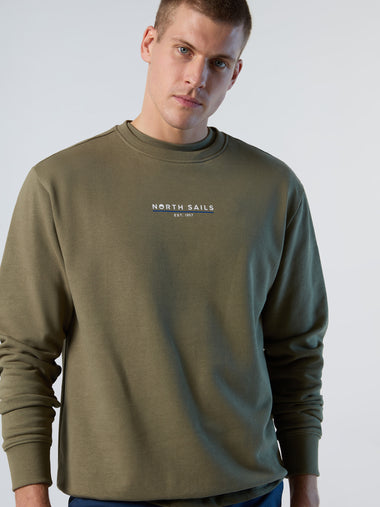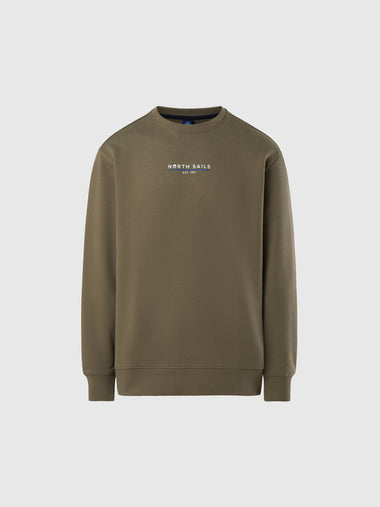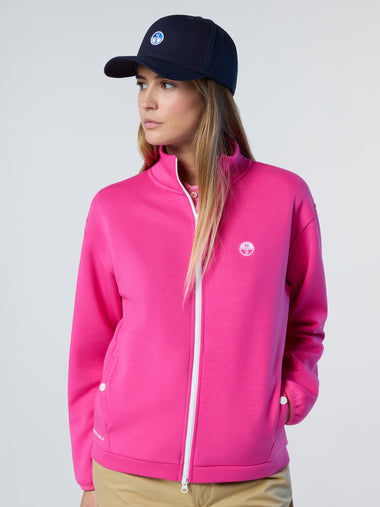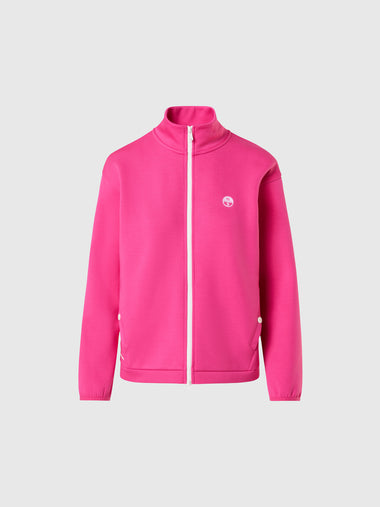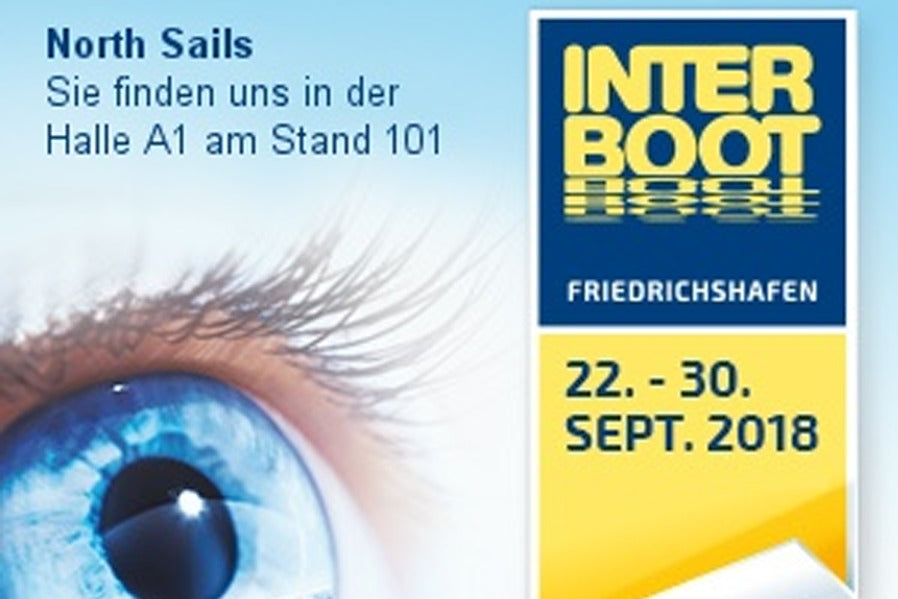NORTH SAILS BLOG
Alle
Events
Guides
News
People
Podcast
Sustainability
Tech & Innovation
Travel & Adventure

ESSE 850 SEASONAL SAVINGS
ESSE 850 SEASONAL SAVINGS
Seitdem es die Esse 850 Klasse gibt, baut North Sails die schnellsten Segel für dieses Boot. Egal wie sich die Klassenbestimmungen ändern, North Sails reagiert darauf, passt sich an und baut die schnellsten Segel.
Wie ihr wisst, ist North Sails auch an den Regatten präsent, steht für Fragen immer zur Verfügung und organisiert jedes Jahr mehrere Klassentrainings. Und wir werden nicht müde, euch auch in Zukunft bestmöglich zu beraten und betreuen!
Priesliste
Profitiert jetzt von der Aktion, die nur bis Ende Oktober 2018 gilt!!
Wie immer steht euch Daniel Schroff für Fragen gerne zur Verfügung: +41 71 680 00 80
North Sails Tuning Guide
Grundeinstellungen für das Esse 850 Rigg
Lesen Sie mehr →
North Sails Trainings
Welche Daten würden Ihnen zusagen?
Lesen Sie mehr →
READ MORE
READ MORE
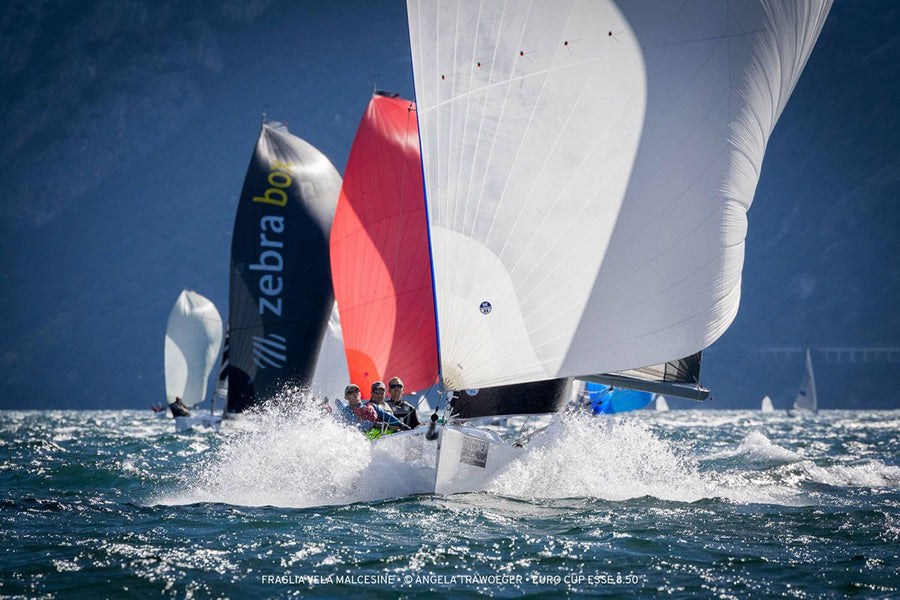
ESSE 850 SEASONAL SAVINGS
ESSE 850 SEASONAL SAVINGS
Seitdem es die Esse 850 Klasse gibt, baut North Sails die schnellsten Segel für dieses Boot. Egal wie sich die Klassenbestimmungen ändern, North Sails reagiert darauf, passt sich an und baut die schnellsten Segel.
Wie ihr wisst, ist North Sails auch an den Regatten präsent, steht für Fragen immer zur Verfügung und organisiert jedes Jahr mehrere Klassentrainings. Und wir werden nicht müde, euch auch in Zukunft bestmöglich zu beraten und betreuen!
Priesliste
Profitiert jetzt von der Aktion, die nur bis Ende Oktober 2018 gilt!!
Wie immer steht euch Daniel Schroff für Fragen gerne zur Verfügung: +41 71 680 00 80
North Sails Tuning Guide
Grundeinstellungen für das Esse 850 Rigg
Lesen Sie mehr →
North Sails Trainings
Welche Daten würden Ihnen zusagen?
Lesen Sie mehr →
READ MORE
READ MORE
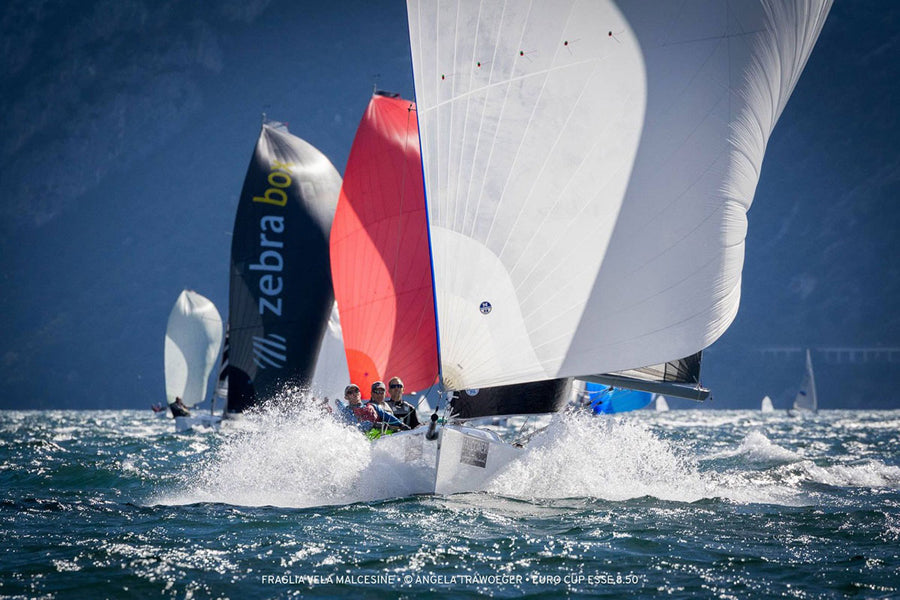
ESSE 850 SEASONAL SAVINGS
ESSE 850 SEASONAL SAVINGS
Seitdem es die Esse 850 Klasse gibt, baut North Sails die schnellsten Segel für dieses Boot. Egal wie sich die Klassenbestimmungen ändern, North Sails reagiert darauf, passt sich an und baut die schnellsten Segel.
Wie ihr wisst, ist North Sails auch an den Regatten präsent, steht für Fragen immer zur Verfügung und organisiert jedes Jahr mehrere Klassentrainings. Und wir werden nicht müde, euch auch in Zukunft bestmöglich zu beraten und betreuen!
Priesliste
Profitiert jetzt von der Aktion, die nur bis Ende Oktober 2018 gilt!!
Wie immer steht euch Daniel Schroff für Fragen gerne zur Verfügung: +41 71 680 00 80
North Sails Tuning Guide
Grundeinstellungen für das Esse 850 Rigg
Lesen Sie mehr →
North Sails Trainings
Welche Daten würden Ihnen zusagen?
Lesen Sie mehr →
READ MORE
READ MORE

A SAIL MAKING FAIRYTALE… INVOLVING MERMAIDS!
A SAIL MAKING FAIRYTALE!
New Sails for Darragh McCormack Help Him Win the Mermaid Nationals
On the 19th June 2018 an email landed into my inbox from Darragh McCormack making an enquiry about Mermaid sails. I have been corresponding with Darragh since 2014 but in most cases, we talked about the J/24 rather than the Mermaid. This time things were going to change.
North Sails have been involved in the Mermaid for a number of years now and have enjoyed Nationals winning success with Paddy Dillon and several other teams have done well with our sails but we never really took much market share even after those Nationals win.
When Darragh got it touch, my initial feeling was he would just be checking out prices and getting a feel for what we might be doing in the class. Not for one moment did I think he wanted to order and do a total re-design on the Mainsail and Jib and take delivery in advance of the Nationals that were only 5-6 weeks away! After a chat on the phone I quickly got the impression that Darragh was keen to try North Sails, so I jumped in the van the very next evening and drove to Foynes YC to go for a sail.
Darragh had some very strong feelings about the changes he wanted to make to the standard North Sails and of course specifically to fit his mast set up. On arriving in FYC that night, we looked at several sails on Darragh’s mast on shore and then took to the water. We flew more sails, took pictures of the sails in flight and I got a feel for the boat and the sail shapes. It has always been an eye-opener to sail with a new team and in the sport of sailing there are many ways to make a boat go fast! Armed with about 50 pictures, notes, measurements and my own thoughts about the
project, I headed home with an order for twelve sails… yes, twelve and they were all wanted for the Nationals!
July is one of the busiest months in the sail making world and we had to re-design the sails, make sure everything was perfect and then have the sails built in our Sri Lanka facility and shipped to Ireland! Quite a tall order but the enthusiasm from Darragh was infectious so I decided to give it our best shot. Fortunately, I was able work with Ruairidh Scott our One Design design expert in the UK, and very quickly and he worked his magic on the designs and we got everything boxed off in record time. The delivery dates were set and in theory with no shipping hold ups Darragh’s new sails would arrive just in time for the warm-up regatta the weekend before in Skerries and the rest of the order would arrive on a just in time basis for the main event, fingers crossed!
Like all the best-laid plans they do not always pan out perfectly! A slight shipping delay meant the sails for Darragh arrived a day late and he missed his chance to use the sails in Skerries. I was away at the time racing in the Dragon Gold Cup which was only adding to the stress of the sails being late! As it turned out, that was a windy regatta so I am not sure the sails would have been used anyway.
I landed home on the Monday and drove half-way to Foynes to meet Darragh and hand over the sails. I was off again the following day to Lake Garda for the Melges 24 Europeans so I could not even check out the sails with Darragh. Thank goodness for his confidence in us! He took the sails and spent the next two evenings ahead of the Nationals making sure everything was OK, sorting out the new Jib lead locations and wire heights.
I was phoning from Lake Garda every second minute like an expectant Father waiting to hear about the new-born Mermaid sails! Like all good Fairy tales this one also has a very happy ending! The sails fitted well and more importantly proved to be very quick on their first outing. Oh, I almost forgot to say…. The other nine sails arrived the day of the practice race as well. Too tight for comfort especially as I was not about to help fit them all, which is something we always try to do here at North with a brand-new design. Fortunately, all was well and everyone got their new sails on time but only just. From conception to water in only thirty-three working days after taking the order! I think I might have lost a bit more hair during those days! Darragh went on to sail an amazing series at his home yacht club and took the overall Nationals to win in fine style, including winning the very first race the new sails were used in. I have to say, a wave of relief came over me when I heard the news after day one of the Nationals, the sails are FAST, that was all I wanted to hear!
Congratulations to Darragh and his crew of Mark McCormack and Johnny Dillon, a helm is only ever as good as his crew on this occasion the teamwork was exceptional to lift the Nationals trophy for the first time. North Sails Ireland were delighted to play a small part in this success and we wish Darragh and his crew and all the other North clients in the Mermaid class all the best for 2019.
For more information about the sails please do not hesitate to contact us.
Sail FAST
Nigel Young
Darragh and his Team power to Victory with 100% North Sails
Mark Boyland flies downwind with his new North MS-1 Spinnaker to finish 3rd overall
Jim Carthy and his team finish 4th overall with a full new set of North Sails
READ MORE
READ MORE
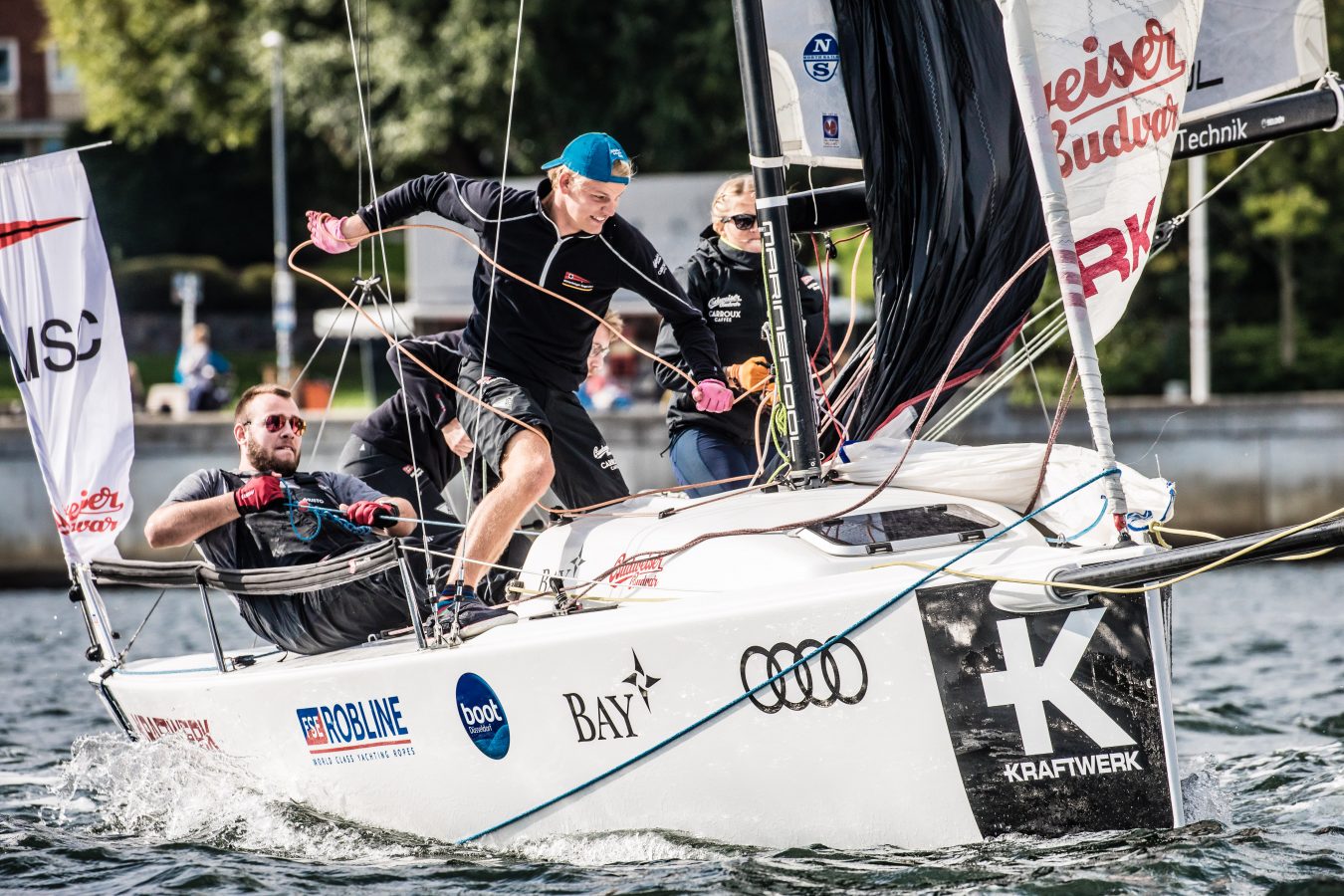
HERZSCHLAGFINALE FÜR DIE 2. SEGEL-BUNDESLIGA IN KIEL
ENTSCHEIDUNGSKAMPF AUF DER KIELER INNENFÖRDE - AUFSTEIGER STEHEN FEST
Es war ein Herzschlagfinale für die 2. Segel-Bundesliga und der vorletzte Auftritt der Erstligisten an diesem Wochenende in Kiel.
Aufsteiger in die 1. Segel-Bundesliga 2019 (Platz 1): Mühlenberger Segel-Club (Till KRÜGER, Lynn HAFEMANN, Finn OLSEN, Yoram ZAMORY) © DSBL/Lars Wehrmann
Text: Mit Material der Deutsche Segel-Bundesliga; Fotos: DSBL/Lars Wehrmann
Für die 2. Liga ging es um alles oder nichts, denn es entschied sich, welche vier Clubs den Aufstieg in die 1. Liga 2019 schaffen. Die vier Glücklichen sind der Mühlenberger Segel-Club, der Schlei-Segel-Club, die Seglervereinigung 1903 und die Seglergemeinschaft Lohheider See. Für die 1. Liga war es das letzte und damit wegweisende Event vor ihrem großen Finale im Oktober. Denkbar knapp gewinnt der Bayerische Yacht-Club in letzter Sekunde vor dem Verein Seglerhaus am Wannsee und dem Klub am Rupenhorn.
North Sails ist Ausrüster der Deutschen Segel-Bundesliga und bringt seine komplette Erfahrung in die Segel der Segel-Bundesliga ein. Für eine Regattaserie auf diesem sportlichen Niveau und der hohen Beanspruchung des Materials entwickelte North Sails zur Saison 2018 einen speziellen Segelsatz für die Segelligen. Dieser verbindet die Ansprüche an Performance und Haltbarkeit gleichermaßen.
2. Segel-Bundesliga
Auch wenn der Mühlenberger Segel-Club als vorzeitiger Aufsteiger in die 1. Segel-Bundesliga 2019 bereits seit dem letzten Event feststand, lag bei den anderen 17 Zweitligisten noch ordentlich Druck und Spannung in der Luft. Am Ende haben nach insgesamt fünf Events diese vier Clubs die Nase im Gesamtklassement vorne und werden dafür mit dem Aufstieg in die 1. Segel-Bundesliga 2019 belohnt: Mühlenberger Segel-Club, Schlei-Segel-Club, Seglervereinigung 1903, Seglergemeinschaft Lohheider See. Steuermann Andreas Wilim vom Schlei-Segel-Club, der mit einer Mannschaft Chris Hartkopf, Henning Sohn und Suzanne Willim zusammen segelt, sagt:
„Es war ein sehr anspruchsvolles letztes Event hier in Kiel, vor allem auch weil wir krankheitsbedingt einen Crewwechsel vornehmen mussten. Nichtsdestotrotz hat es das Team heute und über die gesamte Saison hiweg super gemacht und ich denke wir segeln 2019 berechtigterweise in der 1. Liga“, sagte Steuermann Andreas Willim.
Gemeinsam mit sechs Clubs aus der 1. und 2. Liga, 12 „Liga-Neulingen“ und zwei Teams der Juniorenliga geht es vom 02.-04. November beim DSL-Pokal in Hamburg um vier Startplätze für die 2. Segel-Bundesliga 2019. Den Spieltag in Kiel gewann die Seglervereinigung 1903 vor dem Schlei-Segel-Club und dem Augsburger Segler-Club.
Gewinner der 1. Segel-Bundesliga in Kiel: Bayerischer Yacht-Club (Julian AUTENRIETH, Nic CORSI, Raoul HERAEUS, Faidon KOUNAS) © DSBL/Lars Wehrmann
1. Segel-Bundesliga
Die Erstligisten „probten“ in Kiel ein letztes Mal und versuchten sich die bestmöglichen Plätze für ihr Finale kommenden Monat in Hamburg zu sichern. Mit Platz fünf schwächelte der amtierende Deutsche Meister in Kiel zwar etwas, doch hat der Norddeutsche Regatta Verein als aktueller Tabellenführer mit acht Punkten Vorsprung zum direkten Verfolger weiterhin gute Chancen den Meistertitel vor heimischen Publikum zu verteidigen. Auf Platz zwei der Gesamttabelle steht aktuell der Bayerische Yacht-Club vor dem Wassersport-Verein Hemelingen auf Platz drei. Das Finale der 1. Segel-Bundesliga findet vom 18. bis 20. Oktober in Hamburg statt.
READ MORE
READ MORE
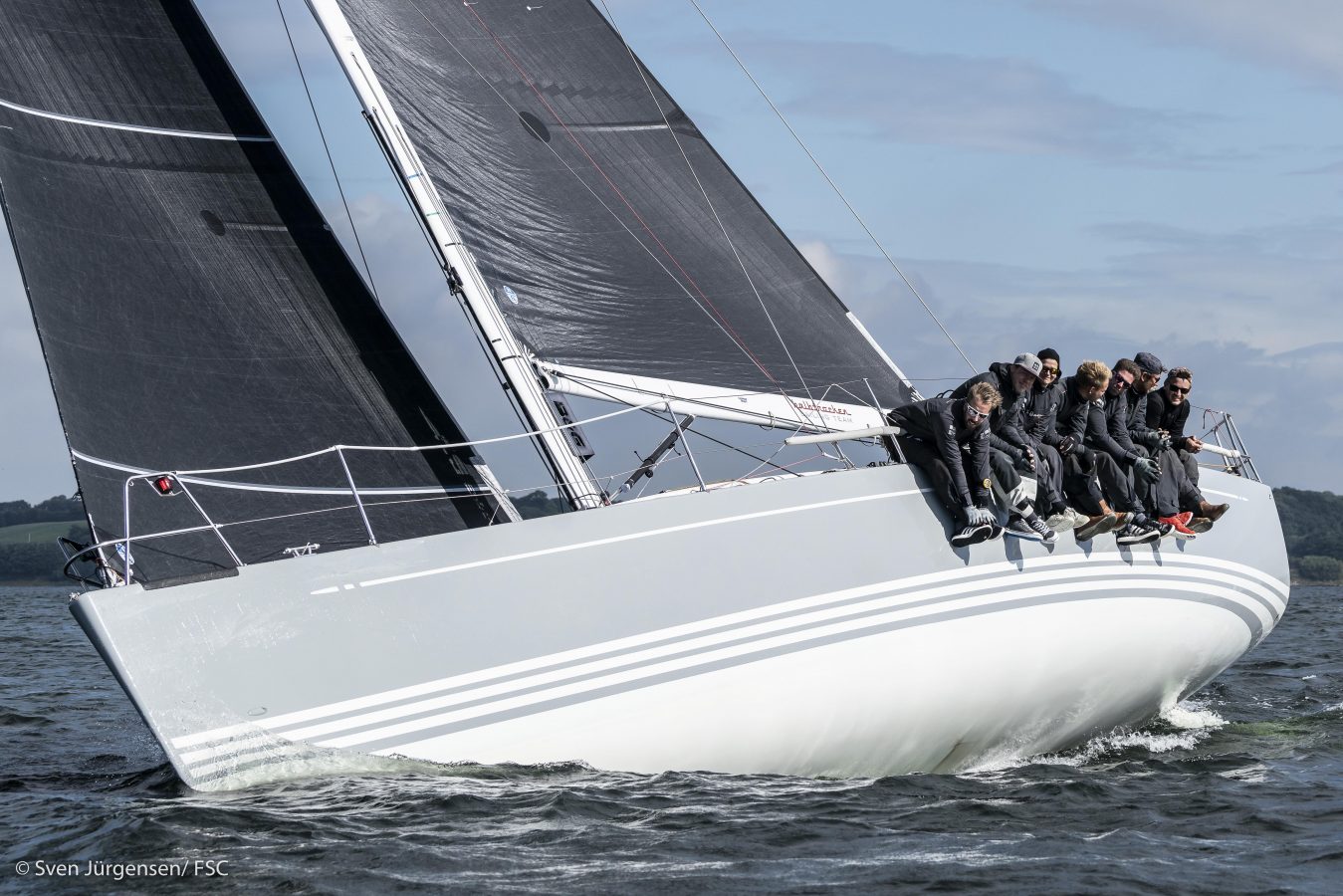
MEISTERTITEL FÜR HALBTROCKEN 4.0 UND ONE SPIRIT
MEISTERHAFTE VORSTELLUNG UNSER NORTH SAILS KUNDEN
Die Meistertitel der IDM Seesegeln 2018 gehen an die X-41 "HALBTROCKEN 4.0" von Michael Berghorn in ORC1/2 und die Italia 9.98 "ONESPIRIT" um Steuermann Gorden Nickel in ORC3/4.
Foto: Sven Jürgensen. ORCi 1/2 Deutscher Meister 2018: die "HALBTROCKEN 4.0" auf der Kreuz.
Der Flensburger Segel-Club richtete in diesem Jahr die Internationale Deutsche Meisterschaft im Seesegeln aus. An vier Regattatagen vom 05. bis 09. September wurden je eine Mittel- und Langstrecke sowie fünf Up-and-Down Wettfahrten gesegelt. Dabei verlangten unterschiedliche Wetterbedingungen mit Böen über der 30 Knotenmarke den Crews viel ab. In der Wertungsgruppe ORC 1/2 sicherte sich Michael Berghorn mit seiner X-41 schon vor dem Finaltag den Meistertitel. Dabei gelangen der Kieler Mannschaft drei Tagessiege und je zwei zweite und fünfte Plätze. Steuermann und Eigner Michael Berghorn vertraut dabei ganz North Sails 3Di Segeln, denn alle Amwind-Segel sind aus 3Di RAW 780 gefertigt.
"Anspruchsvolles Segeln mit böigen Winden mit über 30 Knoten haben gutes Bootshandling und eine gute Crew erfordert. Nach einer erfolgreichen Saison haben wir diese Herausforderung hier ganz gut bewältigen können und freuen uns, die Saison mit einer guten Platzierung beenden zu dürfen." Michael Berghorn
Foto: Sven Jürgensen: Erfolgreiche North Sails Kunden: Farr 30 "H.E.A.T." rechts (schwarzer Spi) und "ONESPIRIT" in der Mitte auf dem Vorwindkurs.
Gordon Nickel zeigte in der Gruppe der ORCi 3/4 Yachten am Finaltag unterdessen erneut, warum die „ONESPIRIT“ vor Flensburg verdient den Titel des Deutschen Meisters ersegelte: In Sachen Boathandling, Speed und Fehlerminimierung ist die junge Crew mit ihrer Italia 9.98 derzeit das Maß der Dinge. Nickel sagte dazu:
„Wir sind super happy über das Ergebnis und hatten eine tolle Zeit in Flensburg. Die Segeltage waren lang und schön und wir sind froh darüber, dass wir uns so gut platzieren konnten.“
Auf Rang 2 follte die Farr 30 "H.E.A.T" um Max Augustin, welcher sich mit seiner Mannschaft am Finaltag mit einem fünften Platz noch einen Platz nach oben klettern konnte. Ebenso wie die "HALBTROCKEN 4.0" setzen auch Nickel und Augustin auf North Sails 3Di RAW und Regatta-Spinnaker.
Foto: Sven Jürgensen: Die siegreiche Yacht "ONESPIRIT" - unterwegs mit North Sails 3Di RAW und Spinnaker der Regattaserie.
READ MORE
READ MORE
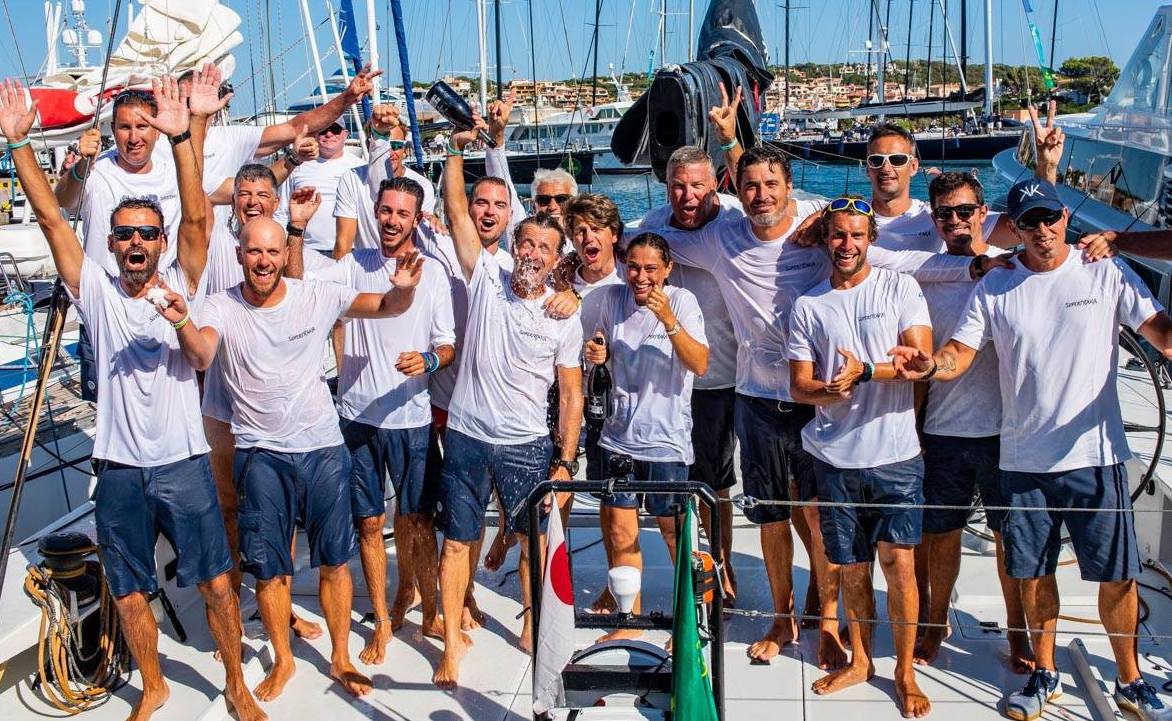
COMMANDING RESULTS AT 2018 MAXI YACHT ROLEX CUP
COMMANDING RESULTS IN PORTO CERVO
Six Division Wins at 2018 Maxi Yacht Rolex Cup & Maxi 72 Worlds
Forty-one of the world’s most beautiful racing yachts met in Porto Cervo, Italy for the 29th edition of the Maxi Yacht Rolex Cup & Maxi 72 World Championships. North clients won six of seven divisions with their North 3Di sails. Over twenty North Sails experts participated in the regatta. Porto Cervo served up a variety of conditions and race formats, challenging teams to trust their boat handling and limit their losses. Hear what our team had to say about the regatta and their firsthand experience onboard some of the most prestigious racing yachts.
Charif Souki’s Tango 📸 Rolex / Carlo Borlenghi
Laurent Delage, North Sails France, Tango, 2nd Place Wally Division
“We had great starts and good tactical calls that contributed to our overall performance this week. It was a tough battle with all of our competitors having excellent speed, but our crew work and perseverance paid off in the end. There is a lot to be said about not giving up and continuing to push the boat to its maximum potential. The Wally class gets faster each year while using a perfectly matched product in 3Di, which holds shape unlike other products that we’ve used.”
SuperNikka celebrate their win at 2018 Maxi Yacht Rolex Cup 📸Lanfrancotti-Taccola
Alessio Razeto, North Sails Italy, SuperNikka, Winner Mini Maxi Group 1
“Boat speed, starts, and sail trim set SuperNikka ahead of our competition. We were able to improve our boat performance throughout the Maxi Worlds by focusing on sail shape and rig tune. We recently introduced 3Di RAW to the SuperNikka program and we were instantly fast and ahead of the competition. Our speed downwind dramatically improved with the addition of two new kites. Our A0 in particular was a great weapon throughout the week – we were able to sail the tighter angles with ease and gained a ton of speed.”
Winner of Super Maxi Division, J8 Topaz 📸Rolex /Carlo Borlenghi
Eckhard Kaller, North Sails Germany, Topaz, Winner Super Maxi Division
“Competition within the J Class is tough as all boats have the same North 3Di sails, but each boat has their own set up and what they feel is an optimized inventory, which keeps things interesting. 3Di is perfect for the J Class – it gives a wide range for every sail. It wasn’t just one sail that made the difference for us; it was our entire sail inventory that made it possible to have a leg up on the fleet.
The Topaz team has been together for two years, and we are constantly working on sail trim and crew techniques for every maneuver. Our teamwork is above and beyond, and is reflected through our overall boat speed and handling. There were 15 nationalities onboard Topaz for this event and we really made a great team.”
H20 accepting their Rolex prize for winning the Maxi Group 2 📸Rolex / Carlo Borlenghi
Riccardo de Michele, Skipper, H2O winner of Mini Maxi Group 2. This is the third Maxi Yacht Rolex Cup win in four years for H2O.
“There’s something to be said about maintaining the same crew and skipper. Being able to work together and train together for some time has benefited our team greatly. We were also able to work closely with our sail designer who got us up to speed with 3Di, making it possible to win our division.”
Lyra, winner of the Wally Class leads J One. 📸Rolex / Carlo Borlenghi
Terry Hui, Skipper, Lyra, Winner of the Wally Division
“Being new to this class, I am learning a lot. We have a great team on Lyra. Racing in Porto Cervo is beautiful and the YCCS is the best.”
Massimiliano Florio’s Grande Orazino Southernwind 82, winner of Maxi RC and Combined division. 📸 Rolex / Carlo Borlenghi
Second place Maxi 72 Division, Dario Ferrari’s Cannonball 📸Rolex / Carlo Borlenghi
The Juan K designer Rambler 88. 📸Rolex / Carlo Borlenghi
📸Rolex / Carlo Borlenghi
Full Results
READ MORE
READ MORE
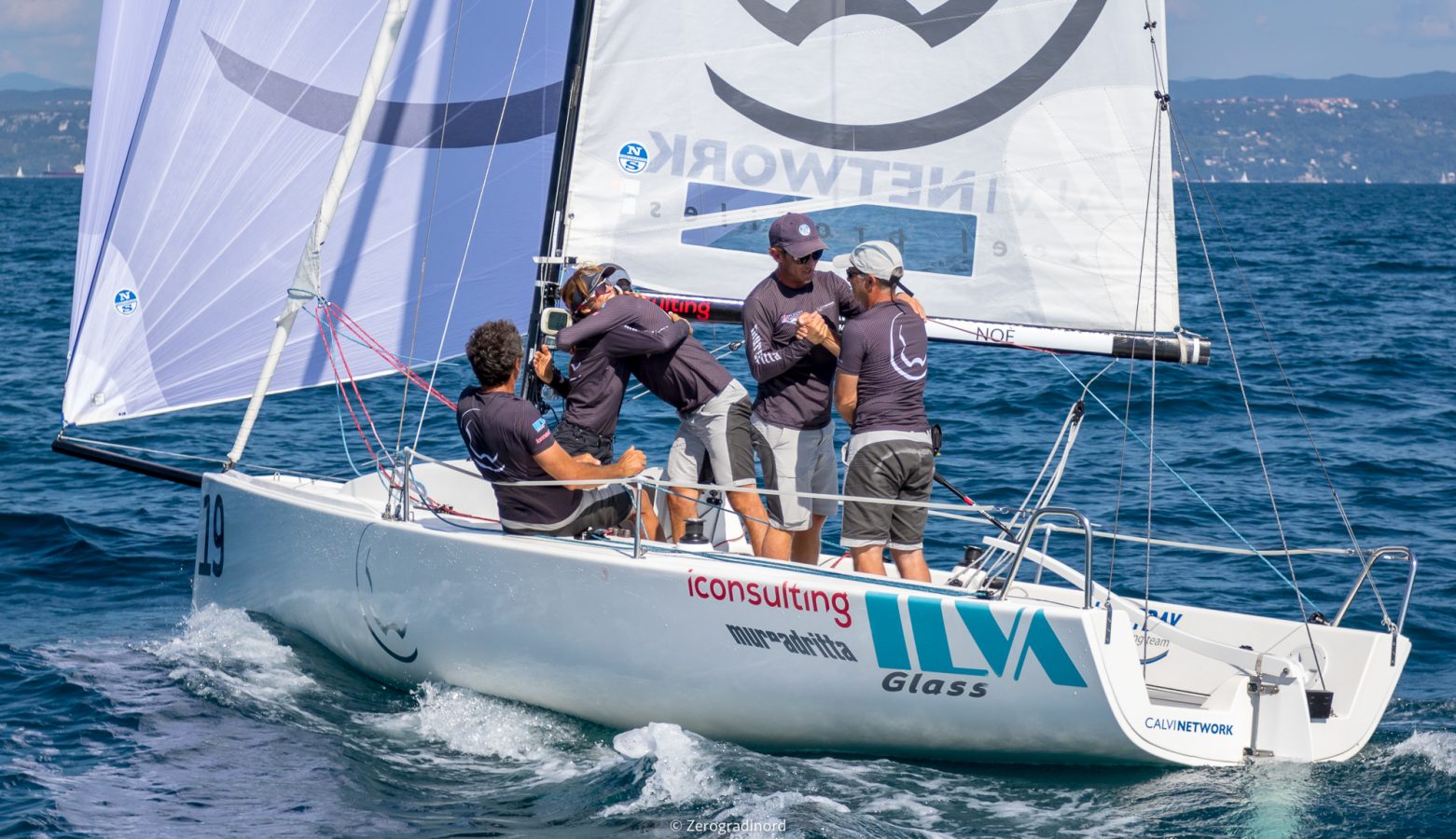
J/70 ITALIAN CUP ROUND UP
J/70 ITALIAN CUP ROUND UP
Calvi Network Wins Overall Title
© Zerogradinord
After six events at six different venues, 26 races, and 13 black flag starts, Gianfranco Noe’s Calvi Network have taken the overall title in the 2018 J/70 Italian Cup for the second year in a row and the third time since the series’ inception. Consistent racing throughout the season moved them to the top of the overall standings, despite the hot competition from European Champions, Enfant Terrible.
© Zerogradinord
Lera Kovalenko and her team on Arttube won the final event in the series for second overall in the Corinthian rankings. Paolo Tomsic and Mauro Brescacin, La Femme Terrible won the Corinthian title and finished third overall.
© Zerogradinord
The next event on the J/70 calendar is the World Championship in Marblehead, MA, USA at the end of September. Top North American sailors and European contenders will make this one of the most competitive regattas in the history of the class.
North Sails experts have contributed their J/70 knowledge, tricks, and speed tips to create the ultimate Worlds tool kit. Race your J/70 to its full potential.
© Zerogradinord
© Zerogradinord
READ MORE
READ MORE
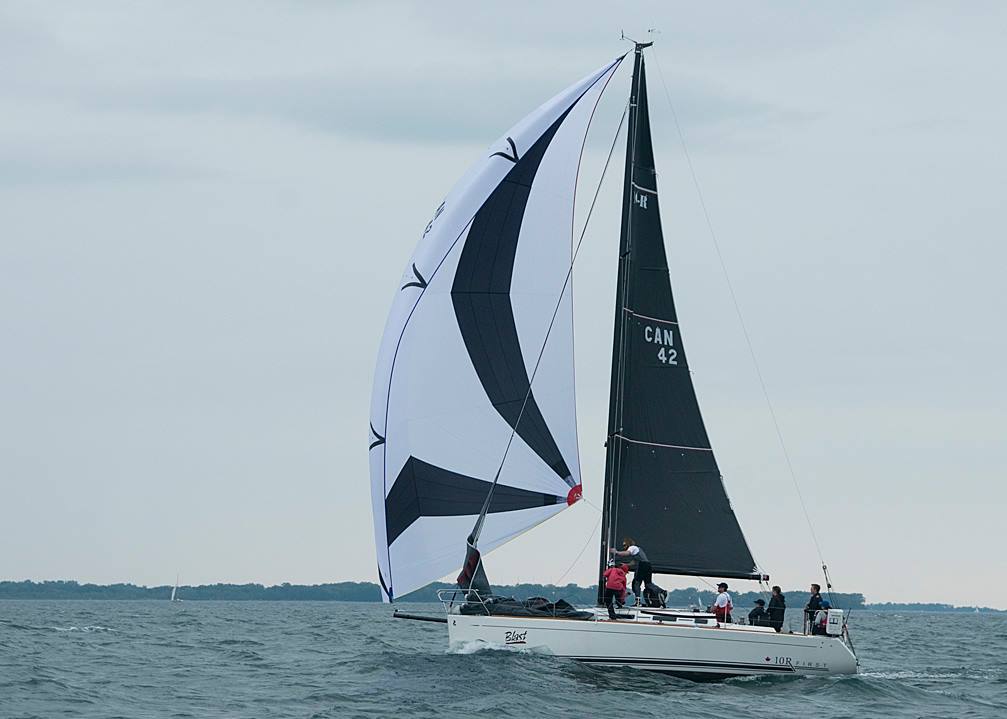
CUSTOMER CORNER: ETOBICOKE YACHT CLUB OPEN 2018
CUSTOMER CORNER: ETOBICOKE YACHT CLUB OPEN
Strong Breeze & Strong Competition at EYC Open 2018
The Etobicoke Yacht Club Open for 2018 was a special event with EYC Celebrating It’s 50th anniversary. The club has come a long way since its founding in 1968 and one of the regular highlights of this history has been the annual EYC Open regatta. Despite foul weather in the forecast, boats came in and were ready to race. The 2018 edition of the event hosted two North American Championship regattas. The 8 Metre Class, and IRC fleet were vying for their respective titles. Among the event highlights, the IRC class presented the Perpetual Trophy to Notorious out of National Yacht Club and claiming the 8 Metre title was Etobicoke Yacht Club’s own Glenmorangie Lafayette. Another notable result was in the PHRF 2 division where a group of EYC Junior Sail alumni and instructors claimed their fleet title on Still Knot Working. It was a great weekend for Humber Bay boats with MCC boats Blast (10R PHRF -1), Hot Water (J133 IRC - 1) and Neptune’s Car (Beneteau 36.7 – Level) claiming their fleet titles as well. Warrington out of QCYC took home a first in PHRF NFS, and the top J-24 was Taz out of National. Off the water, boats had direct access to the North Sails Regatta Repair Service, prize giveaways and some great entertainment to cap off the Saturday night festivities. Band X Prime kicked off just as the rain subsided for the evening, and crews were treated to some great music from all sorts of eras. The Open was a great way for EYC to cap off it’s 50th anniversary celebration and we look forward to building on the momentum that this year brought to the event. We’re looking forward to seeing our competitors back for the 2019 edition of the regatta, so mark your calendars for August 24th and 25th 2019!
READ MORE
READ MORE
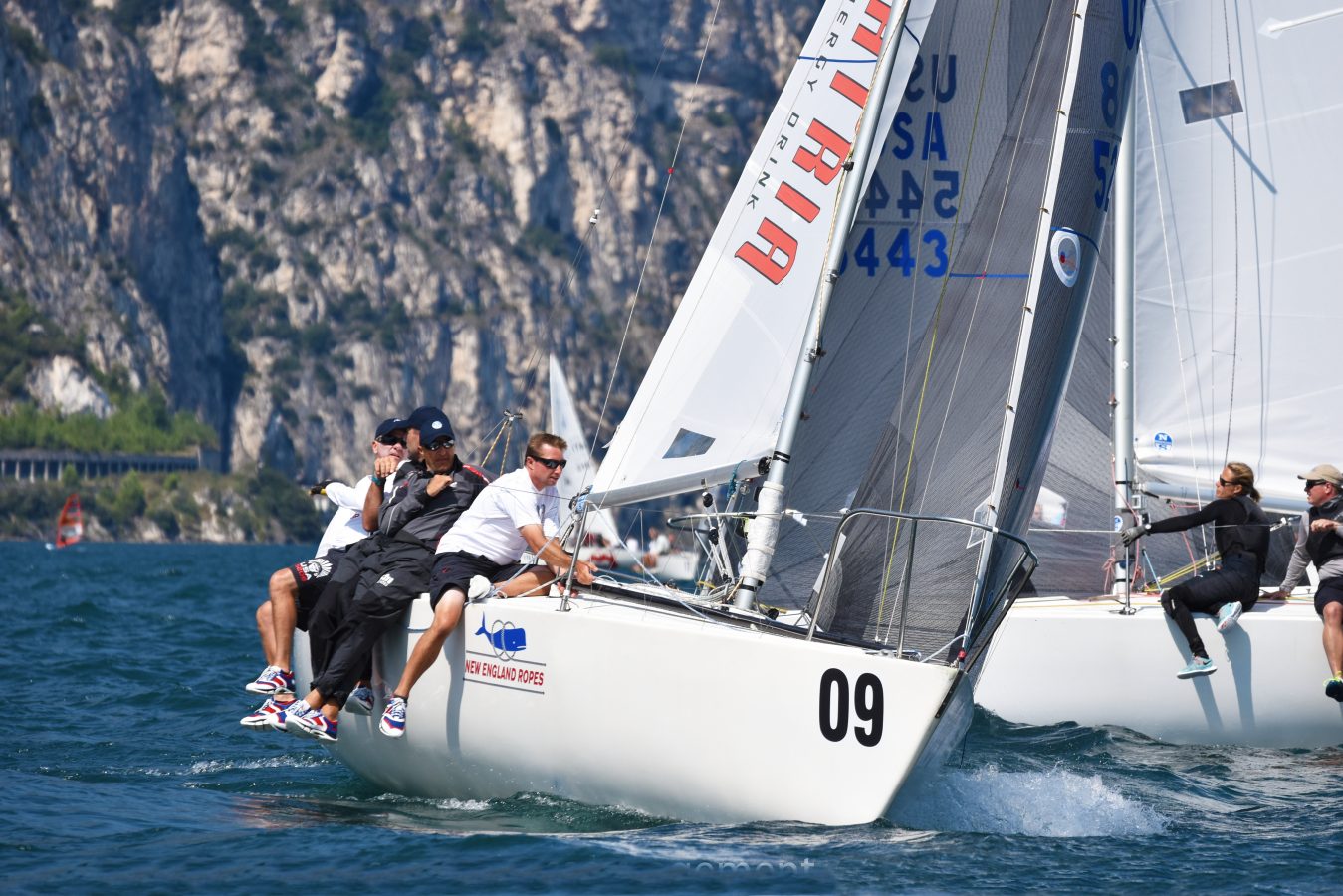
2018 J/24 WORLDS INTERVIEW
SPOTLIGHT: WILL WELLES, J24 WORLD CHAMPION
North Sails Experts Dig for Will’s Secrets to Win the Worlds
Eighty-nine teams from fourteen countries attended the 40th edition of the J/24 World Championship held in Lake Garda, Italy. North Sails One Design expert Will Welles won his second J/24 world title, dominating the scoreboard from day one, scoring 47 points over the course of ten races. Congratulations to team Kaster and crew Nick Turney, Rich Bowen, Giuliano Cattarozzi, and Andrea Casale.
Another great achievement to be noted, Keith Whittemore’s Furio finished 3rd place overall to win the corinthian division. Teams powered by North finished 1,3,5,6,7,9,10.
The North experts had some interesting questions for Will upon his arrival home from Italy. Here is what he had to say:
From Mike Ingham:
It was mostly flat water and windy, where/how did you set your genoa leads?
We call “touch/touch” our base lead position, this is when you trim the sheet in the mid-leech of the genoa touches the spreader at the same time the foot touches the chainplate. With the flat water and breeze we were mostly one or two holes aft from base. If we ever felt super over powered we’d move the lead aft and vise versa, if we felt under powered we’d move the lead forward. Seemed most of the days you could trim the genoa fairly hard with the lead back. As much as two inches of the spreader.
You were able to sail well at the high end of the genoa when much of the fleet switched to jib. How are you able to make the genoa work at the upper end without being totally overpowered?
It’s a sort of dance for sure! The key is to manage the angle of heel at all costs. Start with feathering the boat into the breeze in the onset of the puff, if that is not enough you will need to ease the sails, mainsail and the genoa. In 20+ knots with the genoa you will most likely have the genoa eased out to the lifelines. The mainsheet is eased in the puff and then trimmed on afterwards, I’ll wind the genoa sheet in when I feel we can take it. The backstay is on hard as well as the vang, the shroud tension is at our maximum tuning guide setting.
From Zeke Horowitz:
Any tips for stepping into a charter boat for the first time and trying to get it all set up the way you like it?
We were lucky with our charter boat, it was a fast boat but we did our homework months in advance. With the help of a local friend we found a good boat, which is a start but then you need to do all your homework so you can be prepared once you arrive. The key is to not burn up sailing days with unforeseen boat work. I like detailed pictures of the boat, pictures speak a thousand words….you can see how the rigging is, blocks, cam cleats, keel, rudder, mast, etc. I also send a list of yes or no questions to the boat owner, this way it’s easier for them to just say yes or no. We prepared what we needed to bring to make sure the boat didn’t have gear failure…and we brought some of the things we like to have on the boat that may not be there…winch tops, tiller, something of that nature. We make the list, gather the items, and pray it all fits into your luggage!
We heard it was imperative to get a good start at the favored end so you could be one of the first boats to the geographical shift. How did you balance conservative strategies with being aggressive enough to be one of the first boats off the favored end?
Yes, the start! Where you started and being able to get onto port straight away was the key to success. Surely it seemed you needed to be in the fray to get a good position off the start. Garda isn’t a place you can be conservative and start down the line in a less congested area. It was dicey to say the least but a must! Most everyone who started on the right end knew the deal, once in awhile you’d get one or two boats that wouldn’t tack right away and that was death.
From Mike Marshall:
What was the base setup? Prebend? Forestay sag? Upper and lower tension?
Our base set up was the same as always, 20/15 (uppers/lowers) with the silver loos gauge model B, 2 ¼ prebend measured at the spreader and two fingers on the headstay (measured with Loos gauge B). Garda is known as a windy venue with flat water and the world’s week was no different. With the flat water and breeze we were faster to make the rig tighter, faster then if it was a windy wavey venue. We always set up the rig for the first beat and figured if the breeze dropped out then we’d be able to manage through. I seem to remember we mostly sailed at 29/27 on the shrouds. Sometimes a setting tighter and sometimes a setting lower.
From Chris Snow:
What model genoa did you pick for the event and why?
Stick with what you know! We used the DX-7TT genoa, also known as the “Newport Genoa”. The SD-TH and DX-7TT are close enough in shape that we feel we can make one look nearly like the other with halyard and lead position. I think the key is knowing your settings, when to go where with the sail controls we have available in a certain condition.
From Skip Dieball
What was your favorite dinner while in Italy?
Hands down the dinner we had at Guiliano’s house, what a beautiful spot he and his family have! Guiliano owns Kaster the boat we sailed.
What was your key to getting good starts?
We were very fortunate to get decent enough starts to go the way we wanted to the first beat. The key in Garda was to battle for the right side of the line. You needed to go right so even if you got a second row start with speed you could get onto port and drag race to the right. If you started down the line and couldn’t tack you were in a really tough spot, if you stared down the line and were able to tack all the boats that were right of you were ahead by the end of the beat. So we just worked hard in the fray, time, distance to the line and looking for a lane out straight away.
From Ched Proctor
When do you decide it’s time to “Go to the wall?”
It’s always time to go to the wall in Garda! I think the question is which wall? Andrea says nine times out of ten the right works. Seemed to be true!
Are you the first American skipper to win a major event on Lake Garda?
I’m not sure! We will need to research that, somehow I suspect not, there is a lot of major events held in Garda in all sorts of different classes. One thing for sure, there may not be a prettier place to race! There is great breeze in the morning out of the North, it dies around noontime and then the Southerly comes in the afternoon. If you like wind and raw beauty Garda is for you!
From Marnie Jenkins
Sailing in Italy….did you have wine or water on board?
Water of course! Lots of good wine around Garda though!
From Chuck Allen
Is Rich Bowen on steroids to trim that well at his age?
I don’t think Rich is on the steroids, he says he works out which is the key to get the genoa in along with good timing! I wondered if Rich might be the oldest trimmer to win the J/24 worlds…Brad Read thought Moose McClintock was!
READ MORE
READ MORE

WE HAVE MOVED! NEW LOCATION OPEN NOW
NORTH SAILS DETROIT
Find Your Dedicated Sales And Certified Service Team At Our New Location
North Sails is excited to announce the relocation of our loft in the Detroit metro area. Centrally located along the 696 and 94 expressways, the new facility led by local expert Karl Kuspa is designed specifically to fit the needs of our clients.
Karl is a ten time Bayview Mackinac Race winner who brings over thirty years of marine industry experience to the Detroit sales and service team. He and service manager Bill Lesnek have a wealth of knowledge and are looking forward to welcoming the local sailing community to their new location at 24777 Forterra Drive in Warren, MI 48089. The full service loft is open now with the expanded list of services available soon.
“We are super excited about the new location. We are centrally located so it will be easier for our customers. We also have the capability to do sail washing on-site, and our canvas production will have a larger dedicated space. These additions are making us a full service loft.”
- Karl Kuspa, Loft Manager, Detroit.
North Sails President Ken Read will be hosting a Grand Opening Party at the new loft on October 25. Save the date and RSVP to join Karl and Ken to celebrate the move.
Date: Thursday October 24th Time: 6pm Location: North Sails Detroit
READ MORE
READ MORE
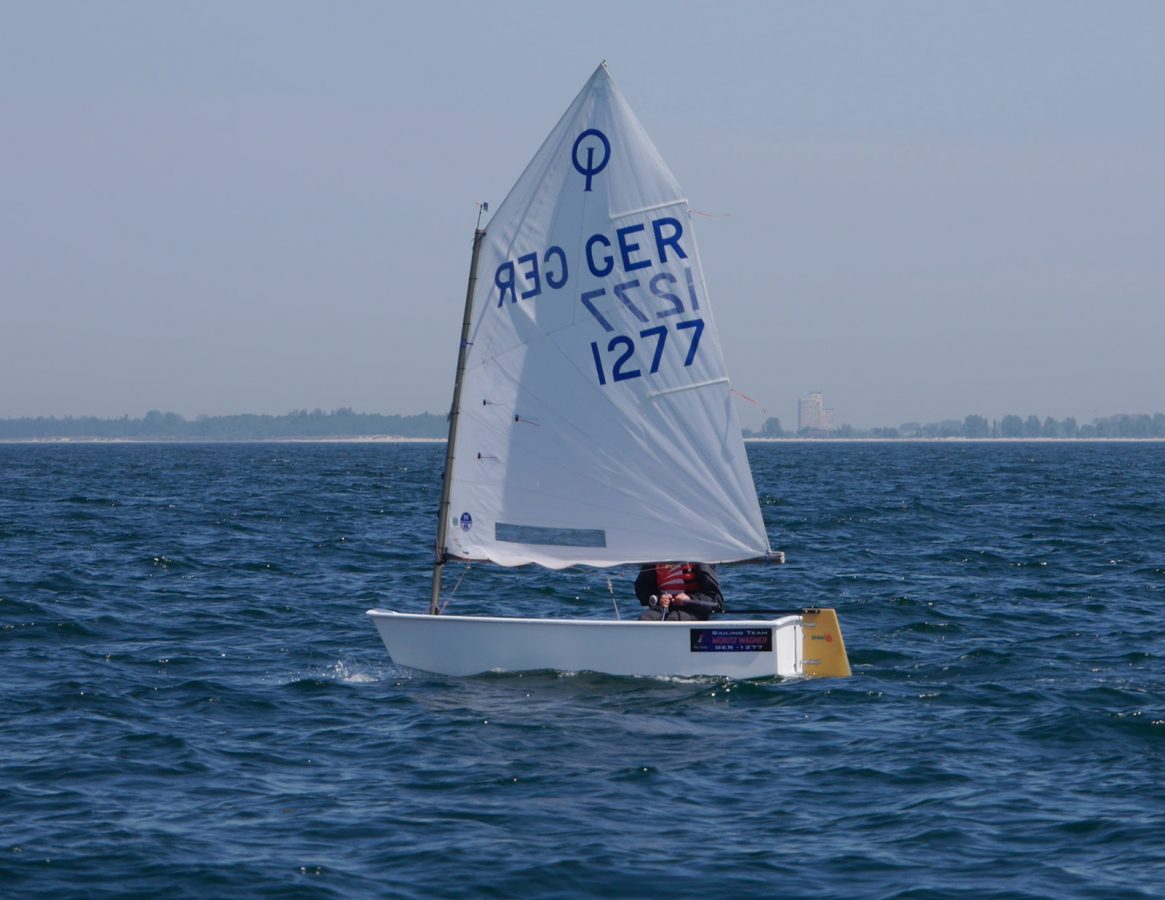
MORITZ WAGNER WIRD MIT NORTH SAILS BAYERISCHER MEISTER 2018 IM OPTIMIST
MORITZ WAGNER BAYRISCHER OPTI-MEISTER
Moritz Wagner gewinnt mit North Sails R2-Segel bayrische Meisterschaft im Optimist
Bei der Bayerischen Jugendmeisterschaft (sowie LJM Baden-Württemberg) am Starnberger See setzte sich Moritz nach sechs Rennen mit drei Laufsiegen im Feld der 57 Optisegler im Bayerischen Yacht-Club am Ende durch.
Mit seinem radialen R2-Segel konnte er bei sehr leichten Winden und flachen Wasser mit viel Feingefühl seinen vollen Bootsspeed ausnutzen.
Erblich vorbelastet (Großvater: Eckart Wagner, Gründer NS Europa und ehemaliger Präsident von North Sails, Mutter: Kristin Wagner, Vater: Kicker Schäfer) liebt der 11-jährige schon heute die Marke North Sails, die für ihn für schnelles Segeln steht und er hofft auf noch viele Erfolge mit North Sails
Mehr:
North Sails Optimist Tuning Guide
North Sails für Optimisten - unsere Segel
READ MORE
READ MORE
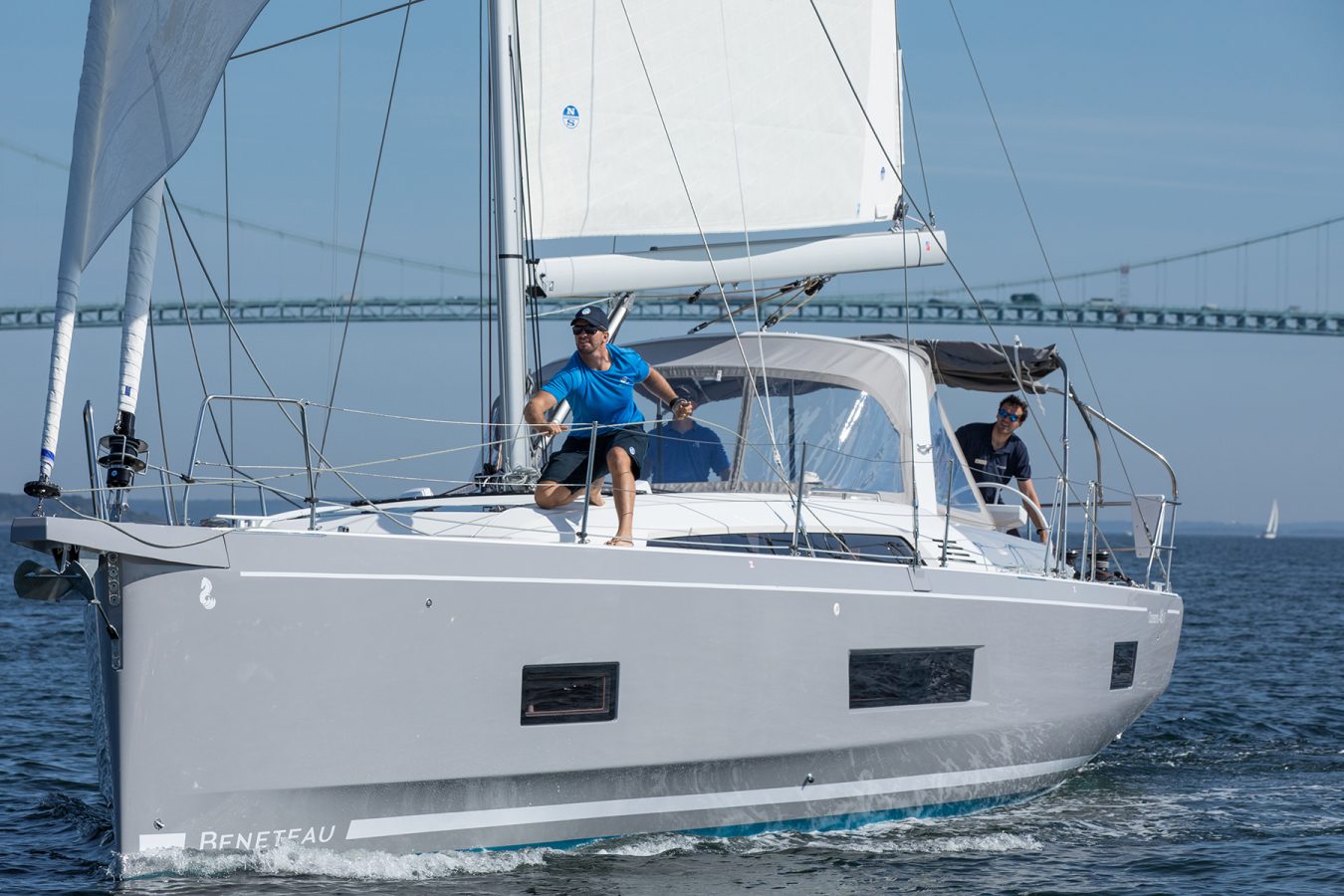
NORTH SAILS AND BENETEAU AMERICA SHOWCASE PRODUCT
North Sails officially launched a partnership with Beneteau America in Newport, Rhode Island at an exclusive event dedicated to showcasing their new sailboats. Five boats were sea-trialed by over 100 people—press, dealers, and potential buyers—during the weeklong event.
READ MORE
READ MORE
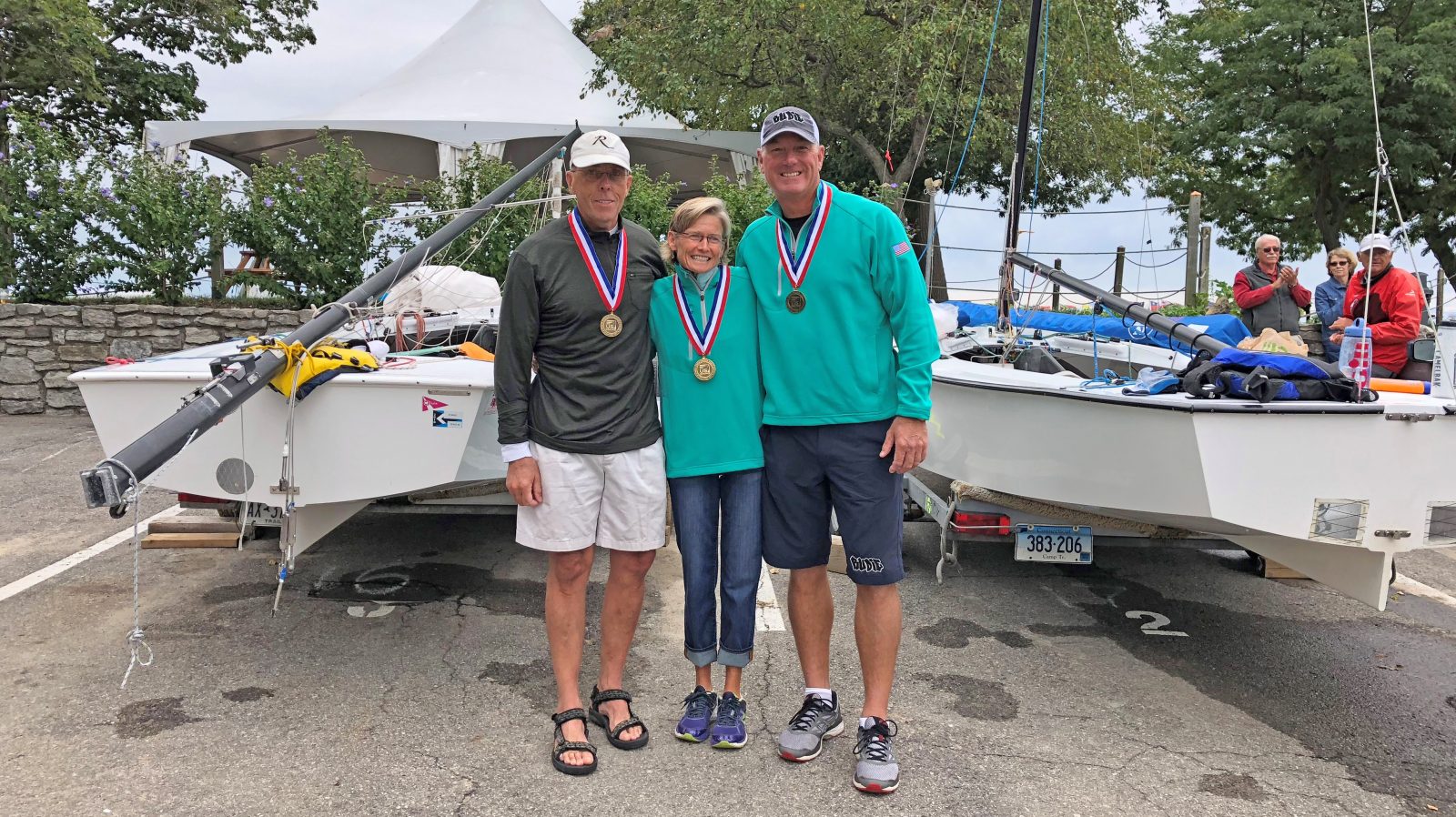
LIGHTNING US PANAM TRIALS
LIGHTNING PANAM TRIALS
Jody Starck, Iain Jones and Skip Dieball to Represent the USA in Lima
Congratulations to Jody Starck, Ian Jones and Skip Dieball on securing the US Lightning berth for the 2019 PanAm Games in Lima, Peru. Held at the Buffalo Canoe Club the weekend of September 7-9, the event had six of the eight races contested in “Peru-like” conditions with 15-25 mph winds.
The winning team scored six race wins along with a 2nd and a 6th to dominate the series and best the team of Allan Terhune, JoAnn Fisher and Jody Lutz by 12 points. 2015 PanAm Silver medalist Justin Coplan finished 3rd followed by current North American Champion Ched Proctor in 4th and current North American Masters Champion Tom Allen in 5th.
Dave Sprague as PRO did an excellent job of running races with courses featuring four windward leeward legs with no offset mark. This made the jibe-set timing crucial to positions in the race.
North Notes:
15 of the 45 sailors competing had either won a North American Championship or World Championship (or both) as a skipper or crew.
15 boats competed with the top 14 using full North inventories.
READ MORE
READ MORE
DETROIT GRAND OPENING PARTY, OCTOBER 25
GRAND OPENING WITH KEN READ
RSVP To Join Us In Celebrating Our New Location on October 25th at 6pm.
See You There! 24777 Forterra Drive, Warren, MI 48089
READ MORE
READ MORE
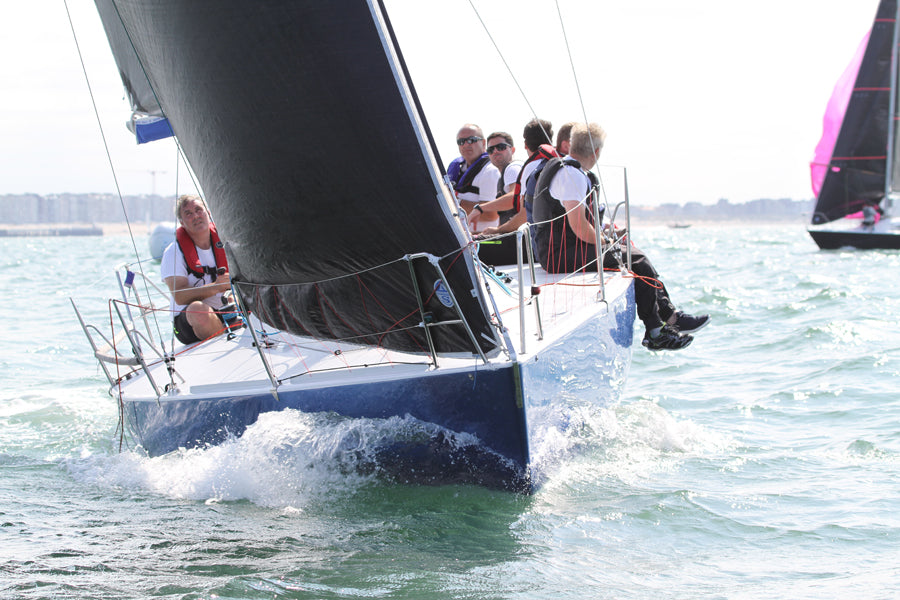
IRISH TEAMS DOMINATE THE HALF TON CUP
IRISH TEAMS DOMINATE THE HALF TON CUP
North Sails Clients Finish 1,2
© Fiona Brown
North Sails Ireland would like to congratulate our clients Dave Cullen, Jonny Swan and both teams crews for taking 1st and 2nd overall at the Half Ton Cup last week in Belgium.
The Half Ton Cup has been well supported by Irish teams for the last number of years and 2018 was no different. The week started with light winds and flat water and the breeze and waves slowly built throughout the week until the final two days saw some gusts of over 20 knots to test the crews.
Dave Cullen and his experienced team were a little slow out of the blocks in terms of their results, but once the breeze came in there was no stopping them. Congratulations to Dave and all the crew for a great performance and dominating the racing as the regatta unfolded.
I was lucky enough to be sailing with our latest Half Ton client Jonny Swan who recently made the step up to North Sails. Jonny was sailing with his regular crew from Howth with the addition of myself. His performance mirrored that of his club mates, starting off a bit shaky in the light airs but again showing great form when the breeze was up.
Second overall and Jonny’s best Half Ton Cup result to date since purchasing Harmony. This was also his first major Half Ton class regatta using North Sails. Only three and a half points separated the top two boats in the end but to be fair we never really felt like we could beat Dave as he often had a tiny edge we struggled to match.
Both boats were sailing with 100% 3Di upwind sails and V-Series Symmetrical spinnakers downwind.
Click here for more information about North Sails 3Di
© Fiona Brown
© Fiona Brown
READ MORE
READ MORE
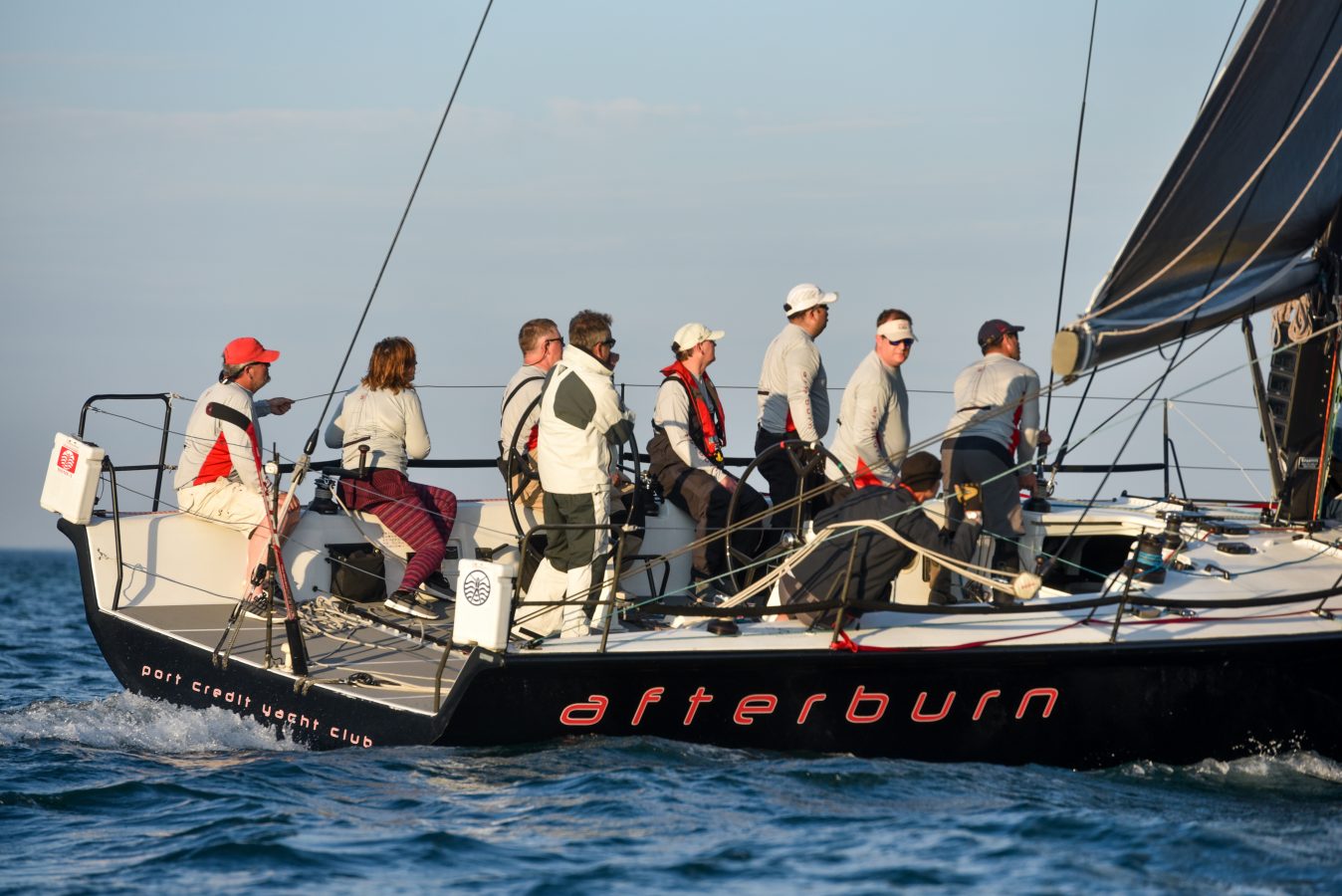
AFTERBURN WINS 300NM WITH NORTH SAILS 3Di
AFTERBURN WINS 300NM WITH NORTH SAILS 3Di
From Light Air To Match Racing, North Powers Lake Ontario 300 Challenge Winners
What was the mindset of the crew going into the race?
The team was excited for the LO300, it is always a challenging race and this is typically the highlight of our racing season.
Although the race was shaping up to be a longer race than previous years, our routing software was predicting we would finish between late morning and early evening on Monday. The good news for us was that we would not be facing a third night on the lake, just a slightly longer Monday than usual, since we would typically aim to finish by sunrise on Monday.
The team was positive and we felt well prepared, we had sailed a 65 mile tune up race the previous weekend which had allowed us to test and resolve some rigging issues and also let us fine tune our electronics displays for the data we needed available on deck in the LO300.
How did the game plan change due to the light air?
We made the decision to go with a smaller crew of 7 instead of our typical crew of 10. This saved us about 600lbs. in crew & gear weight; had a crew where each member could perform most of the positions on the boat. We made sure all extra gear was removed from the boat to keep weight down. We hauled the boat and cleaned the bottom several days prior to the race, we also swam in water to clean boat bottom, keel and rudder two hours prior to our start.
We went with a 30 minute helm schedule in order to keep our drivers fresh and focused in the light and challenging wind conditions. We rotated through five drivers which meant you wanted to make the most of your 30 minutes on the helm and you were itching to get back on when you came back up in the rotation.
Forecast was for a bubble of light air to form around Toronto in early afternoon, but there was to be better wind pressure to the east of Toronto although it was to move east down the lake as the day and evening progressed. Based on this forecast our aim was to get south of Toronto to avoid as much of the light air surrounding the city as possible and try to hook into the pressure to the east of the city, then work the boat as hard as possible to stay in that breeze all the way to Ford Shoal.
What role did sail changes play in your victory?
In the Susan Hood 75 mile long distance race earlier this year we identified the need to be able to execute spinnaker peels from our furling Code Zero to our Asymmetrical spinnakers (A1.5, A2 and A4), but at the time our Soto 40 was not setup to do this. Prior to the LO300 we rigged a second tack line and a second set of spinnaker sheets specifically for our furling Code 0 to allow us to perform spinnaker peels.
On the 130-mile second leg from the Humberview Mark to Ford Shoal our ability to perform these peels was key to our success on this leg and allowed us to stay with a breeze that was receding down the leg into Ford Shoal. It seemed like much of the race we were sailing at a true wind angle of 120 degrees, which in light winds of 4 to 10 knots is the cross over point from the Code 0 to the A1.5. On that leg we performed approximately 8 spinnaker peels in order to always have the best sail up for changing wind strength and angle and to keep the boat moving with the receding breeze.
How was this race a true test for your crew and sails?
The reality is that the Soto 40 is a grand prix level race boat and we are a crew of amateur sailors trying to figure out how to make the boat go fast and we are certainly having lots of fun as we learn.
Our boats strong point is off the wind when we have the spinnakers up, which was the first half of this race and we were able to establish a lead, the second half of the race coming back up the lake and with more upwind sailing was going to be our biggest test. We had boats with larger sail area and longer waterlines chasing us upwind on our return up the lake.
"To improve our Soto 40’s upwind performance we had added a new 3Di mainsail this season and this sail would be important, especially with the wind dead on the nose on the 40 mile stretch coming out of Main Duck Island to Point Petre at the west end of Prince Edward County. The main performed brilliantly, it had great shape and our main trimmers were able to keep the boat powered up along this upwind section. Learning the boat over the past two seasons the setup of the square top main has proved to be our biggest challenge."
In sailing with a small crew, everyone had to shift through most positions from helm, to sail trim, to tactics and navigation. One positive that came from this constant yet shifting involvement was that although the race was long all of our crew remained constantly engaged in the race.
Take us through the final leg when you were neck and neck with Esprit de Corps IV?
Not to make this out to be a completely light air LO300. Afterburn and the Volvo 60 Esprit de Corp IV were side by side (about 300m apart) and 12 miles out from the finish in Port Credit, we had been sailing with Code Zero’s trying to squeeze out speed from the 3 to 5 knots of patching Southern breeze that was flowing through the middle of the lake at midday. The wind started to back and both boats switched to asymmetrical spinnakers, the wind backed further and both boats gybed to a course heading to the finish at PCYC, the wind then rapidly built, within minutes it had gone from a light air drifter to a 30 to 35 knot blow. The Soto 40 quickly responded to the new breeze and accelerated to 20 knots with the puffs, and with only a few crew to hike we pushed the bow down to TWA of 158 degrees to help flatten out the boat. Because the breeze had built so quickly the lake was still flat water, we were blasting along keeping pace with the Volvo 60, both boats in a side by side drag race.
"For over 10 minutes we had sustained boat speed over 20 knots with a top speed of 25.58 knots, the Volvo topped out over 26 knots. This was a new top speed for us on the Soto 40."
After the initial excitement of the ride had settled in, we were faced with the realty that the new breeze had backed even further to the NE and we were now rapidly sailing towards Hamilton, 20 miles to the west of the finish. As a crew we quickly ran through our takedown procedure, in the next lull we doused the spinnaker, hoisted the jib and brought the bow up for a close reach sail for the final ten miles to the finish.
How has your performance improved compared to last year? What would you say are the contributing factors?
This is our third season with the Soto 40 and it has been a continual development process since acquiring the boat. I would say within the last month leading up to the race we finally began to feel that we had gotten to a solid baseline with the boat, its setup and its equipment.
This year we are finally focused on sailing the boat and working to make it go fast. We are getting much closer to our target speeds and are better able to fine tune the boat setup and gauge improvements. Our upwind sailing has seen the biggest improvements over last year, and that all starts with a new inventory of Jibs (J1, J2, J4) that were added at the start of last season and the new 3Di Main that we added this season.
"The new 3Di sails have great shape and our trimmers are better able to adjust and match the sail profiles between the main and jib for improved speed and performance. Upgrading the electronics and properly calibrating our boat speed and wind data now gives us the ability to sail to our target speeds and angles. Subsequently our crew has now gotten more time on the boat to work on trimming these new sails and learning which setups are fast in the various conditions."
As mentioned earlier our sail handling with the addition of furling for our Code 0 and FRO and the second tack line to allow us to perform spinnaker peels also allowed for better downwind performance.
READ MORE
READ MORE
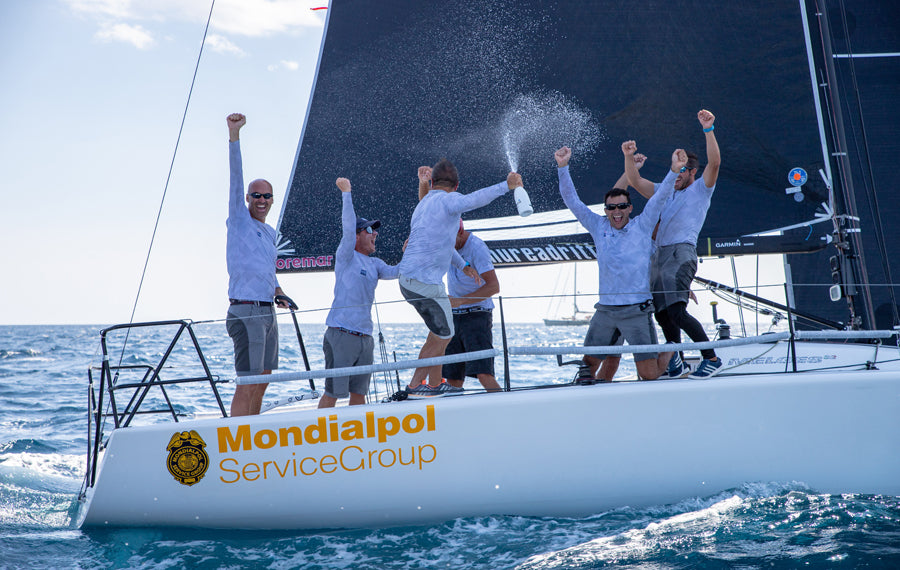
MELGES 32 GIOGI WINS 2018 WORLD LEAGUE
MELGES 32 GIOGI WINS 2018 WORLD LEAGUE
Winning the Final Event in Cagliari Seals Their 2018 Victory
The fourth and final event in the Melges 32 World League concluded in Cagliari, Italy with a podium sweep for teams using North Sails 3Di. Matteo Balestrero’s Giogi claimed the top spot for the event, which also sealed their overall victory for the 2018 season. Luigi Giannattasio’s Donino and Edoardo Lupi / Massimo Pessina’s Torpyone finished second and third. The first place Corinthian team was led by Martin Reintjes on Caipirinha; they also secured the 2018 Corinthian title.
The Melges World League is in its second year; hosting both the Melges 32 and Melges 20 in a season-long series of four regattas. “It has been successful because of the commitment from our owners, sailors, and partners like North Sails,” says Federico Michetti, head of Melges Europe.
Michetti was the visionary behind the Melges World League. He was also closely involved in the product development for North’s winning Melges 32 sails.
“Three of the top four boats in Cagliari used North Sails,” Michetti explains, “a reflection of how great the 3Di sails are. As trimmer on Giogi, I’m on the front line of providing feedback to the North design team. I love our sails and am proud to have played a part in the development of the One Design inventory.”
Michetti’s teammate on Giogi, Giulio Desiderato, sent North Sails regular updates throughout the season. We managed to catch up with Giulio to ask about their final victory.
Why was 2018 such a great season for Giogi?
Using an all-round inventory was the key to consistent performance. Out of four regattas that make up the World Series, Giogi won the last two!
“On Giogi, we improved day by day. It is Matteo Ballestrero’s third season helming the Melges 32, but three of us were new to the boat this year. The last two events we sailed as a strong team, always working together, because we were very determined to achieve our goal of winning the circuit.”
Has there been any development in the class this year?
We are using the same sail designs as everyone else; true one design. In past years the North Sails designers and engineers have worked hard to optimize the materials and layout of our 3Di designs. After the Worlds, we will collect feedback from the fleet to determine the improvements for the future designs.
Why is 3Di the best choice for the Melges 32?
As main trimmer, I am really confident matching the sails to the rig tune and adapting it for different conditions because there is a good mix between the design and the stability of the cloth.
What’s your top tip for sailing the Melges 32 fast?
Both upwind and downwind, choose the correct heel angle and keep it stable.
Full results
READ MORE
READ MORE
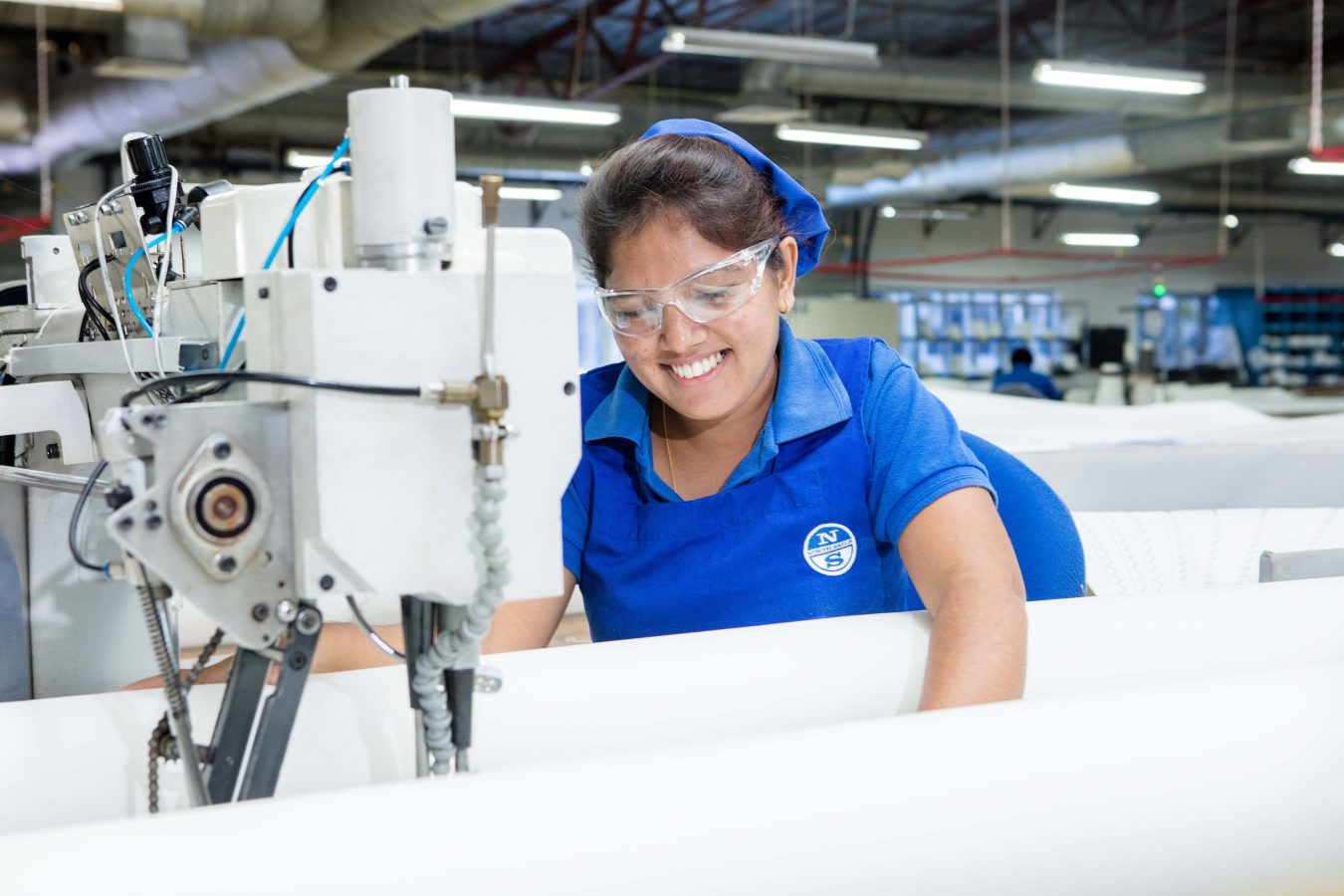
NORTH SAILS IN SRI LANKA AMONG 25 BEST PLACES TO WORK
NORTH SAILS IS A GREAT PLACE TO WORK
North Sails in Sri Lanka Among 25 Best Places to Work
A survey completed by the Great Place to Work Institute recognized North Sails Sri Lanka, a manufacturing center with 910 employees, as one of the 25 best places to work in Sri Lanka in 2018. This location, which produces one design sails as well as custom keelboat and 3D products, was identified as having a consistently positive worker experience. A high percentage of employees trust their leaders, enjoy the people they work with, and take pride in what they do. One hundred percent of the employees were surveyed, as part of a company culture audit.
“We were not focusing on achieving an award,” laughs Deepanie Mataraarachchi, a senior team leader who’s worked at the facility for two years. “We wanted to identify areas that can be further improved, to become even a better workplace. But the pride taken by the employees about how they are treated and how much the company respects the environment and gives back to society shone through. ”
The survey questions covered hiring and grievance practices, how well team leaders listen, training programs, work/life balance, and how the company supports and celebrates achievements. Team leaders decided to include the entire workforce to make sure everyone knew their voices were heard. It was an opportunity to assess company culture and communication—and also to evaluate areas that still needed improvement, Deepanie says. “We trust our employees a lot. Also they appreciate that we support Corporate Social Responsibility initiatives. Last year our team donated an ultrasound scanner to a local hospital. The people came and volunteered, collected money… we were able to raise a huge sum!”
The company received their prize at the Great Place To Work awards ceremony at the Hotel Hilton Colombo, Sri Lanka. They were also mentioned in the country’s most popular business magazine and by the Financial Times, along with other winners from IT, household goods, and hospital trades. “This recognition belongs to the entire team at North Sails Sri Lanka,” concludes Deepanie. “It is an honor to be recognized by our employees as an organization that fosters respect, trust and fairness. We are all very proud of what we are doing.”
READ MORE
READ MORE

2018 THISTLE NATIONALS
THISTLE NATIONALS
Interview with Brad Russell, 2018 National Champion
The 2018 Thistle National Championship was hosted by Cedar Point Yacht Club and their famous “Westport Mafia” hospitality provided a great time on shore. An amazing funk band, mafia night, and food trucks throughout the week kept everyone entertained and full. North Sails hosted a chalk talk each morning with Dave Dellenbaugh and Paul Abdullah with great attendance and participation. Rules expert Dave Perry was a guest on Tuesday and turned into a 5-hour marathon session during postponement ashore.
North-powered boats took all ten top spots on the scoreboard. Our Thistle expert Mike Ingham caught up with the new National champion Brad Russell for a quick interview:
First of all, congratulations on your 2018 Thistle National Championship! Start off with telling us something about your team.
I sailed with teammates Joe Hart and Terra Berlinski. Joe and I sailed together all year and have a great time on the boat together. He’s very physical on the boat, always has a positive attitude, and excels at painting the picture of what the fleet is doing, while this was the first time bringing Terra on board and she was an awesome addition with her positivity and being proactive on the boat. We were one of the heavier boats at around 500 lbs, but it didn’t seem to hurt us much even in the light air.
What were the conditions like?
Conditions varied greatly, with one race in very light air, two in heavy air, and four in light to moderate conditions
What sails did you use?
Our speed was excellent all week and in all conditions. We use a North Fisher main, Proctor jib, and Full Radial AirX500 spinnaker.
How were you set up?
The boat is setup to get overbend wrinkles halfway back the main window when fully trimmed. Our mast is 4-9-4 on the diamonds with the black Pro Loos gauge. We started the week with our forestay at 25 and moved it to 26 after Monday when the overbend wrinkles were slightly shy of the target. We didn’t use a shim on the mast step all week, but the step is shaved. After Wednesday I would have used a shim in any more races as our main was a little too full, but it was not windy enough, so we did not. Our rake was 27’ ½” and our prebend measured exactly 1” when the forestay was 25 and got slightly greater after tightening the forestay.
Any other trade secrets you would be willing to share?
We tried a few things during the week that were different than you see on most boats. In the moderate air we were trimming the jib quite hard, often over an inch inside the 10.5” tickler we use off the diamond. This only works because we use a jib leech tell tale to make sure there is still full flow between the two sails. The other thing was dropping the traveler some in heavy air, about 6-8”, to help neutralize the helm a bit.
Tell us more about that jib tale?
We felt as long as the leach tell tale kept flowing we could trim it in more. We kept experimenting with it further in and we were able to keep it flowing and it seemed fast.
You never won a race, and you were top 4 almost every race (except the last, but we will talk about that later). Tell us your strategy for the regatta and how you were able to be so consistent.
Our strategy all week was based on staying conservative and consistent. We try to sail defensively up the middle unless we are confident one side or the other will win. We rarely felt confident what side would win the first beat so we usually found ourselves trying to stay between the fleet. We would usually lose to a couple boats from the winning side, but we got to the top mark in the top 4 in all but one race. We would then try to sail fast and work with the boats around us on the reaches, instead of fighting with each other. Once the lead pack distances itself from the fleet there’s a little more freedom to fight with the boats immediately around you.
About that last race, you were winning going in, and multi time Thistle National Champ and Match Race Pro Dave Dellenbaugh needed to beat you and put some boats in-between to take the lead, that must have been pretty nerve racking, right?
The last race was really exciting, as Dave tried to match race us backwards through the fleet after we rounded the windward mark in 2nd and 3rd. After an extremely intense couple legs we only fell back to 7th. He wasn’t able to put enough boats between us to win the regatta. I never thought I’d be good enough for Dave Dellenbaugh to care to tack on me once, much less try to match race me backwards through a fleet, so that was pretty cool!
Congratulations again to Brad, Joe, and Terra!
READ MORE
READ MORE
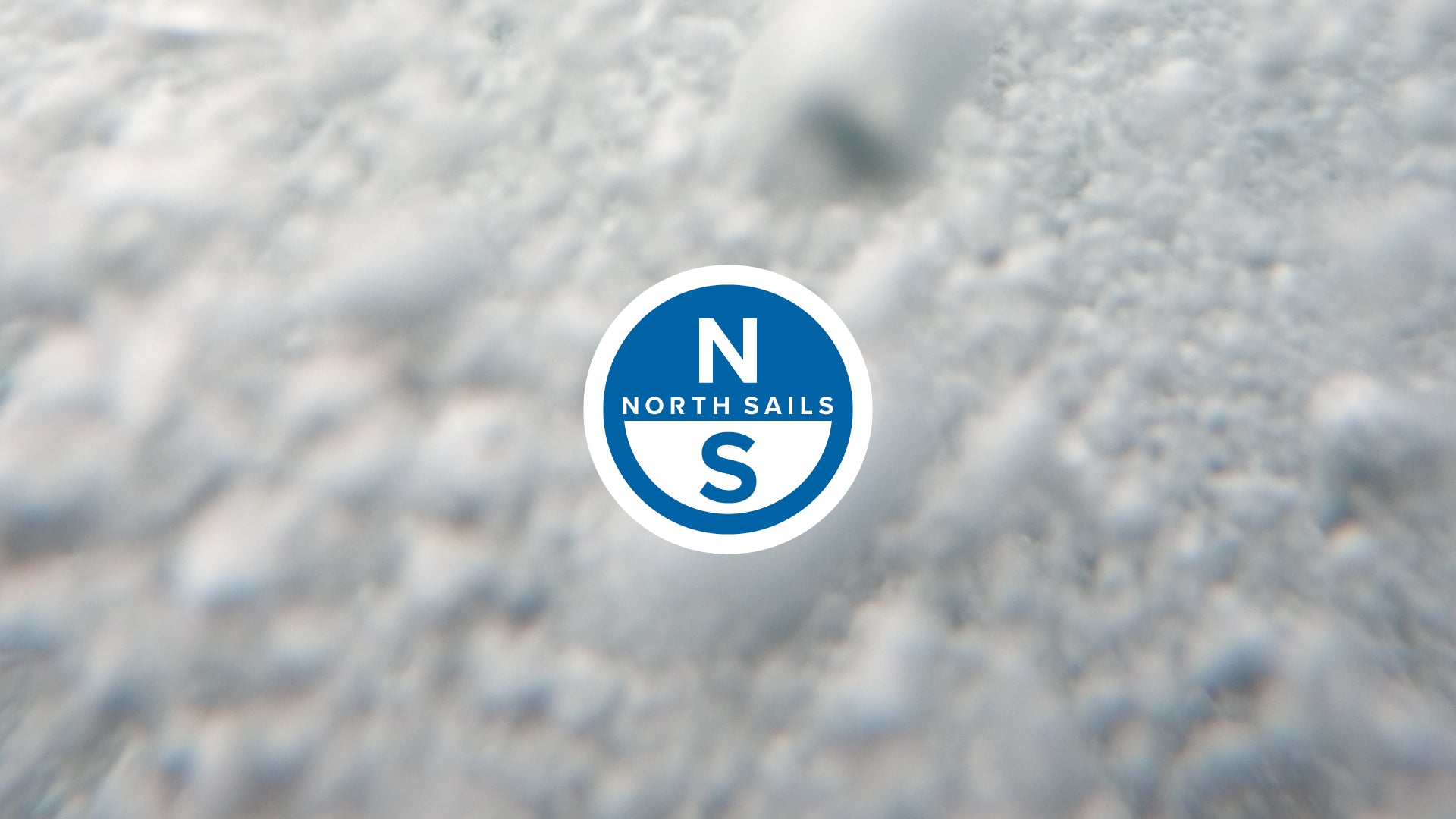
DRAGON SPEED GUIDE
North Sails experts Ruairidh “Rory” Scott and Theis Palm answer your Dragon speed and boathandling questions.
Who sails a Dragon?
Sailors in the International Dragon class are attracted to its classic looks and tweaky, idiosyncratic nature. They include a large group of amateur sailors who compete locally at clubs throughout Europe, especially in the UK, Germany, France, Italy, and Scandinavia. At the same time, there’s an extremely active international circuit that includes many pro sailors. The list of Corinthian-only crewed boats at most international events is usually as low as 20 percent of the entries. Some boats are professionally owned and driven, but most are owned and helmed by capable amateurs, supported by professional crew.
The International Dragon class attracts big fleets to race in picturesque venues throughout Europe. It also has many local fleet sailors who rarely travel to major events.
What’s involved in crewing?
The weight limit for the crew is 285 kilograms (627 pounds), and it’s very important to sail at, or close to, the limit. Most boats sail with three people - a 95 kilo average. Some sail with four, and recently there is a small trend in that direction because it’s difficult to find large enough people with the right skills. Sailing with four brings other challenges, though, as the boats don’t have a huge amount of room for the crew.
The boats are 8.9 metres long (29’ 2”) and weigh 1700 kilograms (3,700 pounds), and they are a physical challenge to sail. Upwind if you can hike harder for longer, you’ll go faster. There are no hiking lines or hiking aids but you can hang off ropes and anything else that’s already there for another purpose. When windy, the loads on these boats are substantial, and pumping the spinnaker or trimming the large genoa provides a workout.
What are three top Dragon speed tips?
Spend time with the same crew, learning how to sail the boat and adjust the mast controls for different conditions.
Work with your sailmaker to learn which sails work best with your mast in different conditions.
Straight-line boatspeed is vital. Beats are usually 2.5-miles; in the Gold Cup, races are 2.5 to 3 hours long.
What should buyers know when choosing a Dragon?
Strict rules in terms of hull measurement, stability and use of corrector weights if necessary help keep both new and used boats competitive. There are a massive number of good, used fiberglass boats available at roughly half the price of a new boat. Still, some two or three dozen new boats are built each year at Petticrows in the UK, or at PCT in Dubai (approximately £80,000-100,000). Cold-molded boats can also be very competitive and beautiful, but once you have refurbished them, they may cost you more than a new boat.
How do you launch a Dragon?
A Dragon weighs 1700 kg (about 3700 pounds) so a reasonably substantial tow vehicle is required. Launching is done with a single-point lifting crane. Launching from purpose-built trailers isn’t hard; you pull rig forward, clip on the crane, and launch. The mast can be stepped with a tripod stand. Three people can rig and launch a boat in an hour or so. Most boats travel with a single piece cover, and the spars ride along in separate bags.
How many sails are required?
There are no limits on the number of sails a competitor may purchase, but sailors are only allowed to register (“card”) eight sails per event. Most boats take four genoas, two mains, and two spinnakers.
North offers a range of different Dragon sails, both crosscut and with radial clews and heads; the latter were developed once cloth manufacturers began building more balanced Dacron cloth. Genoa designs cover the following wind ranges: light, up to 10 knots; medium, 6 to 18 knots; and heavy, 14 to 30 knots. North also has different mainsail designs for different class-legal masts, as well as varying spinnaker designs. On a race day (when no coach boat contact or spare sails on the water are allowed), it’s common to carry one spare spinnaker aboard and often a second genoa.
Dragon Tuning
What are the keys to rig set-up?
When tuning the Dragon, our focus is on getting the forestay length set correctly. (Details are provided in the North Dragon Tuning Guide) Then we adjust the tension on the uppers and lowers to Loos tension gauge numbers, depending on which builder’s mast is in the boat. After that, everything is relatively simple. Just under the deck, a mast ram powered by a lever system attaches to the aft face of the mast to move the mast fore and aft at the partners.
Tuning a Dragon starts with measuring forestay length and includes other complexities such as running backstays and adjustable shrouds that can be tensioned underway.
What are the most important control systems you have to learn?
Competitive boats have some remarkable control systems. For example, shroud tension can be adjusted below decks. And jumper tension has both coarse and fine-tune controls that can be adjusted individually, so you can achieve a certain tip fall-off or even move the mast tip to windward.
Unlike many one designs, Dragons have running backstays. Typically, boats have a 2:1 coarse adjustment under the stern deck, plus a fine tune that leads farther forward. Dragons used to have winches or highfield levers for the running backstays, but we recommend setting up cascade or other purchase systems, which is the way all new boats are rigged.
Another special system for genoa sheeting eliminates the need for a winch. The sheet is pulled through a barberhauler, turns below the side deck, and leads through a cleat mounted on a track. A fine-tune purchase pulls the cleat along the track to finish trimming the sail under full load. A recent refinement keeps the cleat open when the fine tune is off. As soon as you pull on the fine tune, the cleat grips the line, but when you release it to tack, it automatically releases the coarse-tune sheet as well.
Dragon Upwind Sailing
Upwind, where does the Dragon crew sit?
When it’s light, the helmsman sits to leeward or to windward, depending on preference. The forward crew (the genoa trimmer) sits to leeward on a bench and handles the sheet controls as well as adjusting halyard, barberhauler, and sheet fine-tunes. As soon as the breeze comes up, the trimmer will be hiking.
The Dragon has a sleek, low-profile hull and its genoa has large windows for safety.
For all conditions, the middle person sits to windward—in the boat or on the rail—so they can trim the mainsail. They control runner tension, mast ram, jumper position, traveler, mainsail tack, outhaul, and vang/kicker.
How do you trim the Dragon main upwind?
The main trimmer generally keeps the boom near centerline; as the mainsheet is trimmed, the traveler is eased slightly. The mainsheet helps bend the mast and flatten the main. Due to the size of the overlapping genoa, we do not vang-sheet.
Once the waves get bigger, the boats take time to accelerate so you want a twistier setup with softer sheet tension and a more open leech. The boats have keel-hung rudders, which will wobble around when sailing in chop. The rudder blade is big, so if you swing it around too much you’ll slow down due to the extra drag. Getting the boat balanced is very important, especially when it’s choppy.
How do you trim the Dragon genoa upwind?
The challenge when it’s light is to keep the boat moving quickly while still pointing well. Any time the wind changes, you need to adjust the sail first, slowly make the helm adjustment, then match sail trim to the new course. When lifted, for example, ease the genoa first; the helmsman comes up slowly, and genoa comes in to match. If the helmsman simply follows the genoa telltales instead, he’ll always be behind the curve, swinging too much rudder and going slowly.
When the breeze comes on, change your jib lead by using the barberhauler, which adjusts vertically at the aft end of cuddy. By easing the barberhauler up, you effectively move your lead aft and are able to sheet harder to flatten the sail. Over 20 knots, the second barberhauler pulls the lead a couple hundred mm farther outboard.
What’s the key to shifting gears when sailing upwind?
Runner tension is the most important control in shifting gears. In light winds, you sail with less tension on the runner to induce headstay sag and power up the genoa. As the breeze builds and you pull on more runner, tighten the mast ram to the maximum so the mast doesn’t overbend. If it does, you over-flatten the mainsail and lose some headstay tension at the same time. As it gets windier still, add lots of runner tension and ease the ram to bend the mast, but don’t overdo it or you will lose headstay tension when you really need it.
In a breeze, the three crew hike out and the boat begins to throw some spray.
What do top Dragon crews say to each other upwind?
The forward crew has the best view and will usually call puffs. The main trimmer will often ease a little mainsheet or lower the traveler a touch, which allows the driver to bear off slightly. The forward crew may ease the genoa sheet as well. Once you’ve accelerated, the helmsman or main trimmer will call for trimming the sheets back on.
If a big gust is called, the middle crew pulls runner on or lets traveler down, and the helmsman may point up a little. Then main and genoa are both trimmed a little harder. It’s important for all three crew to work together at all times.
The forward crew also must look through the genoa window, and the helm through the mainsail window; with the big genoa, the middle crew can’t see boats that are even with you on the other tack. This is different than on boats with smaller jibs and is extremely important to communicate about regularly.
Dragon Downwind Sailing
Downwind, where are Dragon crew located?
In light to moderate wind, keeping the bow down and the stern up is pretty fast. It also stabilizes the boat directionally, making the boat as long as possible. Whoever is
the tactician moves to the bow or by the mast downwind, watching the fleet, calling the wind, and holding the pole back at the shrouds. The spinnaker trimmer sits at the front of the cockpit on the windward side, and the helmsman sits aft on either side of the boat—typically to windward in 10-12 knots and above, and to leeward in light conditions for a flatter boat or leeward heel. When it’s breezy, we bring the forward person back to cockpit.
What’s unique about the Dragon when sailing downwind?
We ease the backstays and let the rig a long way forward; the more we can do that, the more directionally stable the boat will be. What’s really unique is what we call “flying the spinnaker”—the pole is too short, so as soon as the breeze gets up to 8 knots we ease the spinnaker up and away from it , squaring the pole to the shrouds and keeping the clews as level as possible, and flying the guy/brace as much as six feet away from the pole. This pushes the guy as far outboard as possible, but makes the sail less stable, so more skill is required to keep the sail under control. Body weight placement can help keep the sail full, for example, placing weight to windward to heel the boat when sailing a low course.
What are your general rules for sail trim on the Dragon downwind?
After setting the spinnaker, furl the genoa and let the mast ram go completely so the mast can shift forward. Ease the runners to move the rig forward at deck level as much as class rules allow. The tip will move a long way forward and separate the spinnaker from the main. Boats with an adjustable mainsail tack will ease off the tack.
We always try to keep the spinnaker clews spread as wide as possible and, as mentioned, away from the boat. The mainsail is eased out in most conditions, but trimmed slightly in light air (when not sailing dead downwind) and in strong breeze (for stability). Keep the top batten parallel with the boom. If the boat is rolling around in bad seas, use the vang/kicker to tighten the leech; if you need to sail lower, loosen it.
What do top Dragon crews say to each other downwind?
The trimmer and the driver talk about pressure on the spinnaker and how low the boat can be sailed. The bowman/tactician comments on the puffs and boats behind that might block your breeze. When surfing, there should be constant dialogue between trimmer and driver. The helmsman should pump the main if possible; otherwise, bring the bowman back to do it.
Dragon Boathandling
What are your top tips to starting a Dragon well?
Sail with the genoa furled and approach the line under main alone. When time and distance are right, unroll the genoa and accelerate. This takes practice but is far better than approaching the line with the big genoa luffing against the rig. In lighter winds, unroll the genoa sooner because it will take longer to get up to top speed.
Focus on keeping some flow over the rudder so you have control of the boat. You can easily sail a lot higher under main alone, but when you pull out genoa make sure the boat is aimed low enough so the genoa doesn’t backwind and force you to tack.
When it’s windy, it’s hard to sail the boat slowly. Sail as high as possible, until it’s time to put bow down and accelerate. Don’t over-ease the mainsheet or the bow will get blown to leeward.
Top teams line up for the start, sailing as slowly as possible with genoas furled, until it’s time to accelerate in the final seconds of the countdown.
What are the keys to tacking a Dragon well?
The mistake that everybody makes in the Dragon is to release the genoa sheet too early. The sail has such a big overlap that the clew has to go a long way forward to get around the rig. The best technique is to ease the sheet a little but only release it once the sail backs against the rig. Then the wind will blow the sail around and out to leeward, and the trimmer will pull it back in on the new tack. In less than 6 knots, another option is to furl the genoa as you start to tack.
One crew does both the release and the trim, and it takes coordination and strength. Bring in as much as possible with the coarse-tune genoa sheet before switching to the fine-tune. When it’s windy, there’s so much pressure on the genoa sheet cleat, it’s important to get the genoa trimmed and cleated quickly before switching to the fine tune. The helmsman should avoid coming out of the tack too low and making the trimmer’s job that much harder.
When steering through a tack in flat water, you can steer more slowly at first to maximize VMG to windward. If you’re sailing in waves, you have to turn quickly so the boat doesn’t slow down too much. The trick that we find very useful is to center the tiller at the moment the boat straightens up and the mainsail begins to tack. It takes the boat a while to stop turning, and the momentum of the genoa, pushing against the rig, will carry the boat through to your new close-hauled course. It’s very easy to over-tack a Dragon, and yet it’s better to steer too far than not enough. If the genoa doesn’t blow outside of the leeward shroud, you’ll lose speed quickly.
The middle crew has plenty to do on tacks as well—mainsheet, traveler, jumpers and runners—although some helms will assist. In a light-air tack, getting the traveler moved up to the new weather side is the top priority. Ease a bit of mainsheet. In heavy air, the runners are top priority.
As wind and waves build, the Dragon displaces more and more water.
What are the keys to setting the spinnaker on the Dragon?
Until recently, Dragons were rigged to set the chute from a small hatch up on the bow, which made sets simple (but made takedowns tricky). The basic drill was to pull the chute up as the sheet and guy came back, and furl the genoa quickly so the chute didn’t collapse. Now that we drop the spinnaker into the cockpit, it’s very important before the set to sneak the guy/brace out as far as possible.
What are the keys to jibing a Dragon well?
Poor timing is the worst mistake Dragon crews make in jibes. The boats like to rock and roll downwind, so you need to time the turn so the boom crosses easily. If you try to turn the boat down when it naturally wants to turn up, you’ll fight the helm, then oversteer while the boat rocks and rolls, and in the process the boat slows down. Always initiate your jibe when surfing down a wave or naturally turning to leeward and rolling to windward.
The forward crew handles the spinnaker pole and the middle crew and helm manage the sheets and runners. When it’s windy, the spinnaker trimmer will sometimes cleat the spinnaker and help the helmsman pull the main over. With inline spreaders, the masts are bendy enough that they need the support of the runners. Trim the main in a little before the jibe; as you pull the main across, haul in the new runner and ease the old runner as soon as possible. The topmast backstay holds the rig for a fraction of second, but we don’t like to rely on it for long. Needless to say, sailing with four makes the jibes easier.
In light-air jibes, the topmast backstay supports the rig just fine, so you can let both runners off. The key is to rotate the spinnaker around so it stays flying. In 7 or 8 knots, the guy/brace will be at the pole. In 8 to 10 knots and above, you’ll come out of the jibe with the tack of the spinnaker at the pole, then slowly ease it away from the boat again.
What are the keys to a good spinnaker takedown?
Taking the chute down into the cockpit is much safer. We always pull it down on the port side to be ready for the next set; let the starboard sheet go, pull the chute around the bow, let the halyard go, and pull the sail down quickly. Dousing the spinnaker through the front hatch with the retrieval-line system is fraught with danger if you still have that set-up; to avoid dropping the sail in the water, it’s necessary to spread the spinnaker down one side of the boat or the other before pulling the sail into the hatch.
How easily does a Dragon broach?
All Dragons have automatic, battery-powered bilge pumps; on a windy day, the boats are wet enough that the pumps are always working. We also carry manual bilge pumps and two buckets. If you rock and roll too hard downwind you can broach to windward and swamp the boat. If the water-tight hatches are in place, the boat will stay afloat; in theory, there is sufficient reserve buoyancy to stay afloat while you and the pumps get rid of the water. As a practical matter, with the Dragon’s low freeboard, that’s difficult when waves can bring water aboard at the same rate that you get it out.
What’s the coolest thing about the Dragon class?
Take your pick. You can sail Saturday at the club or compete for the Gold Cup in another country against the best sailors in the world.
READ MORE
READ MORE

OPTIMIST - C'EST LA QUE TOUT COMMENCE !
OPTIMIST - C’EST LA QUE TOUT COMMENCE
Tous les marins du monde ont débuté sur cette coque de noix et c’est à son bord que les gamins y apprennent les premiers rudiments de la navigation avant de tirer, à sa barre, leurs premiers bords en régate. L’Optimist représente bien évidemment un marché important également pour North Sails, mais paradoxalement aussi compliqué que le bateau est simple.
"L’impact faible du matériel dans la performance, le niveau extrêmement élevé et resserré et la sensibilité forte aux" effets de mode "de cette classe, en sont les principales raisons", explique Gaëtan Aunette, le spécialiste du One Design en France chez North Sails.
"Pour autant North Sails est toujours demeuré aux avant-postes mème si en France par exemple, nous avions un peu perdu le leadership ces dernières saisons. Mais avec l’arrivée il y a 2 ans de nouveaux modèles américains (MZX4 et MZX5) et japonais (R1, R2 et R4), nous avons refait une partie de notre retard et nous recommençons à gagner des régates. Plus que dans toute autre discipline, le rôle des entraineurs et des prescripteurs est également fondamental : ils doivent pousser à la performance tout en développant la passion et favoriser l’épanouissement des enfants. En cela quelqu’un comme Michel Gaveau est très important pour nous. Il fait partie de ces personnes « qui comptent » dans le paysage de la voile légère en France et plus particulièrement dans le Sud où il opère à la fois comme consultant mais également comme revendeur North Sails One Design."
L’espoir à suivre : Zou Schemmel
Issu d’une famille de régatier en voile légère, Zou est dans le top Ten français et a participé fin aout au championnat du monde à Chypre où il a terminé XXПme sur xxx, avec notamment une manche de 4, ce qui lui permet d’être en rond Or. Il navigue en North Sails depuis le début de sa courte carrière et utilise une voile R2.
Zou Schemmel : "Je suis content de mes voiles. Je vais super vite avec, surtout au portant, et j’ai de bonnes sensations."
READ MORE
READ MORE
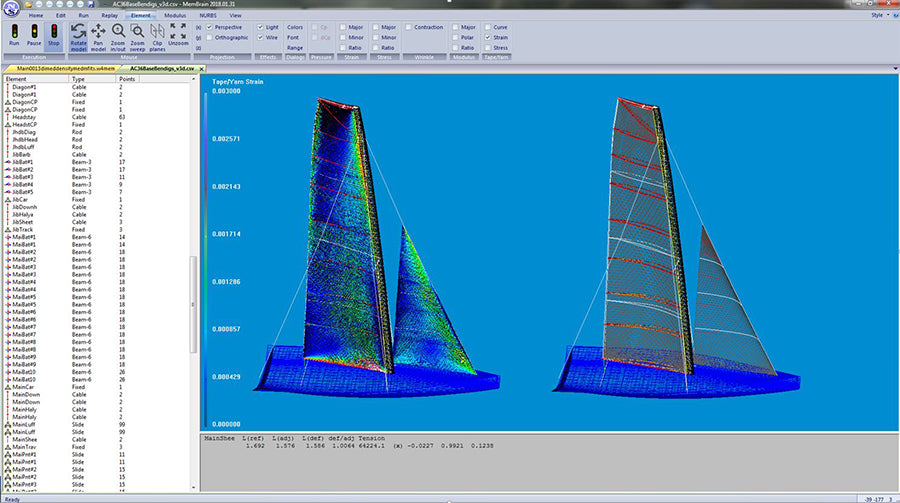
LA R&D BY NORTH SAILS FRANCE
LA R&D BY NORTH SAILS FRANCE
Nouvelles manières de naviguer mais également de concevoir les bateaux : en une vingtaine d’années l’univers de la voile a considérablement évolué.
Modele élément fini FSI (Fluid structure interaction) Formes volantes d´un gréement avec voiles épaisses de jauge AC36 à gauche : avec représentation des allongements dans les membranes.
Le cabinet d’architecte naval traditionnel intervenant uniquement en maîtrise d’oeuvre avec ses prestataires, et notamment voilier, n’existe plus : aujourd’hui il est inconcevable de penser le développement d’un bateau performant sans s’entourer au préalable d’une équipe projet constituée d’experts dans leurs domaines respectifs. C’est ainsi que, fort d’un savoir-faire et d’outils uniques, North Sails se positionne comme un partenaire essentiel et performant.
Chez North Sails, nous disposons à la fois des compétences humaines et des outils de simulation numérique exclusifs que nous avons développés, explique Gautier Sergent, responsable R&D chez North Sails.
La remise en question est permanente tant dans les outils eux mêmes que dans leur utilisation, et nos clients nous sollicitent sur des sujets de plus en plus divers.
Nous béneficions également de ressources de connaissances incomparables issues de nos collaborations groupe sur les plus grands projets nautiques, Coupe de l'America, Volvo Ocean Race, IMOCA, Ulltimes, Séries Grand Prix type RC44 ou TP52, et autres Super Yachts, et ce depuis plusieurs décennies.
Image post processing d’un calcul CFD RANS sur l'ensemble plan de voilure / plateforme. Permet non seulement de quantifier les efforts aéro sur chaque élément mais aussi leurs interactions. On représente ici les pressions. Cela alimente ensuite le VPP pour la partie aéro.
Enfin, et c’est propre à la France, nous avons la chance d’avoir un bureau d’étude où se côtoient des profils de culture, d’expériences et de sensibilités très différents, des plus pratiques au plus numériques. Nous veillons à toujours être en capacité de mêler simulations et expériences pour nourrir des reflexions que nous voulons constructives. Grâce à la qualité des données issues de nos calculs mais aussi et surtout à la capacité de nos équipes à les interpréter, nous permettons à nos clients d’aller plus loin et plus vite.
En termes d’outils, nous développons continuellement en interne nos propres logiciels ce qui nous permet d’être très réactifs face aux challenges technologiques proposés, des ailes rigides au profils épais, ou encore l'impact des superstructures sur la performance aéro pour des bateaux toujours plus rapides.
North Sails VPP interface graphique. A gauche : tous les paramètres de contrôle actifs et leurs valeurs. A droite : image représentative de ces réglages : formes des voiles, angles de tir, gite, foils, etc. Il s'agit ici d'un IMOCA générique a foils. Le VPP North Sails bénéficie d’une très belle interface utilisateur ce qui permet le dialogue intuitif et graphique avec les marins et architectes. On, est très loin d’un sombre feuillet de calcul noirci de chiffres…
READ MORE
READ MORE
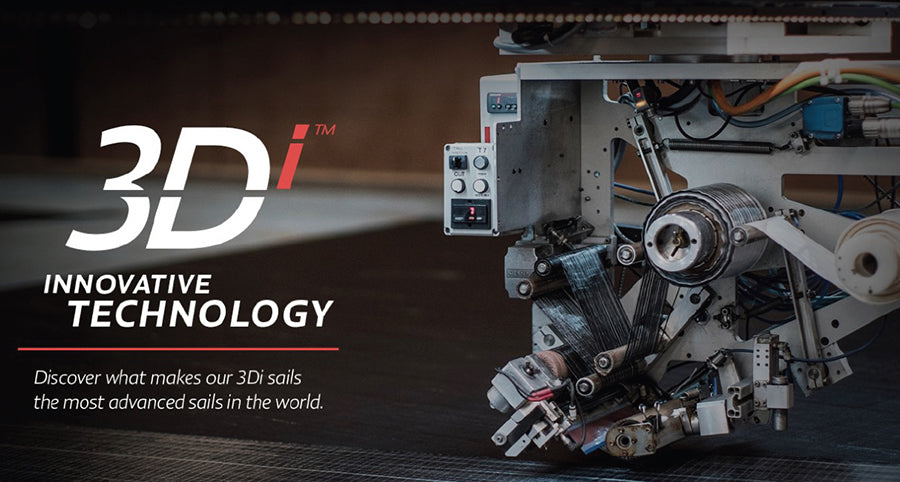
3Di™ : UN PRODUIT POUR CHAQUE USAGE.
3Di™ : UN PRODUIT POUR CHAQUE USAGE
Moins de déformation, plus de performance et une durée de vie accrue : voilà ce que tout marin demande à une voile. Le 3Di™ répond à toutes ces exigences. Aujourd’hui maîtrisée, cette technologie unique permet à North Sails d’offrir une gamme complète de voiles de haut niveau adaptèe à chaque besoin.
Greg EVRARD : "Remettre le point sur le i… "
"Le 3Di™ n’est pas un produit mais un process. Le nom 3Di™ est aujourd’hui connu mais on s’aperçoit qu’il existe un réel flou sur ce qui se cache derrière. Pour faire simple, on peut dire que ce process permet de travailler les matériaux à l’échelle filamentaire en trois dimensions : sur 2 axes pour l’orientation des fibres et sur un troisième pour l’épaisseur. Dès lors, toute la matière consommée (filaments et rèsine thermoset) est utilisèe de façon optimale. En outre, le 3Di n’ayant pas recours à une quelconque lamination, le risque de délamination devient nul. Enfin, les voiles sont moulées en 3D. Pour résumer, c’est tout simplement aujourd’hui la manière la plus efficiente de mettre en oeuvre un ou plusieurs matèriaux pour la production d’une voile. Cette technologie unique, exclusivité de North Sails, a été développée et éprouvée depuis 10 ans au plus haut niveau de la régate et de la course au large. Ses avantages sont tels que North Sails estime aujourd’hui devoir la rendre accessible au plus grand nombre de navigateurs possible, en l’adaptant à différents usages et besoins."
3Di ENDURANCE
RAPIDE, ROBUSTE, POLYVALENT
Comme son nom l’indique, le 3Di ENDURANCE est la version la plus "robuste" du 3Di grâce à des couches de surface plus résistantes, idéal pour la grande croisière ou la course au large.
• 760 UltraPE / Aramid pour une meilleure durabilité
• 780 UltraPE / Carbon pour une meilleure tenue de forme
• Gris clair, gris foncé ou noir
3Di RAW
LA PERFORMANCE SANS COMPROMIS
RAW représente la technologie 3Di dans sa forme la plus pure. La structure composite d’une voile 3Di RAW est composée de multiples bandelettes de filaments pour offrir le meilleur ratio stabilité / poids. Utilisé par les prototypes et les monotypes les plus exigeants
• 760 UltraPE / Aramid pour une meilleure durabilité
• 780 UltraPE / Carbon pour une meilleure tenue de forme
• 870 et 880 Carbon / Ultra PE pour la performance maximale, 880 très chargé en carbone.
• Noir
3Di NORDAC
LA VOILE DACRON DE CROISIйRE RГINVENTГE
Il allie la technologie 3Di™ et le polyester. Dédié aux unités de 20’ à 45’, il offre la possibilité d’avoir des voiles dont la structure en 3D assure une stabilité de forme, une esthétique et une robustesse inconnues jusqu’alors en croisiàre.
• 100% Polyester
• Pour les unités de croisière dont le P < 17 m
• Blanc uniquement
READ MORE
READ MORE
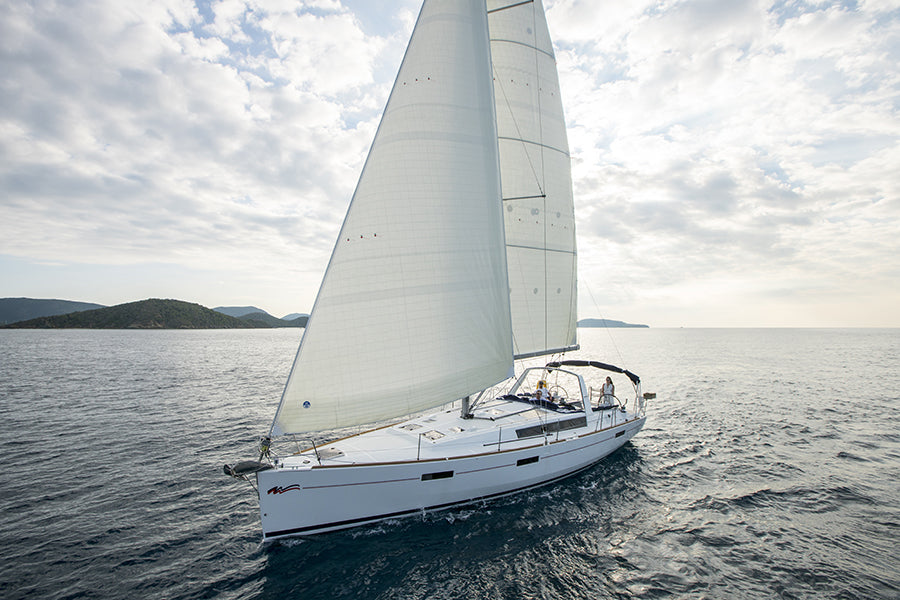
3Di NORDAC - TESTÉ ET APPROUVÉ
3Di NORDAC - TESTÉ ET APPROUVÈ
Présenté au public en juin 2017, le 3Di NORDAC™ s’est imposé en un peu plus d’un an comme un nouveau produit référence dans l’univers de la croisiére. Plébiscité pour ses exceptionnelles qualités, il a généré une demande telle qu’il a pu parfois étre victime de son succés. Retour sur un phénoméne qui ne fait que commencer…
3Di NORDAC™ : une avancée technologique incontestable
En juin 2017, North Sails a lancé la commercialisation des voiles en 3Di NORDAC™ spécialement conçues pour la croisiére. Ces derniéres reprennent le méme procédé technique que celui déjà utilisé depuis plusieurs années pour les voiles destinées aux bateaux de course. Seul le matériau change. Les filaments utilisés dans le 3Di étaient jusqu'à présent un mélange d'Aramide, de Dyneema ou de carbone. Dans le 3Di NORDAC™, il s'agit de polyester. Comme toutes les voiles 3Di™, ces voiles en 3Di NORDAC™ se distinguent par l'absence de couture et de panneaux mais aussi et surtout par une structure optimisée.
"A poidségale, une voile 3Di NORDAC™ sera toujours plus stable qu’une autre voile en polyester ou dacron, insiste Greg Evrard. A stabilité équivalente, elle sera plus légère et plus souple et vieillira bien mieux. A nous d’offrir le compromis optimum adapté à chaque usage."
Un véritable plébiscite !
Ergonomie, longévité, plaisir de la performance et prix compétitif : ceux qui s’y sont intéressés ont très vite été convaincus par le 3Di NORDAC™. En 1 an, plus de 1500 voiles ont été vendues à l'échelle du globe pour un CA de quelques 4,5 M€ . En France, près de 200 voiles ont généré plus de 500.000 € de CA sur la mème période. Unités de 20 à 45’, bateaux récents mais également plus anciens, monocoques ou multicoques : les profils de clients sont aussi divers qu’ils sont nombreux.
"Certaines voiles ont traversé l’Atlantique dans des conditions ventées sans aucun souci, complàte Greg Evrard. Mème si nous étions confiants dans la qualité de ce produit, nous devons admettre que nous ne nous attendions pas à un tel succès commercial. C’est évidemment plaisant mais cela a génvré quelques désagréments liés à des retards de livraison. Cela n’est pas dans nos habitudes et nous faisons évidemment tout notre possible pour limiter les dérapages et continuer à augmenter notre capacité de production."
Et ce n’est qu’un début…
Avec le 3Di NORDAC™, NORTH SAILS frappe donc un grand coup sur le marché des voiles de croisière. Un créneau majeur sur lequel, paradoxalement, "nous avions été peu actif jusqu’à présent", sourit Greg Evrard.
"L'objectif est donc désormais de développer cette nouvelle clientèle et de la fidéliser par la qualité de nos produits et de notre accompagnement, comme nous l'avons fait sur d’autres segments. Car fort de ce nouveau produit à succés, la gamme 3Di ™ proposée par NORTH SAILS multiplie ses déclinaisons. Le projet est clairement de proposer la version la plus adaptée du 3Di ™ à chaque pratique, à chaque portefeuille" précise Greg Evrard. Nous pouvons parier sur l’apparition de nouveaux produits encore plus précisément adaptés à des usages donnés durant les prochains mois."
READ MORE
READ MORE
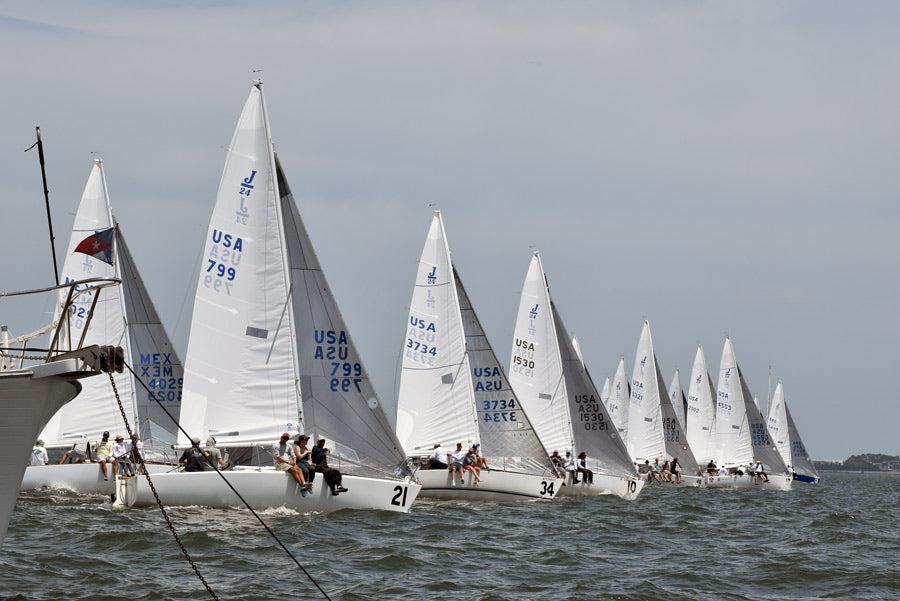
J24 SPEED GUIDE
Winning the world championship still means a lot in this class, and it’s remarkable how people come out of the woodwork to try to do that.
READ MORE
READ MORE
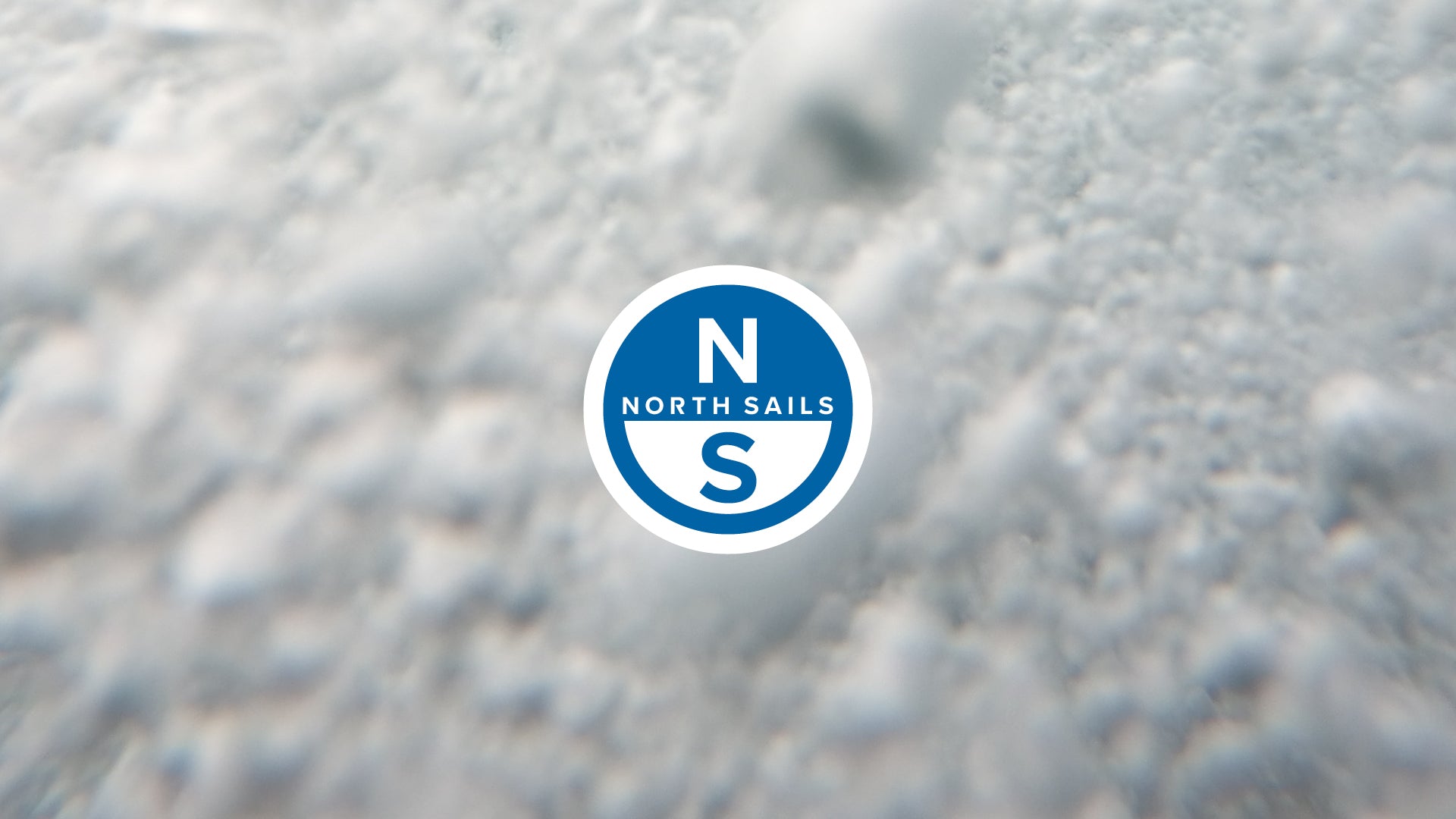
MELGES 24 SPEED GUIDE
Class leader Brian Janney answers your Melges 24 speed and boathandling questions.
Who sails in the Melges 24 class?
In the early 2000s, sailors in the Melges 24 class began to enlist coaches and include professional sailors in their crews, but that trend collapsed and participation dropped way off after 2009. Gradually, the class has been growing again and we are seeing an increasing number of Corinthian teams sailing at major events, using older boats. Local fleets are coming back in North America also, in places such as Vancouver, Western Michigan, and Atlanta. There are more regional regattas on the schedule, and they are by nature much more Corinthian. (Learn more at the International and North American class websites.)
How physical is the Melges 24 to sail?
The Melges 24 is a great boat if you like to be active when you sail. It requires athleticism, but not brute strength. The loads are not that high and there are no winches—ratchet blocks only. You have to hike hard, but since the class changed to shorter stanchions and tighter lifelines, hiking is less painful. Overall, it’s a good combination of keelboat and dinghy. In light air, it rewards roll tacking and jibing, but in heavy air it loads up like a keelboat and you have to think about the timing of your maneuvers.
Athletic sailing is the norm for Melges 24 crews, shown here after a start at the 2018 Melges 24 World Championship. Piret Salmistu/IMCA photo
What are the top 3 ingredients to compete successfully in the Melges 24?
Practice mark roundings—good sets and douses are key.
Practice light-air downspeed maneuvers—the pre-start under main alone is key.
Build a consistent crew—top performance is all about teamwork.
What is the ideal Melges 24 crew size?
Top teams sail at the max weight limit of 825 pounds (375 kilograms). The majority sail with five in the crew. Larger people sail with four.
Crews sail with four or five to meet the crew weight maximum of 825 pounds.
What does each crewmember do on the Melges 24?
The helm drives and handles mainsheet and backstay. The tactician trims the jib upwind and sometimes handles the mainsheet downwind. The spinnaker trimmer hikes upwind and hoists the chute if they are the biggest crewmember. On a boat sailing with five, the two forward crew furl the jib, douse the spinnaker, and handle the tack line and pole.
On boats sailing with four crew, the forward crew handles the tack line, jib furl, and spinnaker hoist/retrieval.
The tactician pulls the pole out and then grabs the spinnaker sheet, handing it off to the trimmer once the halyard is up.
New or used Melges 24s— what are my options?
A new Melges 24 costs in the $70,000 range and includes a trailer, covers, and an upgraded line package. The company periodically builds runs of four or five boats. As of 2018, hull numbers ran up to about #900. Used boats range from a 1990s boat for less than $20,000 to somewhat newer boats with covers and a trailer with dock boxes for about $30,000.
Beyond the basics, what kind of prep is needed to make a used boat competitive?
Older boats may need mast-step reinforcement or repair of stanchion bases. They may also need the new, shorter stanchions. The Melges 24 has a carbon-fiber rudder and keel. Look for a boat without dings in the foils, or be prepared to make repairs. We keep a close eye on the trailing edges of keel and rudder. When we trailer the boat, we pad the back of the keel with a pool noodle we’ve cut in half. Check for wear on normal gear as well, such as cam cleats.
The jib halyard system is unique and needs attention on all boats.
Instead of the usual separate forestay and jib halyard, the halyard connects to the wire in the luff of the jib, which then serves as the forestay. Where the wire goes over the halyard sheave, it can break strands on a windy day, so we recommend checking it after every windy day of sailing and replacing the wire frequently.
How do you transport the Melges 24?
Melges 24 trailers come from the builder with shaped supports. The boat rides about five feet off the road, at shoulder height. You put the boat in the water with the keel in the “up” position and then lower it with a “keel crane,” which fits into a molded socket right behind the keel. You can also ramp launch the boat if you wish.
What's involved in rigging and derigging the Melges 24?
To rig the Melges 24, first attach the shrouds, spreaders and backstay, then pull the halyards down from the top of mast. Because the mast is deck-stepped, two people can raise it. Rig the spinnaker halyard forward so it acts like a temporary forestay. A team that knows the process can be ready to launch within an hour. Once you’re in the water, put the keel down, fasten down the cover plate, and attach the rudder. There is a small gas outboard, so once that’s in position, you’re ready to go.
What kind of inventory does North recommend?
North offers the championship-winning 3Di mainsail and jib. There are two spinnaker designs, a reacher and a runner. You are allowed to carry two spinnakers, and most top teams will have one of each aboard. The reacher is used in planing conditions when you’ll spend more time sailing in a “bow up” mode. The runner was recently redesigned to be a bit twistier, allowing a larger crossover with the reacher.
Melges 24 Tuning
What are the most important ways to tune the Melges 24 rig?
Tuning the rig is described in detail in the North Melges 24 Tuning Guide. The key parameters are rake and shroud tension. Because the spreaders are swept aft, as you add tension to shrouds, the mast bends and becomes raked more. Unlike some classes, you’re allowed to adjust the shrouds while sailing; knowing the number of turns for each setting, the forward crew can make the adjustments while hiking. From the base setting to 20 knots, it’s 20 turns. Top boats have shifted to open-body turnbuckles because they’re twice as fast to adjust and easy to pin using a piece of batten held in place with shock cord.
This is the shockcord/batten for quick adjustment of turnbuckles. Photo courtesy APS
What are the key steps to setting up the rig?
The first step is to hoist the internal jib wire and set the rake at the turnbuckle above the Highfield lever. Rake is measured
from the top of the mast to the intersection of the transom and the bottom of the hull. This measurement should be 36’6.5” (11.140m).
Dial in the rake by adjusting the turnbuckle belowdecks. Photo courtesy APS
Next, add shroud tension until it is 16 on the Loos gauge. You may have to adjust the turnbuckle above the Highfield lever to maintain the proper rake adjustment. It helps to have two people to do this.
Are there other special considerations when setting up a Melges 24?
It’s easy to scratch or damage the keel when hauling and launching. The North Tuning Guide includes what to watch for there, as well as several tricks to marking control lines and setting up your deck.
Melges 24 Upwind Sailing
Upwind, where does the Melges 24 crew sit?
The normal or “base” crew position starts with the bow person a half-body width aft of the forward stanchion; all others sit close to the person in front of them. In light air, push the forward crew right up against the stanchion. As waves pick up, everyone moves aft until the aft crew is right against the aft stanchion. The tactician should be the first person to move off the rail in lighter air, so they can trim the jib and look around.
Even in light winds, the Melges 24's powerful sailplan requires the crew to hike.
What do you focus on when trimming main and jib?
Always watch the top telltale on the jib leech when sailing upwind. You can see it through the mainsail spreader window. The jib sheets are on a 2:1 purchase and go through a ratchet block. Two cleats, one on each side of the cockpit, make it possible to “banjo” the sheet in from the weather rail. Usually we don’t play the jib much.
Most upwind control is done with the main due to its large size. In the puffs, the helm pulls on backstay or drops the traveler. Few helmsman are strong enough to play mainsheet, although one class veteran, Brian Porter, can do it and is very fast. Tighten the backstay to keep the boat on its feet and ease when the puff rolls away. Have your forward crew count down to puffs; it really helps the person driving concentrate on boatspeed. Most boats have speedos now, and the helmsman can’t look around, although they do tell the tactician about traffic to leeward since they are facing inboard.
In 12 knots, your jib telltale can be stalling slightly; as it gets windier, ease the jib out half an inch. The jibs are pretty high aspect, and this will create more twist in the head and allow the telltales to stream more. You can also foot a little more, which increases your lift and helps you point.
Hiking as a team upwind in a breeze is vital in the lightweight Melges 24. Piret Salmistu/IMCA photo
Going upwind, how should the top telltale look on the Melges 24 mainsail?
The mains carry quite a bit of twist. In lighter air you’ll close the top of the main for power, but in 10 knots you’re close to overpowered so the top telltale should be streaming. Your helm should be light, nearly neutral, so if you make a change and it gets out of balance, you can tell right away.
What other trim settings should you look for upwind on the Melges 24?
Pay attention to shroud tension. My rule of thumb is to have 75 percent of the backstay on from 12 knots and up. The backstay purchase is at the feet of the helmsman and most people use a number scale on the deck behind that. If you are easing off a lot on the backstay, that means you need to ease shroud tension. If you are close to maximum backstay tension, try tightening the shrouds. We have our tactician watch for that, too.
Who is in the typical dialogue loop and what's a typical conversation?
Probably the most important upwind dialogue is a countdown to puffs—that’s key for the driver. If you don’t depower, the boat will tip over and do a little roundup.
In a good breeze downwind, a top crew slides aft and extends arms and torso outboard to maximize leverage. Piret Salmistu/IMCA photo
Melges 24 Downwind Sailing
Where does each person sit when sailing the Melges 24 downwind?
In lighter air, which we call “soak mode,” everybody pushes forward to get the transom out of the water. The tactician and one bow person are to leeward; everyone else sits to weather. As the breeze comes up, everyone moves to the high side and begins to slide aft. When the boat is on a full plane, everyone except the trimmer moves behind helmsman.
In light air downwind, the crew consolidates their weight at the forward end of the cockpit, with one crew to leeward in front of the chainplates.
What do you focus on when trimming the main and other sails?
The Melges 24 starts planing at about 14 knots, flying all three sails. We call it “lazy planing mode.” Everyone is pushed back against the aft stanchion, hip to hip. As the breeze comes up, move one person behind the stanchion; then move others aft as needed..
In most conditions, trim with a slightly firmer spinnaker luff—not over-trimmed, but not a lot of curl. In light air, ease the sheet and begin to “test” the curl a bit more. As you start planing, you have to trim in as the wind goes forward. Your spinnaker trimmer is sitting down at this point, and your tactician moves aft to trim the mainsheet—at least that’s the norm among tacticians with dinghy backgrounds.
In this Facebook video, the 2018 world champions demonstrate how to sail on a flat-out plane with three sails flying in a strong breeze on Lake Garda (on a day racing was canceled).
What are the key gear shifts in a Melges 24 as wind and sea state change?
The main question downwind is whether you can surf the waves or not. If you can readily plane, sail a couple degrees higher until the Melges 24 takes off. Some people try to force it too quickly and sail a lot of extra distance compared to those who sail lower and slower but cover much less distance. The boats have no wind instruments, so as the breeze builds, those who pick up on this transition first will make huge gains. You need to learn your transition point, which is right at about 14 knots of wind.
Who is in the dialogue loop downwind and what's a typical conversation?
Your spinnaker trimmer and helmsman should always talk about pressure in the spinnaker sheet—typically that means the spinnaker trimmer is talking, or the driver is asking the trimmer what they are feeling. Puff calling is the other key input to the conversation; that should be the same person who was calling the puffs when sailing upwind.
Are there special situations or techniques downwind in the Melges 24?
With the jib unfurled, it takes a little practice to get all three sails across in a jibe. It also requires coordination for the tactician to flip mainsheet over the helmsman’s head at the right time.
On the way to the offset mark, a Melges 24 crew preps the spinnaker to go up (at right) while continuing to hike the boat flat (at left). Piret Salmistu/IMCA photo
Melges 24 Boathandling
What's a typical Melges 24 start like?
Starts in the Melges 24 are more like dinghy starts than keelboat starts. Set up early, sail slowly, and jockey for position. Keep the jib furled and try to create a hole to leeward so you can unfurl, sheet in, and go. The boat accelerates quickly.
What makes a big difference on the starting line?
Set a minimum boatspeed, usually 2.5 knots. Any slower, and when you sheet in the boat will go sideways before it goes forward due to lack of flow over the keel. Velocitek speedos are allowed, so assign someone on to watch it and speak up if you’re slowing down too much. Assuming you have pinged the starting line, the Velocitek will also read the distance to the line.
What mistake slows the Melges 24 down most in a tack?
A key mistake is not coordinating how everyone gets off the rail. Hiking out, the crew is sitting hip to hip, so if the first person in doesn’t give others room it’s hard for everyone else to get off the rail. You can get pinned to the rail on a crash tack, which is a great reason to communicate when traffic is coming.
What does each crewmember do in a tack?
Normally, the helmsman handles the traveler and main, and the tactician tacks the jib. The rest of the crew scrambles to cross the boat in good form. The traveler usually stays fairly close to center, but in very light air it needs to move to windward. If the tactician can’t help, ask your smallest person to move behind the tactician and help.
Key tips for good light or heavy-air tacks in a Melges 24?
Making a smooth turn with the helm is important. It’s easy to over-rotate, and you don’t need to come out at a deep angle because the boats accelerate fast. The helm needs practice to learn exit angles. We put a mark on the jib sheet, draw a scale on the deck, and pull it in 90 percent of the way. After hitting the rail to hike out, the tactician leans in as soon as possible to banjo the jib sheet in the rest of the way
What mistake slows the Melges 24 down most in a jibe?
The key move on the jibe is properly rotating the spinnaker. In light air and up until the boat is lazy planing, make sure a forward person grabs the spinnaker sheet and pulls it around the headstay.
Here is a great video of a “blow-through” jibe in strong winds. Note the forward crew, briefly pulling the spinnaker leech in against the jib.
What does each crewmember do in a Melges 24 jibe?
The helm steers, the tactician deals with the mainsheet, the spinnaker trimmer handles both spinnaker sheets, and the forward person or people help overhaul the new sheet. In light air, the keys are to have quick hands on the spinnaker sheet and to come out at a good exit angle, sometimes a little hotter (higher) than you think. In heavy air, hitting the right exit angle is big and you make a slower turn. As you bear away, the helm watches the clew of the chute and pauses until the clew gets around the headstay, then finishes the turn. If the helm turns too fast, the spinnaker may get a wrap.
What is the key to a fast spinnaker set?
Having a good mark on your tack line is critical to a good set on a Melges 24. Preset the tack line at that mark, and then hoist the halyard while the pole is going out. If your tactician sees a wrap starting to happen, they should give the sheet a quick pump and then quickly ease it back out.
Who does what in the Melges 24 crew on a bearway set?
The helm handles the main while the tactician eases the jib sheet and cleats it, and then picks up the spinnaker sheet. The trimmer hoists the spinnaker halyard before taking over the sheet. Of the two forward people, one is to leeward, helping to feed out the spinnaker. They also uncleat the jib sheet and furl the jib when the chute is up. The other person pulls the pole out and eases the vang so you can bear way.
What is the key to a good spinnaker takedown?
We always take down to port on the Melges 24. Also, we usually drop the chute behind the shrouds instead of between the shrouds and the mast. If it’s a weather strip, one bow person overhauls the spinnaker sheet, the same as they would in a jibe. The spinnaker trimmer hauls on the sheet as well. When the forward person has a hand on the cloth, the other forward person releases the pole, then the halyard, then the tackline. Typically the smallest person on the boat is uncleating everything. The trimmer throws the chute into the cockpit and then the smallest person stuffs it below. The two largest people get on the rail!
On a leeward douse, more of a turn-down is required of the helmsman. As soon as we can grab some spinnaker cloth, we say, “Pole in, halyard down, then tack line.” Some people blow the tackline off so the forward part of the sail flags.
Any special tricks to Melges 24 takedowns?
Make sure to unfurl the jib before you start to take down the spinnaker to avoid fouling the spinnaker halyard in the roller-furling swivel aloft.
Doing circles is slow; how do you minimize the pain when you have to spin?
The Melges 24 has lots of mainsheet. The tactician takes the mainsheet from the helm, and the spinnaker trimmer handles the jib. Steer with your weight and backwind the jib if need be to turn the boat through the wind.
How easily does the Melges 24 broach or capsize?
It’s fairly easy to wipe out when you’re planing, especially if you stay too close to the high edge. Typically, if you broach coming out of a jibe, the helmsman turned too quickly, the trimmer had to overtrim the chute, and then when it popped open you were overpowered. To recover, backwind the jib and ease the vang, and the boat should turn back downwind.
What are the most common boathandling mistakes made in the Melges 24?
During the sets, pulling the pole out too quickly can sometimes allow the tack to drop into the water. That’s like setting a very big parking brake. The same thing can happen on the douse—keep the tack out of the water! Also, when jibing in light air, don’t forget that you may need to pop the top battens on the main.
Do you have any suggestions for drills to improve boathandling?
Go out and do loads of tacks and jibes—especially jibes. Practice sailing and maneuvering at low speeds alongside a buoy. See how long you can sit next to it and how much you’ll go sideways before going forward. Your starts will improve.
READ MORE
READ MORE
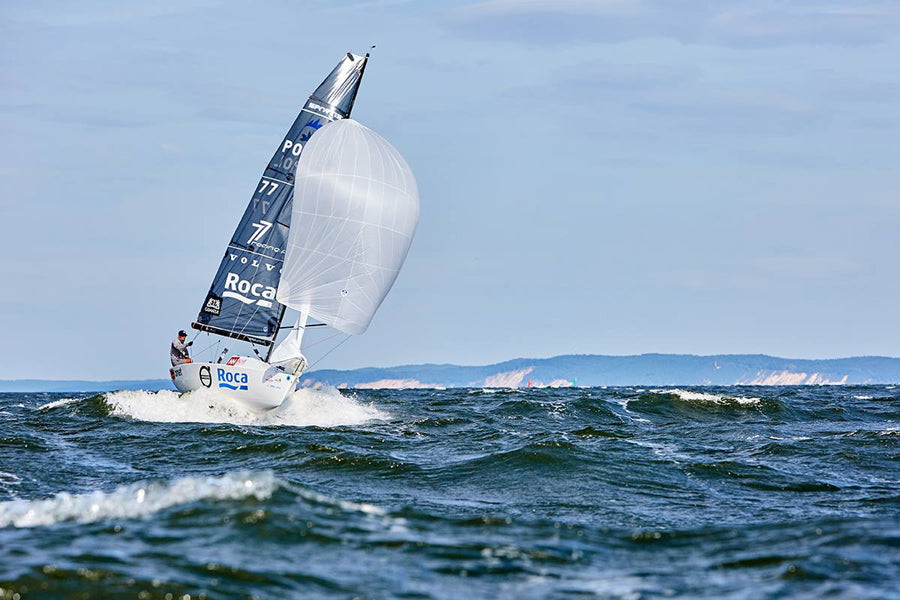
TARNACKI WINS HIS EIGHTH MICRO WORLD TITLE
TARNACKI WINS HIS EIGHTH MICRO WORLD TITLE
North Sails Prove to be the Fastest Sails on the Course
A fleet of 25 boats came together from seven countries at this year’s Micro Worlds event in Świnoujście, Poland. The Championship was a true test to the sailors with the full range of conditions across the week. The first half of the regatta was windy and wavy however the second half saw very light winds. Although there were 12 races planned, due to light wind at the end of the regatta the event was cut short on the final day.
The first and second placed boats were untouchable throughout the regatta and between Poitr Tarnacki’s Volvo Roca and Rafal Sarwocki’s Euro Shipping, they won all of the nine races, mostly with a big lead over the rest of the fleet. In the end, Piotr Tarnacki, North Sails Jockey, came away as World Champion for the eighth time! North Sails proved to be the fastest sailmaker in the fleet with boats finishing 1,2 and 4 in the overall standings and also gaining bronze medal and in the Cruiser and Racer divisions!
Congratulations to all North customers competing in the championship this year!
READ MORE
READ MORE
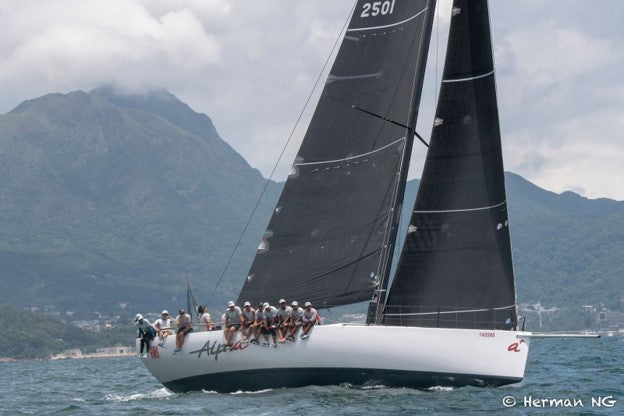
ALPHA+ WINS HHYC TYPHOON SERIES
ALPHA+ WINS HHYC TYPHOON SERIES
Shawn & Tina’s Alpha+ along with their local sailing team came away victorious with a dominating performance at the Hebe Haven Yacht Clubs, Typhoon Series.
First place overall for this beautifully presented Kerr 46 + in IRC division A.
Alpha+ is powered by a full North Sails racing inventory of 3Di RAW upwind sails, V series downwind sails, delivered and supported by the North Sails Hong Kong Loft. The Alpha+ team is looking forward to more great racing success this coming season.
READ MORE
READ MORE
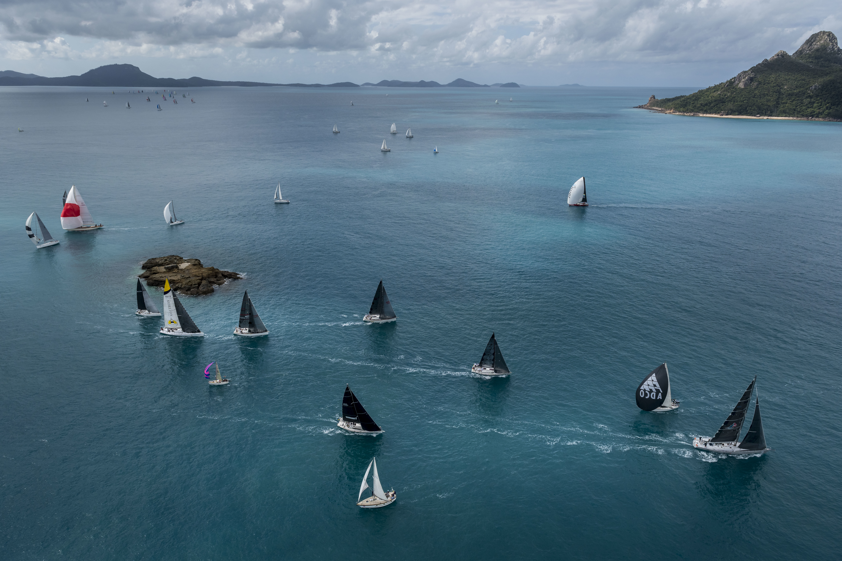
HAMILTON ISLAND RACE WEEK
HAMILTON ISLAND RACE WEEK
North Powers Multiple Class Wins at Australia’s Favorite Regatta Venue
North-powered multiple class victories at the 2018 Hamilton Island Race Week. North Sails experts were onboard to support clients in their quest to win one of Australia’s premier events. We checked in with the North team after the regatta concluded to get first-hand feedback on their awesome experiences, teamwork, sail power, camaraderie, and why they look forward to Australia’s largest offshore regatta every year.
© Salty Dingo / HIRW 2018
Alby Pratt, North Sails Sydney
“Racing on the CNB 76 Charlotte was different because she is set up more for cruising, but we were able to get a lot from her performance wise. Our crew worked well together, taking third on line honors, which was a great feat against the bigger boats. Charlotte was equipped with 3Di ENDURANCE 760, her 4th year with the same sails she uses mostly for cruising. The fact that she was built for cruising yet we were able to get her up to speed for racing is a testament to the long term value that 3Di provides, especially for this type of boat.”
© Salty Dingo / HIRW 2018
Billy Sykes, North Sails Sydney
“Hamilton Island Race Week is the biggest regatta in one of the best places to race in Australia. We had perfect conditions all week with nice breeze. There were a ton of whales on the race track, which also made it pretty awesome! If you haven’t done this event, you really should!
© Salty Dingo / HIRW 2018
Vaughan Prentice, North Sails Brisbane
“I just completed my 12th HIRW and my second year racing this event with RP100 Black Jack. 3Di RAW looked great both upwind and downwind and we had some close racing with Wild Oats, which was extra exciting. We focused on finding a faster downwind mode, and also on what sails we need to be ready for the next Sydney to Hobart. This race is very fun on and off the water, and is growing each year. I’ll definitely be coming back next year.”
© Salty Dingo / HIRW 2018
Hamish Crossan, North Sails Brisbane
“I was on Not A Diamond which is a H+H 42. It’s a new boat, so we’ve only sailed it a few times. I trimmed the main and helmed. HIRW was the owners’ first event with the boat, and we really had a great first experience as a team. Not A Diamond was equipped with a brand new 3Di RAW main and headsails. The owner loved the new sails and was grinning ear to ear after seeing them up. This was my first year at HIRW, and I had so much fun! I would definitely recommend doing this regatta, as I will be doing it again in the future.”
Not A Diamond © Salty Dingo / HIRW 2018
© Salty Dingo / HIRW 2018
Andrew Parkes, North Sails Sydney
“HIRW is one of the nicest regattas in the world. Not only is the sailing great, but seeing whales and dolphins is always a special experience. Onshore it’s a lot of fun talking to other teams to discuss the day and share stories.This regatta offers something for everyone, from Grand Prix and Maxi Yachts to cruising boats and trailer sailors. The tides are challenging and make the racing very interesting. 3Di ENDURANCE was a perfect inventory for a cruiser-racer sailing around Island courses.”
© Salty Dingo / HIRW 2018
Mark Bradford, North Sails Brisbane
“Hamilton Island Race week is always a great place to improve as there are a lot of moves that require both team work and smart decisions. We won our battle with Wild Oats, and both boats used full 3Di RAW inventories. We are looking forward to the next time!”
© Richard Gladwell
Aaron Cole, North Sails Melbourne
“I raced the 47’ Solaris Vamos equipped with 3Di ENDURANCE. Everything was the perfect fit, even though we fit the sails on the boat just days prior to the event. This regatta was one of the best in a long time. Event staff have it completely figured out; well matched division splits and great on the water communication, not to mention the fun we had onshore. It was everything we expected and more. Can’t wait till next year.”
© Salty Dingo / HIRW 2018
Paul Westlake, North Sails Sydney
“We can attribute our Hooligan> division win to the impeccable boat preparation provided by the owner: Marcus Blackmore, and project manager, Tim Wiseman. Our team is a great balance of youth and expertise, all working together toward the goal of winning. We were very well matched speedwise with Ichi Ban, so it came down to which team managed to get the little gains at the right time. The weather was warm, the wind was great, and the hospitality was unlike any other, thanks to the Oatley Family.”
Caption: Hooligan and Ichi Ban sparring upwind. © Salty Dingo / HIRW 2018
This year North Sails had 17 team members at Hamilton Race Week, as well as an onsite service loft.
© Salty Dingo / HIRW 2018
Whales were seen daily on the race track, making memories that will last a lifetime. © Salty Dingo / HIRW 2018
READ MORE
READ MORE
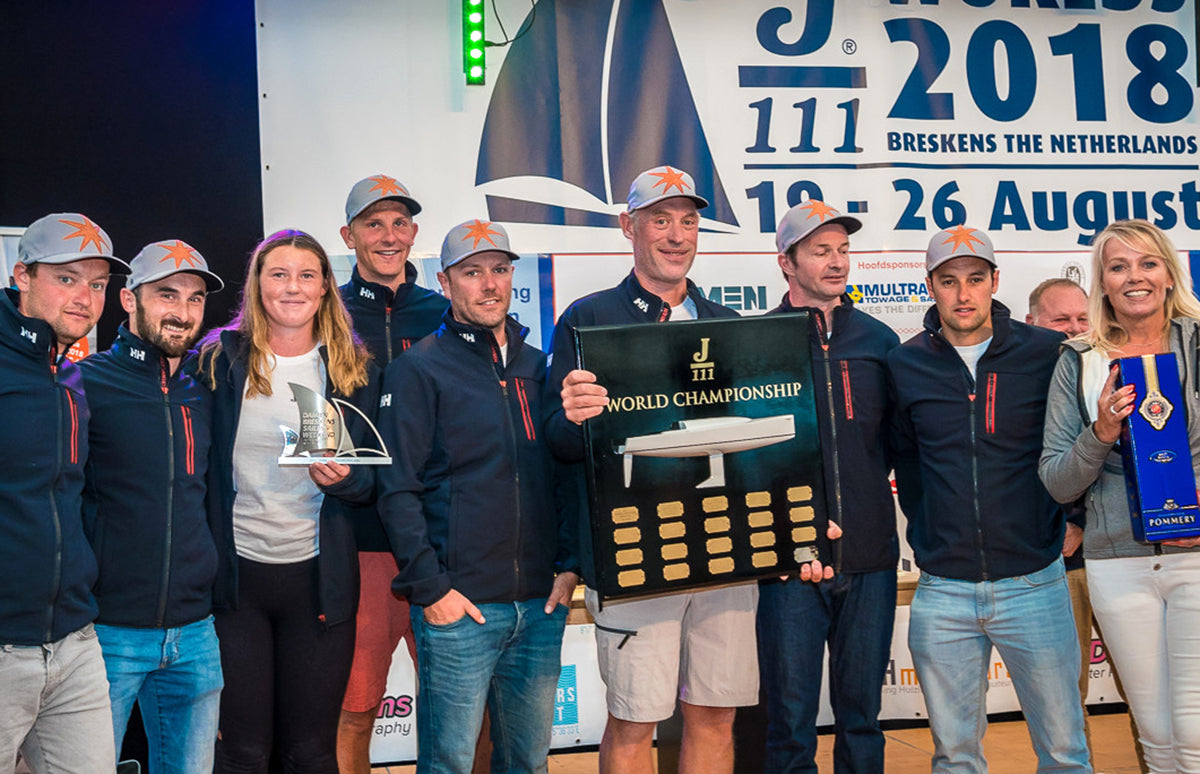
J/111 WORLDS: SPEED READING
J/111 WORLDS: SPEED READING
North Experts Share Their Winning Speed Tips
Martin Dent and team JElvis, 2018 J/111 World Champions! © WACON-images.com
Twelve teams battled throughout the weeklong J/111 Worlds in Breskens, Netherlands, where big-breeze speed was the key to success. Martin Dent and his team on JElvis scored nine straight bullets and a second out of 12 races, an impressive scoreline!
North Sails expert Ruairidh “Rory” Scott , main trimmer and crew captain onboard JElvis, says the team did a great job with boat handling.
“Our crew made sure our hoists, spinnaker jibes and douses were on time and very tidy. This resulted in huge gains and the ability to overtake boats when the pressure was on.”
They also matched headsail choice and mode to the conditions, Rory continues. “Most of the races were on the crossover between the J2 and J3. As the waves got bigger, we felt more comfortable on the J3 as a wider range of steering angles was possible. On Friday the waves were a little smaller and so we went back to the J2, which allowed us to sail a little higher at the same speed.”
© Ineke Peltzer-Ista
Downwind, it was important to sail the correct mode. “We were usually the first boat to sail a higher angle, which was faster downwind. The crossover was around 17 knots, and we also kept the jib up to maximize efficiency. As soon as the wind dropped below 16 for any length of time we would drop the jib and put the bow down.”
North Sails expert Jeremy Smart helped Tony Mack’s McFly finish second overall and kept an eye on JElvis, noticing all the things they were doing right. “Their speed was unmatched as the breeze came up, when boat handling became crucial.”
Second place went to Tony Mack’s McFly © Paul Wyeth
“The biggest gains were made downwind,” Jeremy continued. “They were able to sail hotter angles to extend, leaving their jib up and maintaining control while planing. Surfing waves was really helpful, which they were very good at, making them unbelievably fast.”
“3Di has a great edge in breeze because it holds its shape very well,” Jeremy added. “Since it doesn’t stretch, the power that is put into the sail is transferred straight into the performance of the boat. The speed is unparalleled.”
JElvis used North Sails standard sail designs for the 2018 Worlds. For more information on our World Championship-winning sails, please contact a North J/111 class expert.
J/111 World Championship
1
JElvis / Martin Dent
2
McFly / Tony Mack
3
Sweeny / Paul van Driel
4
Lällekönig / Jörg Sigg
5
Journeymaker II / Chris Jones
6
Djinn / Sebastien de Liedekerke/td>
8
Jagerbomb / Paul Griffiths
9
Top Job / Norbert Burkert
Full Results
Ruairidh Scott and Martin Dent , proud World Champs! © WACON-images.com
READ MORE
READ MORE
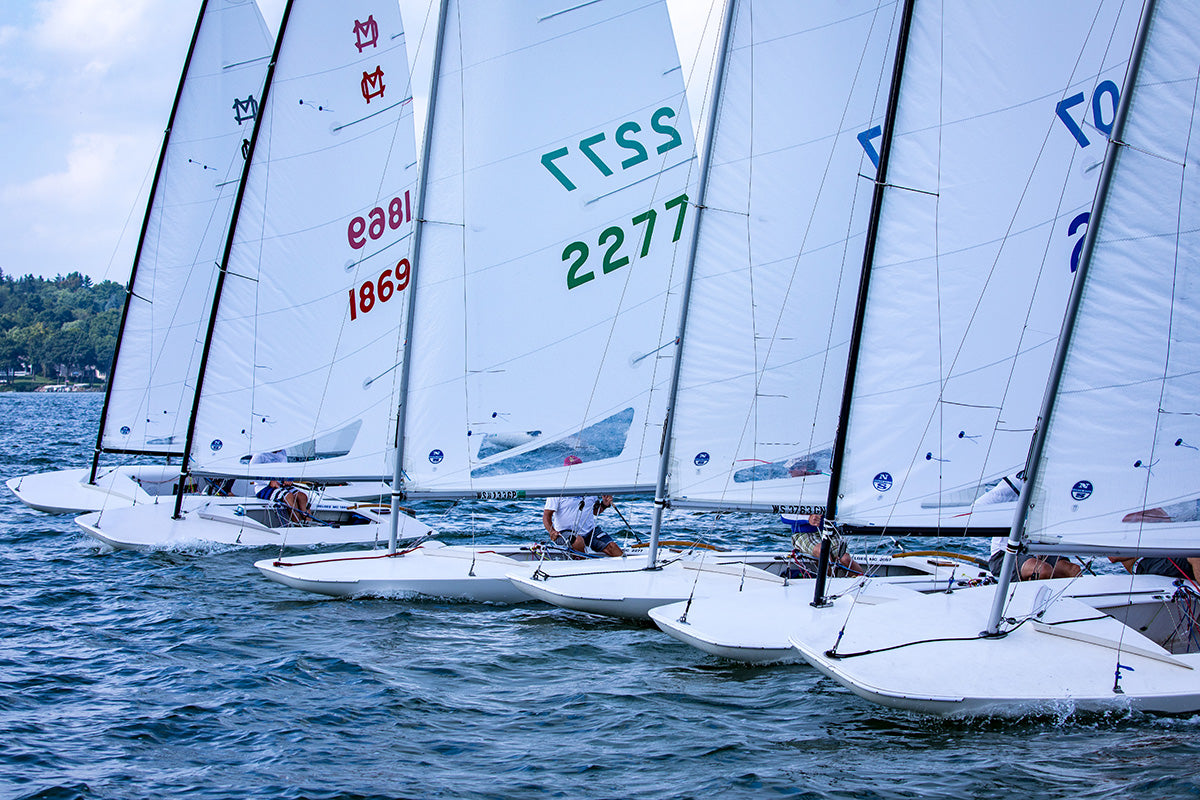
2018 MC SCOW NATIONALS
2018 MC SCOW NATIONALS
Pewaukee Yacht Club, WI
This week we held our annual National MC Championship at one of the best scow lakes and clubs in the US. Pewaukee Yacht Club (PYC) is known as a platinum standard for hosting great regattas once again pulled out all the stops for our 82 teams racing this year. If you look up the word hospitality in the sailing dictionary it would say PYC. Incredible food all morning, noon, evening for all 4 days of the regatta. At every turn, food, getting your boat in and out, buoys in and out, trailer parking, Lou Morgan’s famous Rib night was all spectacular. It seems like they had at least 75 volunteers in the total mix, maybe more.
The Regatta
The National Championship has a slightly different format than our normal regattas. It is a scheduled 7-race series with a drop race included if you get to 7 races.
The practice day saw some fantastic southwest breezes with nice temps in the high 70s on Thursday. About 30 boats raced in the 3pm practice race and about 45 boats made it out at one point or another to practice. 67 of the 82 boats were launched, in the water and on buoys by 6pm with the rest arriving late and also early on Friday morning.
For Friday we had a very unusual weather pattern upon us. Cold in the 60s and south winds. Even the locals were scratching their heads saying we have not seen this one before in August. The whole upper Midwest was both unstable with converging weather systems and storms. We had big winds but very manageable going into race 1 at 10 am on Friday. The race started on time with winds up and down between 10 and 20 mph. A WA3 was posted for our course. During race 1 on leg three, several times the PRO and other RC boats were getting big shots above our 23 mph max wind limit and also at one point had a max 35 mph gust reported. As the top ten boats rounded mark 3 and were heading downwind the PRO and RC team abandoned this race. Winds increased throughout the day and all racing for Friday (3 races) was lost. It was fun for all the crews though to get to sail. Some of the big single-handed sailors like Devon Howe were loving it though for this one (he was in the top ten) until it was abandoned.
The Sailors
Eighty-two teams from Canada, New York, Florida, Texas, Minnesota, Colorado, Illinois, Michigan, Indiana, Iowa and Wisconsin attended this year’s championship. The talent was deep in all categories. It was amazing how engaged everyone was, trying their best, prepping, practicing and more. It showed me the health of our class as they represented their fleets!
The Results
The results were really exciting. We lost day one of racing which means the series would be a max 5-race series with 3 races on Saturday and 2 on Sunday weather permitting. It was tough for the PRO and team but they pulled off three good but very challenging races in the shifty SW winds on Saturday. Velocity ranged from 5-14 mph. Going into Sunday you had several positions where big things could happen. 1st-3rd could have flipped positions easily. 4th through 15th maybe even deeper could have flipped. Then even deeper into the group there were individuals that could have easily gained or lost 15 boats by racing on Sunday with no drop race to be included. The wind however did not cooperate and we ended with no racing on Sunday. The regatta had it’s 3 race minimum in and we had a new champion.
This must have felt like ground hog day for Bill Draheim and Ted Keller as they once again tied for first this year. They tied earlier in the year along with Scott Harestad at the MC Midwinters. Bill won the tie-breaker at Lake Eustis and then again at Pewaukee. So great sailing to both of these skippers and their crews for finishing in a tie for first. As Bill joked at the PYC awards he appreciates the rules committee of our sport for their hard work on tie-breakers.
Race winners: Mike Considine race 1, Bill Draheim race 2, Jim Walker race 3
Top Master – Bill Draheim
Top Grand Master – David Koch
Top Mega Master – Tim Fredman
Top Woman – Natalie Sinn
Top Junior – Noah Janssen
Full results
Lessons Learned
Sailing the races over and over in my mind I think two main points come to mind as I look back at the moves I saw on the race course. Starting well and Patience.
Let’s break it down.
Starting Well – all three races saw 80% of the top 20 boats start well. In all three starts these teams did not start in the same place but simply started fast! They were able to accelerate and tack out from this large starting line. All three starts the top 20 boats jumped out quickly. For sure, good things were happening at the mid-line starting boat. Teams were using the RC boat to create space and escape. It happened every start. The ends provided a couple of folks escape but if you did not act quickly and take chances to cut it close and escape you were a goner. This happened to me once with Richard Blake 2 boats up, he tacks at start, boat next to me sails straight ahead for 60 seconds, we tack and we both end up 30th at first mark while Richard was 2nd. So starting, being fast and having a quick escape plan were big.
Patience – When you have a national championship the chances of the race going the distance are really good. So just racing in the moment, racing the boat next to you, looking up the lake, staying with the group and not straying is really critical. Hard to do once you are outside the top ten. You have to have confidence that your speed is good, your boat handling is good and that the velocity will come as will the shifts. Had you practiced before these races or just replayed in your mind what happened the last beat or run you know this was true. So being patient was huge and really evident in the forward groups.
Clear Air – Hardest thing to do in a 82 boat fleet is to feel like you have clear air. It is probably because you likely do not. If you are not in the top 5-10 boats this now has become a high value and you must pay attention to clear air so you can have 100% horsepower instead of say 60-70-80% horsepower with dirty air.
Other MC Class News
As the season finishes in some areas just know there is still some great racing going. The MC Blue Chip is coming up. Scott Harestad says he has some loaner boats available. Check in with him. Check www.mcscow.org for all the latest news on upcoming regattas like the Die-Hard, Polar Bear and some southern regattas this fall for anyone not liking cold weather or snow.
Team Melges provided 40 new MC Scows this season which is exciting. Check with them for all the latest news on 2019 MC Scows and plans for the new season.
Be sure to check out the Facebook pages for Melges, MC Scow, ILYA, Harbor Pictures Company for more updates, tons of pictures and video to come . There are some great pictures and videos you simply will not want to miss!
Feel free to reach out to us at Team Melges for any help you need with your MC sailing program. We would love to serve you!!
Learn more about the North MC Scow sails.
READ MORE
READ MORE
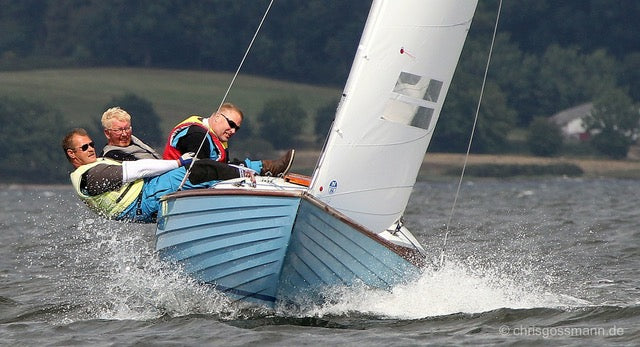
IDEAL INVENTORY FOR THE NORDIC FOLKBOAT
IDEAL INVENTORY FOR THE NORDIC FOLKBOAT
Udo Pfluger talks about his North Sails and why he uses them on his Nordic Folkboat
© Christian Gossman/www.chrisgossmann.de
Tell us about your boat, where you sail and the type of sailing you do
Our boat is the standard hull from Folkeboat Centrale, but everything else is made by Robert Hansen in 1983. I am sailing in Hellerup Sejlklub, north of Copenhagen, but the boat is placed in Kerteminde on Funen, first of all because all the best Folkboat sailors have their boat there, the other reason is that my crew Erik and Alex live nearby. I mostly sail three person keelboats like the Folkboat, Dragon and Knarr. I sail every week during the summer evening races in the different classes and race weekends as often as possible.
Tell us about the sails you use
We use the standard LM-5A mainsail , which is the most all-round mainsail on the market. We use both the FL-5 and the FL-5-L jibs. With these three sails we are very close to the perfect setup. With the ‘John Mast’ we have on our boat, we use the light jib in light wind and the all-round jib in the rest of the wind scale.
Why did you decide to use North Sails?
My experience with North Sails goes far back, so I know all the guys at North Sails and they know me. It is very important that we listen to each other, so the sails are improved all the time. The guys at North Sails also helps with other things than sails. They are very good sailors and have been very helpful with trim, tactics and practice tips, they are always ready to help you.
North Sails always provide very good craftsmanship and they take good care of their brand, that means first of all we get sails with very similar quality and shape.
Why is North Sails important to your sailing and how we can help other sailors like you?
North Sails have been active in supporting trim-clinics in Sweden, Germany, Finland and Denmark for many years, it is a very important part of the job when you are the leading brand in the class. It is a must to keep on supporting local fleets, so they can improve and get better by having the best sailors in the class as coaches.
If you want to get some of this advice from the North Sails team, contact an expert today!
© Christian Gossman/www.chrisgossmann.de
READ MORE
READ MORE
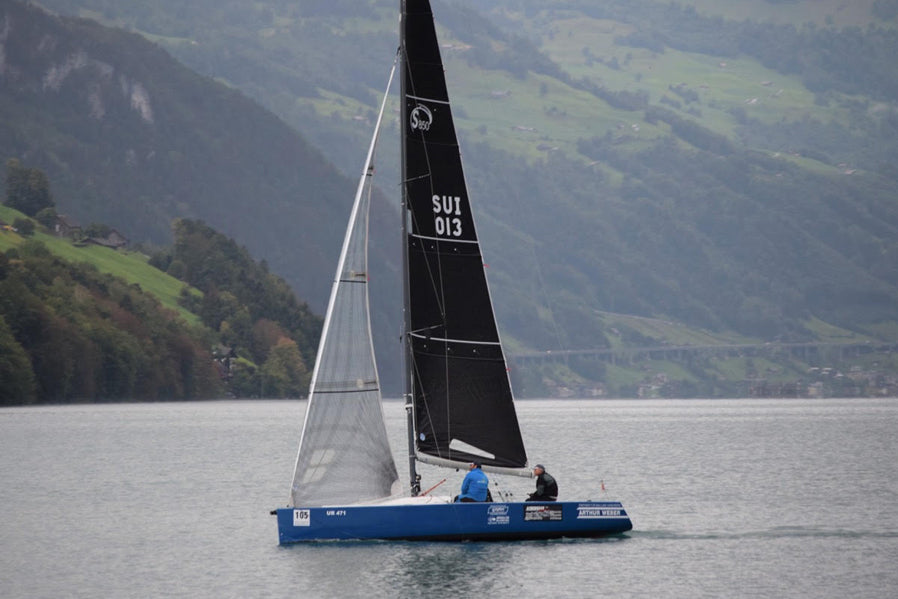
ÜBERLEGENER SIEG AN DER WINDWEEK CHALLENGE NACHT !!
ÜBERLEGENER SIEG AN DER WINDWEEK CHALLENGE NACHT !!
Daniel Schroff von North Sails Schweiz gewinnt mit Oliver Ryhner und Heinz Theiler auf der Esse850 ''SteelTwo' vom Eigner Philipp Weber (der für diese Regatta verhindert war), den 1. Rang in der Klasse Racer1.
Nach gesegelter Zeit erreichte er den 3. Rang. Schnellstes Boot nach gesegelter Zeit war die Quant 30 von Andreas Zimmerli.
Gestartet wurde um 20:00 Uhr vor Brunnen am Vierwaldstättersee, wo der Kurs Richtung Stanstaad führte und dann wieder retour nach Brunnen.
Regen und zunehmende Kälte machte das Handling der Boote nicht einfacher. Dafür machte der Wind mit und das schnellste Boot war nach rund 6 Stunden und 30 Minuten im Ziel.
Es bildete sich eine Führungsgruppe, die sich innerhalb von ein paar Hundert Meter bis zur Luvboje in der Führung immer abwechselten. Erst auf dem Retourweg trennten sich die Boote, da verschiedene Routen gewählt wurden. Im Gersauer Becken traf sich die Gruppe wieder und gelangte mit relativ kurzen Abständen ins Ziel.
Die Regatta, welche zum VC-Cup zählt so zum ersten Mal durchgeführt wurde, war mit gut 22 Booten unterwegs was zu hoffen lässt, dass sich im nächsten Jahr noch mehr Boote anmelden.
Resultate
READ MORE
READ MORE
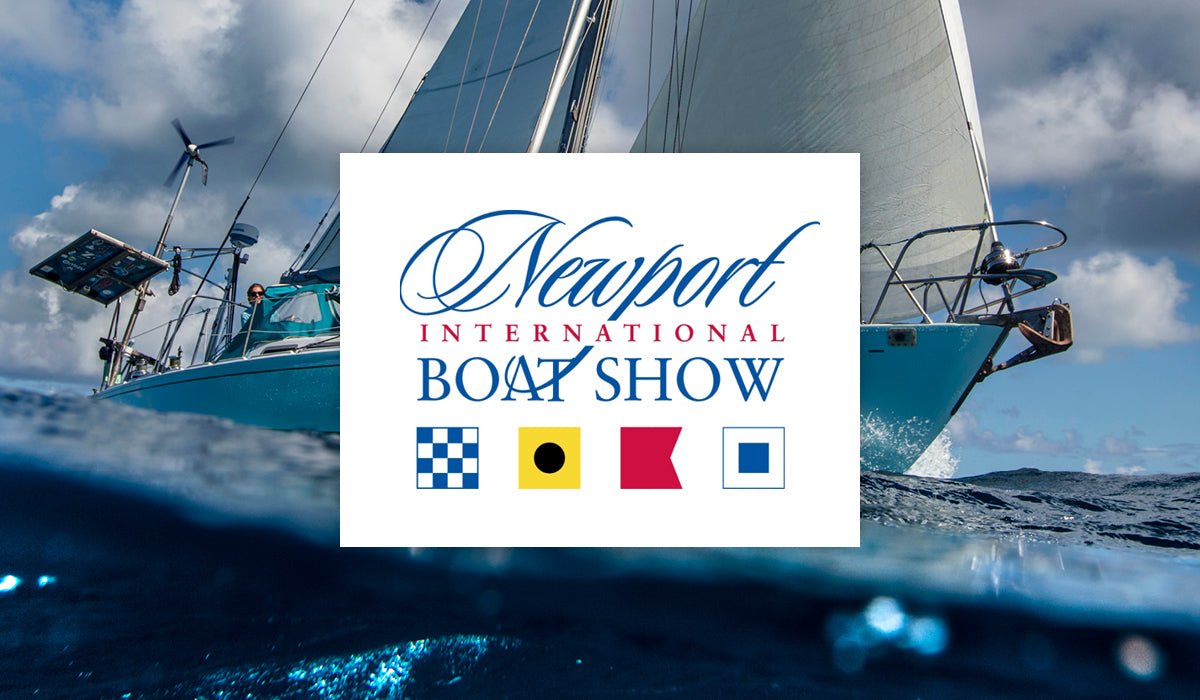
NEWPORT BOAT SHOW TICKET SWEEPSTAKES
NEWPORT BOAT SHOW SWEEPSTAKES
Enter To Win Two Tickets And North Sails Goodies
The North Sails teams from our Portsmouth, RI, Milford, CT and Marblehead, MA lofts will be at the Newport International Boat Show, September 13th - 16th. Enter to win two complimentary day passes for Saturday September 15th and North Sails hats, belts and water bottles for you and your guest.
Entry Closes September 12th. Except where prohibited by law, entry and acceptance of prize constitute permission to use each winner's name, prize won, hometown, likeness for purposes of advertising, promotion and publicity (including online posting) in any and all media now or hereafter known throughout the world in perpetuity, without additional compensation, notification or permission. Entrants’ email addresses will be added to the North Sails e-news distribution list. Users have the right to opt-out. Email addresses will not be shared with businesses outside the sweepstakes initiative.
READ MORE
READ MORE
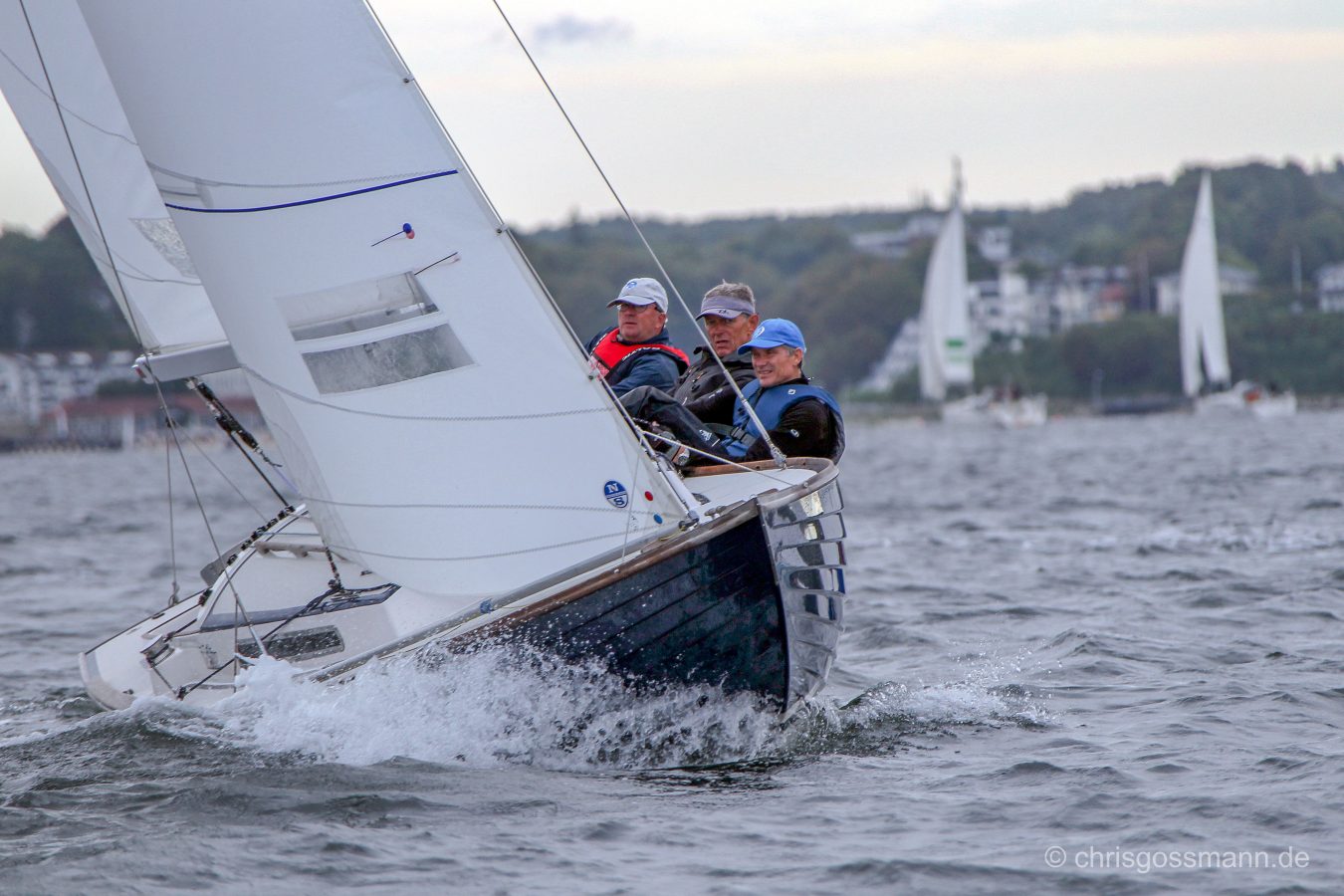
DEUTSCH-DÄNISCHE MEISTERSCHAFT DER FOLKEBOOTE
NORTH SAILS KUNDEN ERFOLGREICH AUF FLENSBURGER FÖRDE
Wir gratulieren dem neuen deutsch-dänischen Meistern Søren Kaestel, Erik Andersen und Alex Lindegaard (DEN-873) und den Platzierten Ulf Kipcke mit Dieter Kipcke und Gero Martens (GER-739, 2. Platz) vor Thomas Müller mit Malte Philip und Mario Wagner (GER-1085, 3. Platz). Der Steuermann Søren Kaestel berichtet über seine Erlebnisse und Erfahrungen mit North Sails.
Fotos: chrisgossmann.de
Auch der viert platzierte Per Jørgensen mit seiner Crew Carl-Otto Hedegaard und Peter Secher (DEN-703) setzt auf North Sails.
Wir sprachen mit Søren Kaestel über seine Segel und seine Erfahrungen mit North Sails.
The Folkboat sails we use are the standard main LM-5A, which is the most all-round mainsail on the market, and as jibs, we use both the FL-5 and the FL-5L. With these three sails, we are very close to the perfect setup for the John Mast we have on our boat. There is no 'zim-zala-bim' with those three sails, we use the light jib in light wind and the all-round jib in the rest of the wind scale together with the LM-5A mainsail.
Wir nutzen für unser Folkeboot das Standard Großsegel LM-5A, welches das umfassenste All-round Großsegel am Markt ist, sowie die beiden Focks FL-5 und FL-5L. Mit diesen drei Segeln sind wir nahe am perfekten Setup für unseren John Mast, den wir auf unserem Boot nutzen. Es ist keine Zauberei mit diesen drei Segeln, wir nutzen die Leichtwind-Fock bei wenig Wind und ansonsten die All-round Fock gemeinsam mit dem LM-5A Großsegel.
Mehr über North Sails-Segel für das Nordische Folkeboot erfahren Sie auf unserer Klassenseite.
My experience with North Sails goes far back, so I know all the guys at North Sails and they know me, it is very important that we listen to each other, so the sails are improved at little all the time during the seasons. The guys at North Sails also help with other things than sails, they are very good sailors and have been very helpful with trim, tactics and practice tips. As sailors themselves, they are always ready to help you.
Meine gemeinsame Erfahrung mit North Sails geht weit zurück, so dass ich viele der North Sails Experten kenne und sie mich. Es ist sehr wichtig, das wir einander zuhören und wir so die Segel stets ein wenig weiterentwickeln können. Das North Sails Team hilft darüberhinaus auch mit anderen Themen als den Segeln. Sie sind sehr gute Segler und helfen gerne bei Trimm und Taktik. Selbst Segler, haben sie immer einen Ratschlag parat.
North Sails has been active in supporting trim-clinics in Sweden, Germany, Finland and Denmark for many years. It is a very important part of the “job” when you are the leading brand in the class, it is a must to keep on supporting local fleets, so they can improve and get better Folkboat sailors by having the best sailors in the class as coaches. North Sails always provides very good craftsmanship and they take good care of their brand, that means, first of all, we get sails with very similar quality and shape and it is easy to sell the one-year-old sails for a good price.
Mit Trimm-Trainings in Schweden, Deutschland, Finnland und Dänemark ist North Sails seit vielen Jahren sehr aktiv in der Klasse, ein wichtiger Bestandteil der Rolle als führender Hersteller in einer Bootsklasse. Es ist unumgänglich, die lokalen Flotten zu unterstützen, damit sie sich verbessern und entwickeln und von den besten ihrer Klasse als Trainer lernen können. North Sails bietet immer sehr gute Qualität in der Fertigung und pflegt sein Image und seine Marke. Für uns bedeutet das, alle Segel kommen mit gleich hoher Qualität und gleichem Shape und man kann seine ein Jahr alten Segel leicht für einen guten Preis verkaufen.
READ MORE
READ MORE
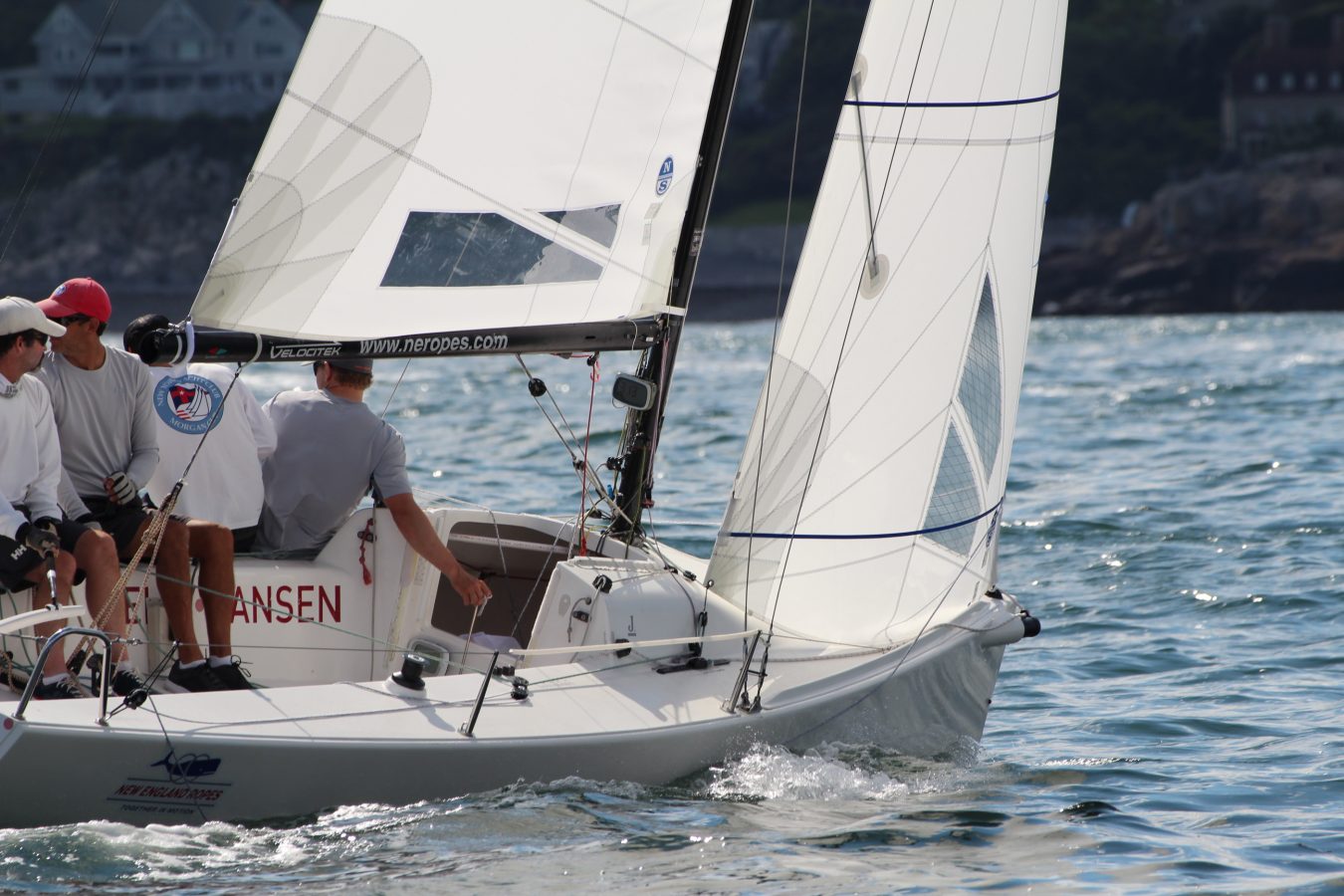
TIM HEALY WINS J/70 TED HOOD REGATTA IN MARBLEHEAD
NORTH-POWERED TEAMS DOMINATE J/70 TED HOOD REGATTA
XCS-2 & J-2 High Clew Combo Secure the Win in Marblehead
Forty-seven J/70s attended the Ted Hood Regatta held in Marblehead this past weekend in preparation for the upcoming World Championship end of September. Competitors saw three days of pleasant racing conditions allowing for a total of seven challenging races with winds ranging between 8-15 knots from the SE. All three days were very similar, with moderate to heavy chop, which comes as no surprise being a precursor as to what sailors will be expecting at the Worlds.
We caught up with North Sails expert Tim Healy to get his thoughts on his regatta winning inventory. Tim used the XCS-2 mainsail, J2-High Clew Jib, and the versatile AP-1 spinnaker, which he credited his power over chop, speed in light to medium conditions, and overall performance.
Upwind
“The hardest part about the upwind legs in each race was keeping the boat moving through the heavy chop typical to waters off of Marblehead. The J-2 High Clew jib keeps its power and depth with a twisted leech which proved fast and forgiving to trim in the difficult sea state. It is for sure my jib choice for the Worlds .”
Downwind
“Downwind was exceptionally tricky as all modes came into play. In many of the runs, we found ourselves winging, planing and in displacement mode multiple times. When planing mode was in play, there was a lot of ground that could be made up in one puff, which made things exiting! With that said, knowing when to switch gears downwind was key. Using the wing-on-wing tactically, knowing when to go bow-up to get on a plane, or stay in displacement mode were important decisions almost every run. The AP-1 spinnaker did it all and did it well! Once again the AP-1 proved itself as a great all-purpose kite and the best downwind choice for the Worlds.”
North-powered teams finished 1, 2, 3*, 4, 6, 7, 8, 9 and 1st* place in the Corinthian division.
“We had a very fun event. We decided to go with the J2-HC for the first time here at the THR. It worked well for us especially in the chop. Its powerful design helped a lot with acceleration out of our tacks and off the starting line. We also found it easy to trim. Based on our experience, given similar conditions, it will be the jib for us at the Worlds.”
Jim Cunningham, Lifted – 1st place Corinthian division
Need new sails for the Worlds? Order online or call your North expert today.
2018 TED HOOD REGATTA
J/70
1
New England Ropes / Tim Healy
2
Savasana / Brian Keane
3*
Mascalzone Latino / Umberto de Luca
4
Hydra / Martin Kullman
6
Rascal / Henry Brauer
7
Catapult / Joel Ronning
8
Rimette / John Brim
9
3 Ball JT / Jack Franco
* Denotes Partial North Sails Inventory
Full Results
Brian Keane’s Savasana, 2nd place with two race wins. Powered by North Sails.
Jack Franco’s 3 Ball JT – powered by North Sails.
READ MORE
READ MORE

TRIFECTA FOR CLASS 40'S PHIL SHARP
TRIFECTA FOR CLASS 40’s PHIL SHARP
Imerys Clean Energy Sets Record Around Britain And Ireland Powered By 3Di
©Paul Wyeth/RORC
Phil Sharp sailed Class 40 Imerys Clean Energy to line honors and first in division for the 2018 edition of the Sevenstar Round Britain and Ireland Race. They also shattered the 1800 nm race record by 15 hours with an elapsed time of 8 days, 4 hours, 14 minutes, and 49 seconds. Officially ratified, Phil Sharp, Julien Pulvé, Pablo Santurdé and Sam Matson are now in the Guiness Book of World Records!
We caught up with Phil to learn about the event that tops his third year of Class 40 racing.
“The coolest part is the extremity of the weather,” he says. “It’s guaranteed windy and fast offshore sailing. You’re getting every kind of condition packed into a relatively small course, like a condensed transatlantic. Up near Scotland the depressions come in very quickly, and you’ve got to be prepared for anything. Things can become pretty hellish sometimes, and you’ll be changing sails a lot.”
© PhilSharpRacing.com
“During the race we saw real extremes, from heavy downwind to light upwind sailing. We did two hours at seventeen and a half knots, which is our best average.”
Imerys Clean Energy is equipped with a 2016 North Sails 3Di Mainsail and 2017 headsails (J1 and NPL Sport J2 with reef). The downwind inventory includes a 2017 Code sail, 2016 Fractional A6 Superkote asymmetric, and a 2018 Masthead A2 Superkote Asymmetric. The hardest part for the team was knowing when to change sails for the fastest mode, because they saw such a wide variety of wind and sea states.
© Paul Wyeth/RORC
Driving the Class 40, Phil says, is “actually very, very light on the helm. Once you’re planing, you don’t have to make big adjustments to have the effects you want, because it’s traveling quite fast.”
Before the start, Phil was already thinking about the world record. Halfway around and in the lead, the team realized they had a good shot at it. “It’s hard, because you just have to go with the conditions you get, as opposed to when the weather is just right.” Though they were pushed hard by other boats in their class, the team won by a good margin. “Some of our competitors did not finish. The boat is highly stressed during this race, so preparation and reliability of equipment are main priorities.”
“Our mainsail is two years old now and has 20,000 miles on her. I’ve got the confidence in my sails to push the boat quite hard, and for that reason, we are very fast. Our main is so durable and holds shape very well. It feels bulletproof, something you can rely on, which is really important.”
© PhilSharpRacing.com
Asked about trimming a 3Di sail, Phil says “They’re quite sensitive to adjustments and you can completely change its shape. 3Di offers a lot of potential for tuning, and for sailing in different wind conditions.”
Phil works closely with North Sails expert Jeremy Smart, based out of Gosport, UK and says he was surprised how much direct involvement his team had with the development process. “Jeremy worked closely with this team to customize our inventory, which was really nice. We’ve been able to innovate and really develop our entire sail package over the last few years, which contributed to our success.”
© Paul Wyeth/RORC
“I’ve been very impressed with North Sails. If I have to get something repaired on the other side of the Atlantic, I’ve had equally impressive response and service. That global network is important when you’re ocean racing and end up in entirely different places around the world. I think that’s probably one of North’s biggest assets”
© PhilSharpRacing.com
“This is definitely the toughest race in the northern hemisphere, harder than a transatlantic. All credit to the team who stuck at it and were exceptional, especially when the going got tough.”
Imerys Clean Energy now sits in first overall in the Class 40 rankings.
© Paul Wyeth/RORC
© PhilSharpRacing.com
READ MORE
READ MORE
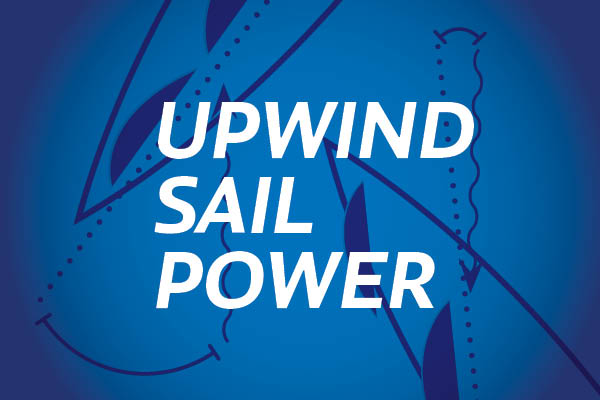
UPWIND SAIL POWER
UPWIND SAIL POWER
by Bill Gladstone
Understanding and controlling sail power is essential to optimizing upwind performance.
The Three Sources of Sail Power
1. Angle of Attack
2. Sail Depth (Draft)
3. Sail Twist
Total sail power is the sum of power from the three sources. Sail trimmers first try to get the boat to full power (neither underpowered or overpowered), and then adjust the mix of power from angle of attack, depth and twist to match the sailing conditions and optimize performance. When overpowered or underpowered, we work to decrease or increase power.
Sailmakers design and build sails that are both fast and can be adjusted to perform well in a range of conditions. As sail trimmers, our goals parallel those of the sailmaker: First, achieve the designed shape and second, fine tune the shape to the conditions. We’ll look more at fine tuning sail shape after we define each of the three sources of sail power, as well as some other characteristics of sail shape.
1. Angle of Attack
The first source of power is angle of attack. At zero angle of attack, the sail is luffing. Trim in to increase angle of attack and thus, to increase power. Ease the sails out, and power is reduced. Angle of attack is also controlled by the driver. Bear off to increase power, and head up to reduce power.
Power increases as angle of attack increases, up to the point of a stall. When angle of attack is too great, flow stalls and power drops quickly.
Trimming in, as shown (A-B), increases angle of attack and power. The driver can also increase angle of attack and power by bearing off (C-D). Ease sails or head up to reduce power.
2. Sail Depth (Draft)
Sail depth, also called draft or camber, is the second source of sail power. Sail depth controls the power, acceleration, and drag of the sail. More depth creates more power and better acceleration; while a flatter sail has less power and less drag. As with angle of attack, power increases with depth up to the point where flow stalls. Maximum power is achieved just short of a stall.
A deep or “full” shape is more powerful than a flat shape. Deep sails are best for power and acceleration. A flat sail is best when overpowered in heavy air. A flat shape is also fast in smooth water, as it creates less drag.
A deep sail is best to punch through waves and chop, or to accelerate after tacking.
A flatter sail reduces power and also drag. In overpowering conditions a flat sail is best. A flat sail also will be fast in smooth water. When overpowered reducing drag can improve performance. In underpowered conditions adding power is more important than reducing drag (see fig. 2).
3. Sail Twist
Twist is the third source of sail power. Twist describes the relative trim of the sail high and low. A sail has lots of twist when the upper part of the sail is open. The opposite is a closed leech with little twist.
Increasing twist reduces power; decreasing twist adds power. Increasing twist spills power from the upper part of the sail. Again: More Twist = Less Power. (fig. 3). As with angle of attack and depth, reducing twist adds power up to the point where the sail stalls and power drops. So, why twist, and how much?
Wings and keels are not designed with twist, but sails (and propellers and windmill blades) are. Due to less surface friction, the wind is stronger aloft than at the surface; this is known as wind gradient. The true wind and boat speed together create the apparent wind. The stronger true wind up high creates a wider apparent wind angle (and stronger apparent wind) aloft. The upper part of the sail is twisted out relative to the lower part of the sail to match the more open apparent wind angle. The sailmaker designs twist into the sail to match the average wind gradient.
Sail twist is then fine-tuned to match the sail shape to the prevailing wind gradient. We further fine tune twist to wind and sea conditions, and to match our performance goals.
Fine tuning twist is one the most powerful trim adjustments we can make.
Twist is the difference in trim of the sail high and low. Increasing twist reduces power by spilling open the top of the sail.
Sails are designed with twist to match differences in apparent wind caused by wind gradient.
READ MORE
READ MORE

IC37 TUNING GUIDE
Also available: IC37 Boathandling Manual
Mast Shims
The IC37 was designed to have simple tuning adjustments in order to minimize boat-to-boat variation and highlight the sailors’ performance. Therefore, the only allowable rig tune adjustment is the shim height beneath the base of the mast, which affects the shroud tension. This system replaces the traditional process of independently adjusting turnbuckles at the base of each shroud. Each boat is supplied with one shim of each of the following sizes: 20mm, 10mm, 5mm, 3mm, and 2mm. The 20mm shim is removable for the sole purpose of stepping and un-stepping the rig; it should always be in place while sailing in any condition. Beyond that, you may add any individual shim or combination of shims you see fit. The table below shows our suggested shim height for each respective wind range.
WIND SPEED (knots)
SHIM HEIGHT (mm)
0-6
22
6-10
28
10-14
35
14+
40
Rigging Tensions (On Full Shims)
DESIGNATION
LOOS RT11 GAUGE
LOOS RT10 GAUGE
V1
39
-
D1
-
20
D2
-
15
Headstay
20
-
Battens
Before putting up your IC37 North Sails, it is important to properly tension all battens to get the desired sail shape. For the mainsail, we recommend tensioning the leech battens to only just remove the wrinkles from the batten pocket. The full battens should be slightly tighter, causing the batten pocket cloth to be completely smooth, but not creating wrinkles parallel to the pocket.
The jib comes with two top batten options. This allows the trimmer to match the flying characteristics to varying breeze strengths. The light batten is flexible, which allows more shape in the head of the sail when the breeze is light. In comparison, the heavy batten is more rigid to reduce shape in the head and help induce twist in the sail.
Crew Weight
Crew positioning is very important on the IC 37. Moving weight fore and aft as the wind speed and angle change is crucial to performance. As the breeze picks up, weight should be shifted progressively further aft. This increases righting moment, as more of the crew weight reaches maximum beam. As a result, the sails can be trimmed harder and the boat can be sailed flatter and faster than it would with weight too far forward. As the breeze lightens, be sure that the crew is active with moving forward. When weight is too far aft, the transom will produce a gurgling sound as it displaces too much water.
Jib Trim
The IC37 is equipped with four main controls to manipulate the jib trim – halyard tension, athwartship lead position, vertical lead position, and sheet tension. Using these four controls together can produce the wide range of shape in the jib required to perform well in all wind conditions.
Jib Halyard Tension
Halyard tension controls the entry angle, as well as upper leech profile. A good base setting is just enough tension to remove any wrinkles coming off the luff hanks, with the goal of getting the sail to be smooth, but not tight. The amount of tension required to achieve this will change with the breeze. If over tightened, the luff will become flat and unresponsive, and may have vertical wrinkles running from tack to head. We suggest using a number scale with a mark on the deck for consistent tension when hoisting the jib around a turning mark.
Athwartship Lead Position
A track system oriented athwartship controls the jib’s angle of attack. A tighter angle of attack allows the boat to sail at a closer angle to the wind, but when the car too far inboard, the wind coming off the jib will be negatively interfering with the main shape. For the best relationship between the main and the jib, the area between the two sails, the ‘slot,’ should be as even as possible. The best way to tell if your slot is set up well, is to look at the angle of the leech telltales of the jib. The top telltale should be flying at an angle that matches the entry angle of the mainsail.
Vertical Lead Position
The jib lead can be raised or lowered to adjust the leech profile. This control replaces the traditional fore/aft lead adjustment. A lower jib lead will result in a tighter overall leech profile and a deeper foot, the equivalent of moving the traditional lead forward. Easing the lead up will flatten the foot and induce more twist in the leech. This is the key control to achieving a vertically even slot.
Jib Hobble
The jib hobble system is used when sailing downwind with both the spinnaker and jib up. The hobble is meant to caddy the jib from gybe to gybe with no adjustment required. A good base setting is to have the jib trimmed enough that the lowest luff telltales are flowing and the top of the jib not luffing. However, it is better to have the sail slightly under trimmed than over trimmed. If the jib is eased enough that it can wrap around the forestay, it will need to be trimmed just prior to the gybe, then released back to its original setting. The hobble is trimmed using a single line lead through a cleat in the center of the boat.
Downwind Modes
The IC 37 (as well as many other one design classes) races with only one asymmetric spinnaker, which limits the variability in VMG angles when sailing downwind. However, there are still many different modes of sailing downwind. In light air, we suggest dropping the jib to allow the spinnaker to maintain as much flow as possible. While keeping the jib fully onboard as it drops is always preferable, the luff hanks allow the jib to be dropped quickly without going overboard when the situation requires. While having the jib down does allow a lower mode to be sailed, the boat still does not like to sail directly downwind. When the breeze permits leaving the jib up, you must transition your mode to one with a tighter wind angle. This should only be done in planing conditions.
Runner Load
Trimming the running backstays, or ‘runners,’ is one of the most important controls for upwind speed. Grinding on more runner tension will make the headstay tighter, flatten the main by bending the mast, and open the main leech. This depowers the sail enough to let the boat stay under control at higher wind speeds.
Reefing
After all the mast shims have been put in, the next step to depowering the boat is to reef the sails. The first sail to reef is the jib, which usually happens around 18-20 knots of true wind speed. When reefing the jib, the best practice is to drop the sail onto the deck, roll the foot from the bottom up, close the zipper with all excess cloth fully enclosed, then re-hoist the sail. The main reef will be added once the average true wind speed is around 23-25 knots. Having the runners and mainsheet completely eased when putting the reef in the main is important and will avoid undue stress on the main halyard components.
Note overbend wrinkles
The crew member trimming the runner should be looking for these wrinkles to appear in the main to know when the maximum load is achieved and should not pull more runner on beyond that point.
Polar Boat Speed
UPWIND
TWS
VS
TWA
HEEL
6
6.06
44.6
11.5
8
6.44
38.9
16.0
10
6.71
36.9
18.6
12
6.91
35.9
20.4
14
7.05
35.5
21.3
16
7.14
35.4
23.0
18
7.21
35.6
24.4
20
7.30
36.3
25.0
DOWNWIND
TWS
VS
TWA
HEEL
6
6.08
143
-2.1
8
7.21
147
-1.5
10
8.30
146
0.4
12
9.54
144
4.2
14
11.21
141
11.5
16
12.79
143
14.4
18
14.11
145
13.3
20
15.10
147
11.3
READ MORE
READ MORE
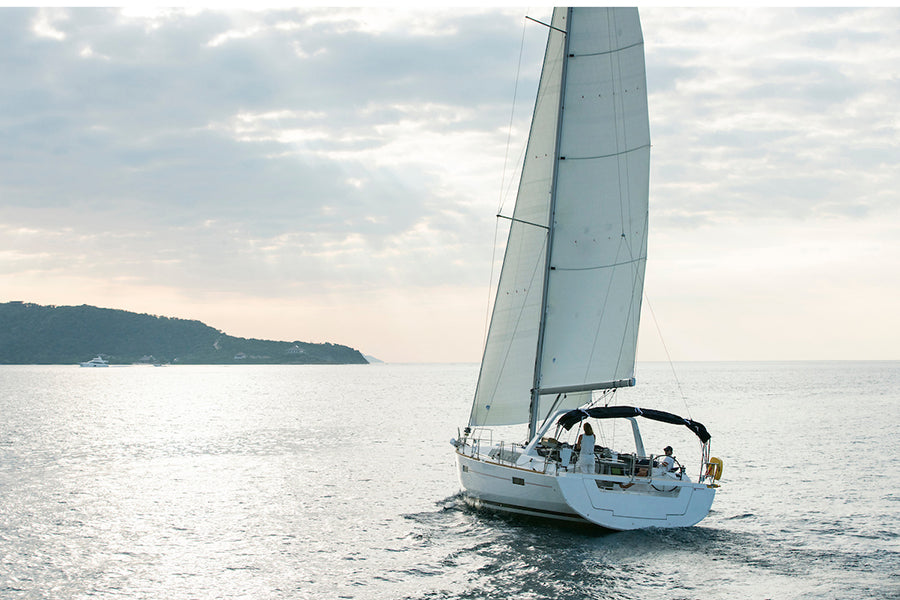
Consejo North Sails
CONSEJO NORTH SAILS
Hoy hablamos del inventario mínimo que recomendamos para navegación de crucero en verano.
© Amory Ross
La base es siempre una buena mayor con dos o tres rizos, que complementaremos con un génova enrollable (por supuesto, con banda de protección solar), y para quienes buscan más velocidad en rumbos abiertos, un asimétrico. En este caso, lo recomendable sería un G2 con calcetín o un código cero enrollable. Ambos tienen aplicaciones diferentes: el G2 es para rumbos más abiertos y el G0 para más cerrados. Y, por supuesto, hay que incluir un tormentín. En cualquier caso, quien mejor podrá asesorarnos sobre el inventario óptimo para disfrutar al máximo de la navegación en crucero será nuestro experto North Sails de confianza.
READ MORE
READ MORE
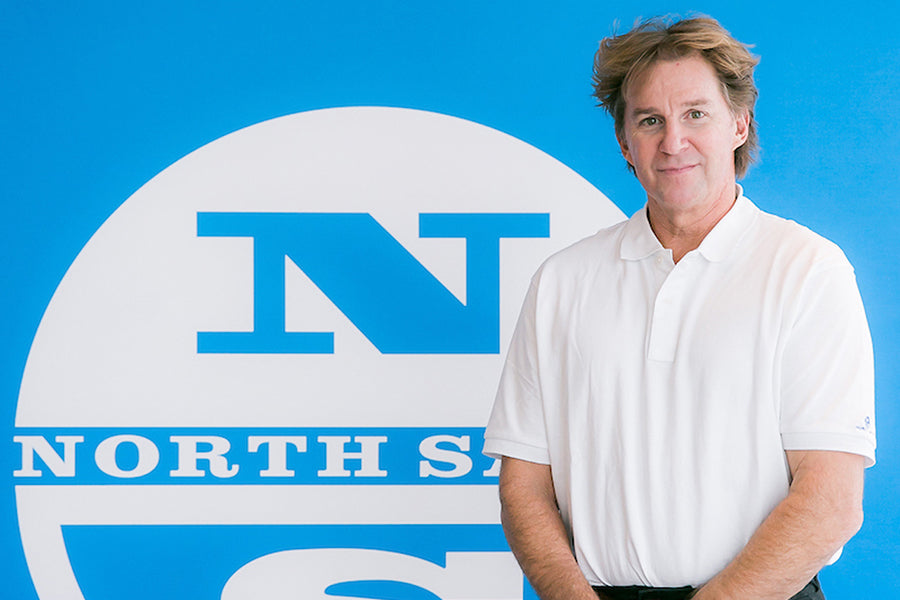
KEN READ ANALIZA LA VOLVO OCEAN RACE
KEN READ ANALIZA LA VOLVO OCEAN RACE
El presidente de North Sails repasa la última Volvo Ocean Race, el comportamiento de las velas 3Di y el futuro de la navegación oceánica.
© Amory Ross/PUMA Ocean Racing/Volvo Ocean Race
Desde el punto de vista de North Sails, no podría estar más orgulloso de nuestra gente y de las velas 3Di diseñadas para esta regata. Y cómo mejoran nuestros productos gracias a pruebas como la VOR. Bouwe Bekking dice que ha sido la edición con más viento de cuantas ha hecho. La presión que se le ejerce a esas velas y el excelente aspecto que mostraban llegando a meta es impresionante. Las imágenes de los drones mostraron con total crudeza la brutalidad de la Volvo Ocean Race como nunca antes, lo mucho que se exige a los barcos y lo que han tenido que soportar sus velas.
Aquellos que hemos participado en la regata lo entendemos, pero incluso con las imágenes de a bordo nunca hemos sido capaces de mostrar al mundo lo brutal que puede resultar para hombre y máquina. Las imágenes de drones muestran cómo toda la flota se afanó en destruir sus velas 24 horas al día durante semanas, pero las 3Di lograron sobrevivir. Y no sólo eso: los barcos completaron el recorrido con velas que parecía como si llegaran de una jornada de regatas normal. Así de buenas son las velas 3Di. Es increíble, y estoy terriblemente orgulloso de North Sails.
Lo curioso es que tanto nuestra empresa como el mundo de la vela en general comienzan a dar por hecho las prestaciones de 3Di, pero la técnica de fabricación de ninguno de nuestros competidores podría alcanzar el nivel siquiera próximo a lo que consiguieron las velas de Volvo. Ni remotamente. Es increíble, cuesta acostumbrarse a ello, porque las prestaciones de las 3Di son incomparables y superan todo lo que se ha visto en nuestra industria.
Del 3DL al 3Di
Recuerdo cuando comenzaron a utilizarse las 3DL en los Volvo 60 y vimos cómo las prestaciones alcanzaban un nivel inédito, aunque todos estábamos expectantes por comprobar si una vela de film sobre film aguantaría cada etapa. Pero el 3Di –obviamente sin film– ha logrado eclipsar ese avance y dejar las velas laminadas en el olvido. Hasta el punto de que hemos retirado completamente nuestras velas North 3DL y centrado toda nuestra producción en las 3Di para barcos de competición y crucero de altas prestaciones para adaptarnos a la demanda. Ya no cuesta nada realizar reparaciones duraderas en los peores sitios. Un tubo de 5200, una pieza de material 3Di y un poco de tiempo para que seque el adhesivo, y cualquier reparación queda completada. La durabilidad del 3Di y su proceso de fabricación han eliminado la necesidad de que los equipos tengan que llevar una máquina de coser a bordo.
En la parada de Newport realizamos un reporte completo con cada equipo tras cerca del 80% del recorrido. Se habló de lo bueno y de lo malo. Como compañía, estamos comprometidos a mejorar constantemente, y por ello hacemos estos intercambios de información en los principales eventos de vela. Siempre hay pequeños detalles en los que podemos mejorar. En esta edición, los pequeños detalles indicados por los equipos han sido matices fáciles de mejorar. En segundo lugar, y creo que más interesante, cada análisis detallado por cada equipo fue muy consistente, casi idéntico al de los demás. Gautier Sergent (jefe de investigación y desarrollo de North Sails, y diseñador de las velas de los VO65) ha realizado un trabajo fantástico encontrando una solución para la regata que ha rozado la perfección.
Mujeres, jóvenes y reportero a bordo
Es importante reconocer también que las mujeres a bordo ya no son meras chicas navegando, son regatistas de Volvo Ocean Race, y será interesante ver qué programas las eligen para que continúen. Cuentan ahora con la experiencia, son regatistas de Volvo y espero que los proyectos de grandes
esloras empiecen a contar con ellas de igual forma que cuentan con los chicos para regatear. Para mí, ayudar a las mujeres a triunfar en todos los niveles de nuestro deporte, así como mantener a los chicos en la vela con veinte y treinta años, resulta clave para el crecimiento de nuestro deporte. Sin líderes de opinión, superestrellas y armadoras femeninas, el crecimiento real nunca llegará. Tenemos que seguir empujando fuerte en nuestro deporte para involucrar a más mujeres y a más jóvenes.
El futuro...
Mirando al futuro, parece que la relación entre IMOCA y Volvo Ocean Race va por buen camino. Que yo esté o no de acuerdo resulta irrelevante, pero tengo curiosidad por ver cómo termina. Para mí, la Volvo tiene que seguir siendo una regata de tripulación completa. Las reglas para incluir jóvenes y mujeres entre la tripulación, y la introducción de la figura del reportero a bordo, han resultado cruciales para mostrar al mundo lo que es la vela. Con los IMOCA, esperemos que las tripulaciones no se reduzcan demasiado y sea considerado un barco de 60 pies con tripulación completa, incluyendo el factor femenino, a los jóvenes y al reportero a bordo. Personalmente, también me gustaría que regresaran los armadores a la regata, con una segunda clase tipo Whitbread, “Big Boat” o abierta, invitando embarcaciones de 70 a 100 pies para competir alrededor del mundo con una banda de rating, atrayendo a barcos que compiten en regatas como la Rolex Sydney Hobart, Newport-Bermuda, TransAtlantic, TransPac y Rolex Fastnet. Lo que sea que atraiga más barcos a la regata. Se trata de abrir las cosas y decirles a los armadores: “os queremos de vuelta”.
Al final, la navegación oceánica continuará creciendo y evolucionando, y eventos como la Volvo seguirán presionando nuestros productos para que mejoren, alucinándonos con imágenes de dron para traernos toda la acción al sofá de casa. Lo cuál es fantástico para el deporte. Los barcos serán más
rápidos. Y tenemos que seguir invirtiendo en el tema de la seguridad, porque los barcos serán por naturaleza menos seguros. Debemos detenernos a pensar que nosotros, como North Sails, también tenemos mucho que decir en nuestro deporte y contamos con una enorme ventaja en nuestro mercado de cara al futuro, y tenemos que aprovecharla, tanto para un barco de competición como para un crucero que quiere lo mejor. Las velas más rápidas del son de hecho las más duraderas, algo que nunca había ocurrido en la historia de la velería.
READ MORE
READ MORE
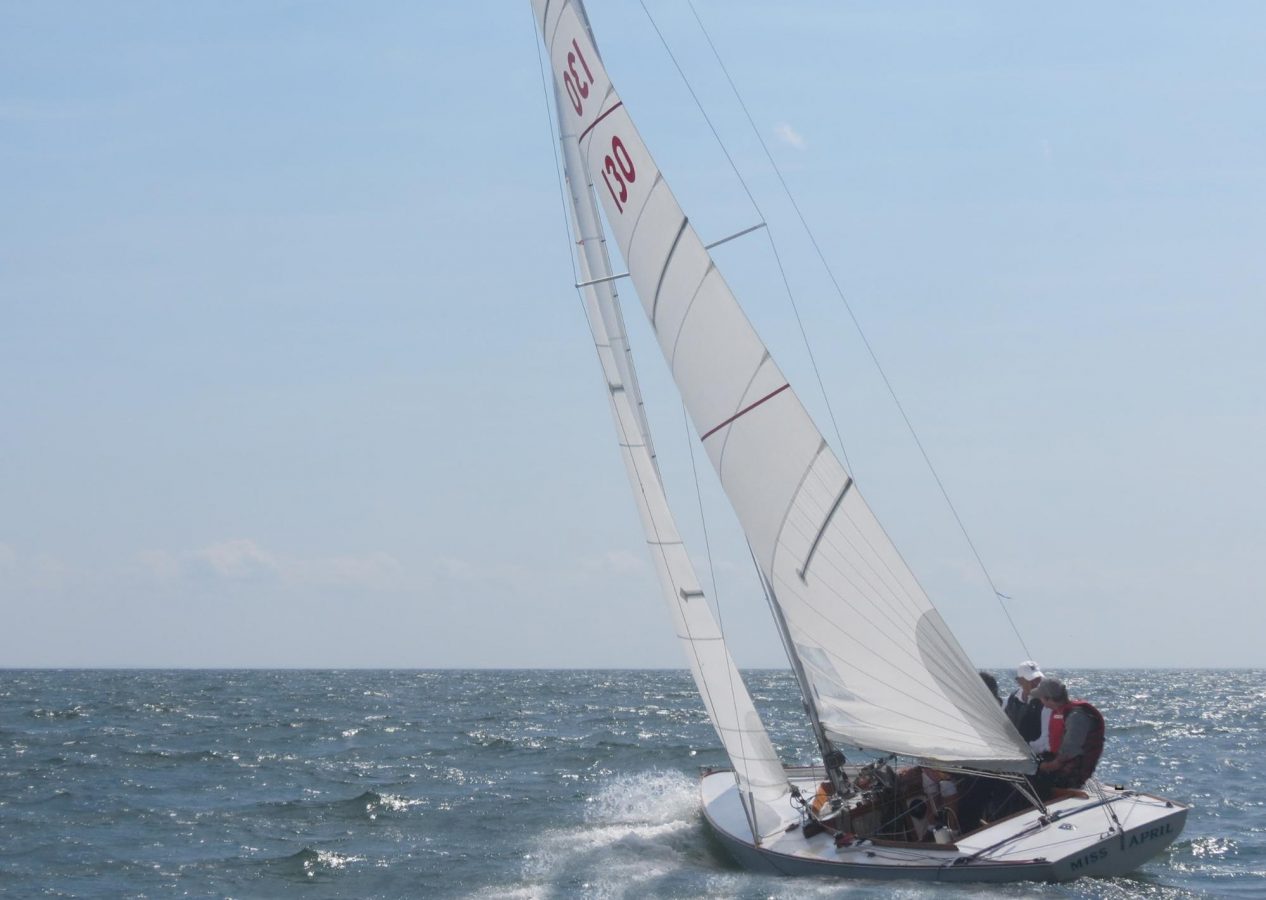
TIGHT FINISH AT THE 2018 ATLANTIC NATIONALS
TIGHT FINISH AT THE 2018 ATLANTIC NATIONALS
Steve Benjamin’s Cassady Wins the Title Tied in Points with Dave Peck’s Miss April
Madison Beach Club hosted the 2018 Atlantic Nationals with three days of good breeze that welcomed 27 teams for some competitive racing. Coming into the last race made for a very tight finish between Steve Benjamin’s Cassidy and Dave Peck’s Miss April who tied. Benj won the tiebreaker, securing his overall win. Dave’s brother Norm Peck III finished third place on Nonesuch, just one point behind second place. This was Steve Benjamin’s fourth North American title as a skipper in the Atlantic Class.
North Sails was well represented at the Nationals with Tim Healy sailing on Jeff Shay’s Papa, Rodrigo Meireles sailing with team Savvy from Cedar Point Yacht Club and North Sails designer North Sails expert Ched Proctor stood by for on the water support, checking sails and helping teams tune-up as so they could be ready for racing. We caught up with experts Tim Healy, Rodrigo Meireles, and Ched Proctor to get their take on the event.
Tim, you grew up sailing in Niantic Bay. How special it’s for you to be back in Madison sailing the Nationals?
It was great sailing in the Atlantic fleet again! I was sailing with my good friend Jeff Shay. Jeff was my junior sailing coach in the 80’s and he was also the bowman on my father’s J/24 back in the 1980 for the J/24 Worlds in Newport RI!
It was good to see fellow Niantic sailors, Norm and Dave Peck, battle it out with Benj for the Championship. The Peck’s and the Healy’s have done a lot of sailing with and against each other in many different classes including the 505, Penguin, Interclub, Bluejay, Laser, Lightning and Atlantic. Not only did I learn many important sailing skills from Jeff Shay and the Peck family, I also learned how to ski from both! My parents are friends with their parents from the Niantic Bay YC and we often spent weekends in the winter at their ski house at Magic Mountain VT.
I have many close friends in the Atlantic fleet and it was fun to catch up with them at Nationals. There are many new faces in the fleet as well. There is for sure a growing interest in the class over the past ten years. The boats are beautiful with their classic lines and are very fun to sail!
Rodrigo, you have recently joined the Atlantic class, what’s special about this class so far? How are you enjoying learning to sail a classic boat like the Atlantic?
I have been sailing the Atlantic for about a year now and I really enjoy the boat. The camaraderie of the fleet members and the classic feel of the fleet is truly one-of-a-kind. It was great to come up to Madison to compete at the Nationals with David Polsky from CPYC. I plan to race next year on my own boat.
Ched, you were supporting the fleet on the water checking sails and making sure all the competitors were up to speed for each race. As a sail designer, what’s next for the North Atlantic sails?
Our clients seem pretty happy with the sails as currently designed. It has taken 33 years of designing and evaluating Atlantic sails to get to where we are now, and it is a good place. The sails are fast and easy to handle. The longer battens in the main are a great asset to the class. They make the sails much smoother and allow for the best sail shape.
Learn more about North’s fast Atlantic sails.
2018 Atlantic Nationals
1
Cassidy / Steve Benjamin
2
Miss April / David Peck
3
Nonesuch / Norm Peck III
4
Schucks / Scott Reichhelm
5
Savvy / Dave Polsky
6
— / Chris Wittstock
7
Waypoint / Rory Coster
9
Papa / Jeff Shay
10
Thistle / Mark Foster
* Denotes Partial North Sails Inventory
Full Results
David Peck’s Miss April, 2nd place
Team SeaBiscuit powered by North Sails
READ MORE
READ MORE
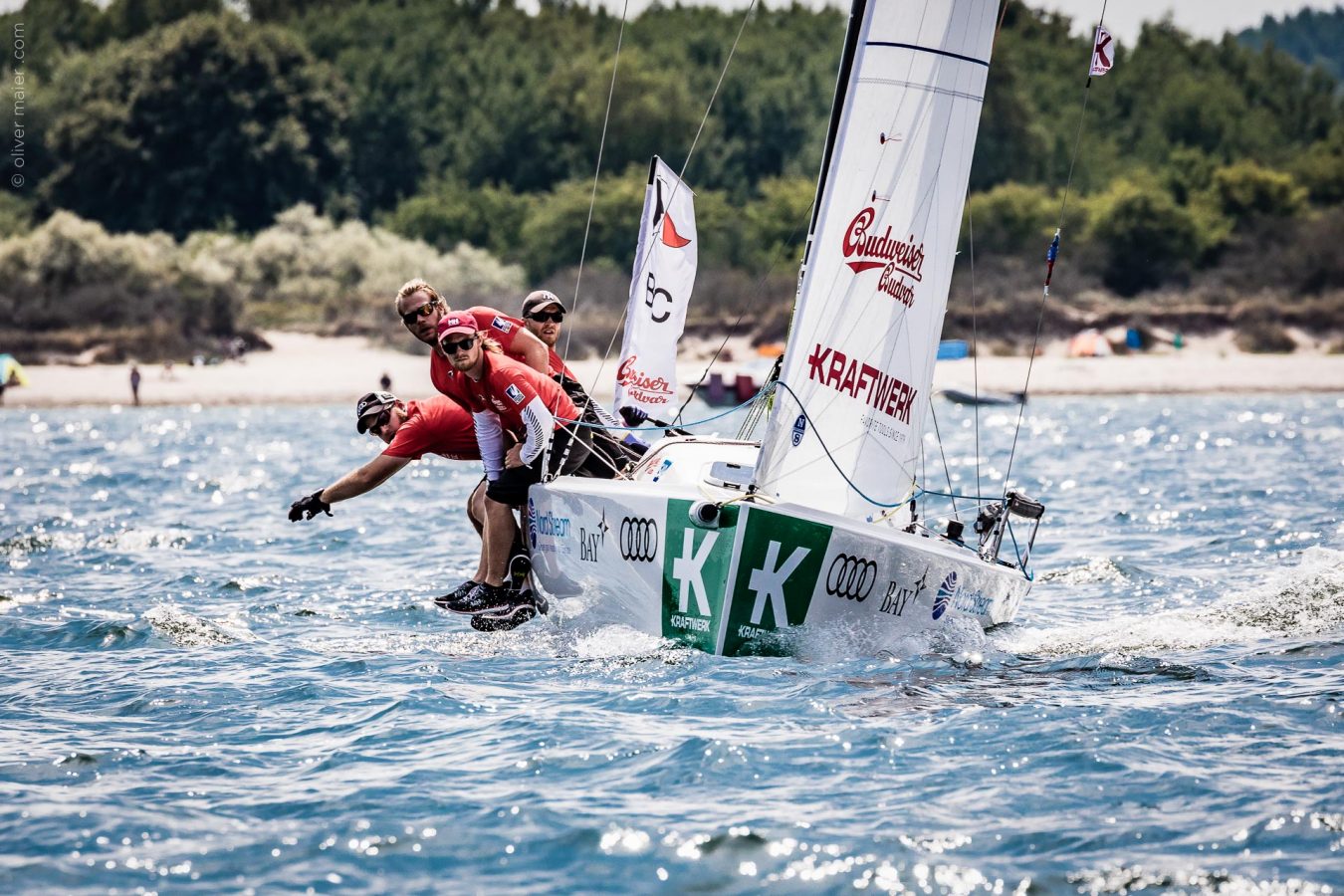
SHOWDOWN DER SEGEL-BUNDESLIGA IN BERLIN
Die Halbzeit der Deutschen Segel-Bundesliga ist vorbei und die 36 Clubs der 1. und 2. Bundesliga müssen vom 24. bis 26. August beim Verein Seglerhaus am Wannsee wieder ran. In der Hauptstadt trennt sich die Spreu vom Weizen: Welche Clubs kämpfen weiter um Meistertitel und Tabellenspitze und welche gegen den Abstieg? Titelfoto: DSBL/Oliver Maier
Die Fußballer starten kommendes Wochenende erst in ihre Saison, da haben die Seglerinnen und Segler der Deutschen Segel-Bundesliga (DSBL) schon die Hälfte hinter sich. Nach drei Events geht es für die 36 Clubs der 1. und 2. Bundesligalangsam, aber sicher auf die Zielgerade.
Die Vereine auf den ersten vier Plätzen wollen ihre Champions-League-Ambitionen weiter unterstreichen. Die beiden Tabellenführer aus Hamburg, der Norddeutsche Regatta Verein (NRV) in der 1. Bundesliga und der Mühlenberger Segel-Club (MSC) in der 2. Bundesliga, schicken wieder starke Teams nach Berlin. Das NRV-Siegerteam vom Ligaaufrakt in Friedrichshafen und dem Halbfinale der SAILING Champions League aus St. Petersburg (Florian Haufe, David und Doran Heitzig und North Sails Trimmer Miklas Meyer) soll es richten und die Führung im Kampf um den Meistertitel vor den Verfolgern vom Chiemsee Yacht Club und dem Württembergischen Yacht-Club weiter ausbauen.
Unbändigen Siegeswillen und Hoffen auf ein kleines Wunder zeigt der zweimalige Deutsche Meister vom Deutschen Touring Yacht-Club (DTYC), der erstmalig Ferdinand Gerz als Steuermann ins Rennen schickt. Der zweifache Olympiateilnehmer im 470er von London 2012 und Rio de Janeiro 2016 soll mit seiner Crew „den Karren aus dem Dreck ziehen“ und den DTYC von Platz 13 in die obere Tabellenhälfte befördern.
Alle J-70 der 1. und 2. Bundesliga werden exklusiv von North Sails ausgerüstet. Dabei kommt auf den Kielbooten der 1. Liga ein speziell für die europäischen Segelligen entwickelter Segelsatz zum Einsatz. Mehr über unsere Segel für die J-70 Klassen finden Sie hier.
Fünf Berliner Clubs sind am Wochenende auf dem Wannsee am Start. Für die 18 Vereine der 2. Bundesliga ist der Spieltag in Berlin das letzte Event vor dem Finale in Kiel vom 14. bis 16. September. Die 18 Erstligisten wappnen sich in Berlin und Kiel für das Finale in Hamburg vom 18. bis 20. Oktober auf der Außenalster.
Am Samstag und Sonntag werden die Rennen ab 12.00 Uhr live auf segelbundesliga.de übertragen. Ergänzend ermöglichen die SAP Sailing Analytics mit einem Live Leaderboard, 2D-Visualisierungen und GPS-Tracking Seglern, Fans und allen Interessierten das Renngeschehen jeder Zeit und überall zu verfolgen. Alle Ergebnisse finden Sie ab Samstag auf sapsailing.com.
Mit Material der Deutsche Segel-Bundesliga GmbH.
READ MORE
READ MORE
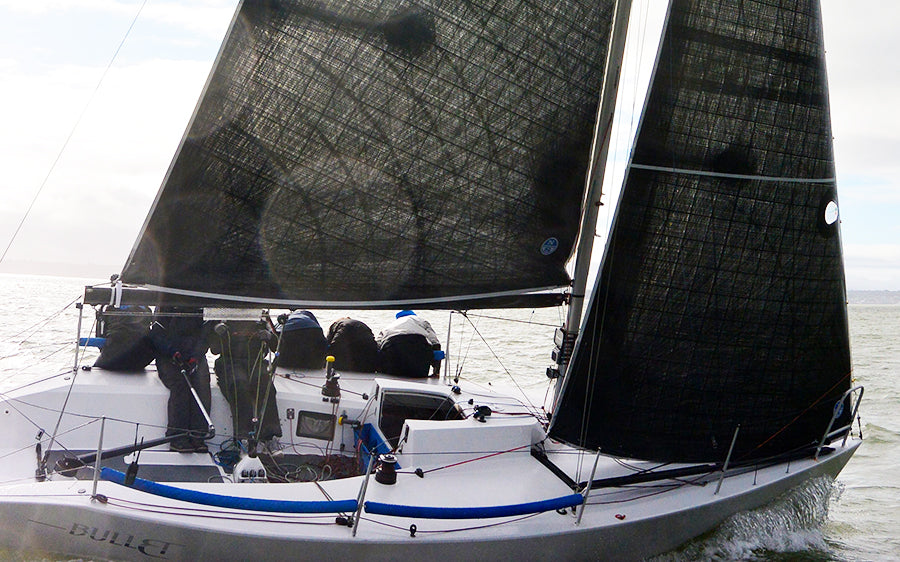
NYHET: 3Di RAW 360!
NYHET: 3Di RAW 360!
Nu lanserar vi en helt ny 3Di-modell för kappsegling
med båtar upp till ca 38 fot.
28 januari 2018. Testssegling med prototyper till det som sedermera skulle bli 3Di RAW 360.
Ett racingsegel ska vara lätt, hållbart och framför allt stumt. Ju stummare desto bättre, det har i alla tider varit den allmänna inställningen. Men i takt med att 3Di-teknologin utvecklas håller det där faktiskt på att förändras. Vi har nu nämligen nått en punkt där risken finns att seglen blir FÖR stumma, särskilt i mindre belastade områden som längs förlik och underlik. Det gör seglet svårtrimmat och i praktiken långsammare än ett segel med lite flex på de rätta ställena.
Problemet uppträder främst på lite mindre båtar, och det är här nya 3Di RAW 360 kommer in i bilden. Ett 3Di RAW 360-segel är uppbyggt av en noga avvägd blandning av aramid (kevlar), dynema och polyester, och genom att fördela fibrerna i olika riktningar har vi lyckats skapa ett segel som är stumt där det behövs och mjukare och mer förlåtande där så är önskvärt.
Utvecklandet av nya 3Di RAW 360 har pågått i över ett år. De första testseglen hissades på båt i höstas, fram på vårkanten var konstruktionen i princip färdigutvecklad och sedan dess har ett antal RAW 360-segel kappseglats på högsta internationella nivå. De användes exempelvis för att vinna Quarter Ton Cup och VM för Melges 20.
RAW 360-segel har faktiskt redan tagit ett par skalper även i Sverige. Anders Dahlsjö, med meriter från bland annat Americas Cup, Volvo Ocean Race och den internationella matchracing-touren, utrustade i somras sin Dominant 105:a ”Lady Godiva” med en genua och fock av RAW 360-modell. Seglen hann knappt hissas innan Hermanö Runt men Team Lady Godiva vann med klar marginal, och kort därefter spikade de även Göteborg Opensea Race. Och på Tjörn Runt, som seglades under hårda förhållanden, blev det totalseger på Coastal-banan!
READ MORE
READ MORE
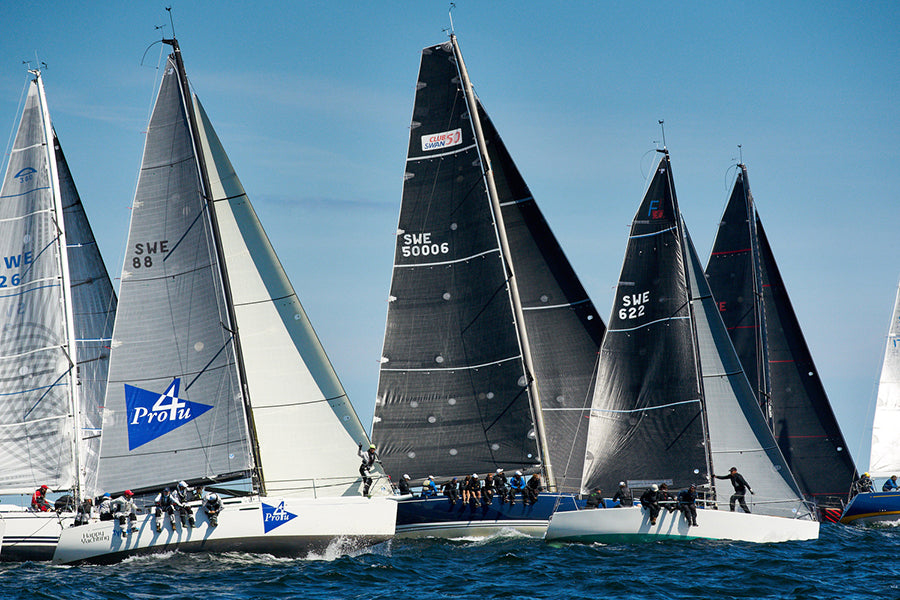
KAN MAN KAPPSEGLA MED 3Di NORDAC-SEGEL?
KAN MAN KAPPSEGLA MED
3Di NORDAC-SEGEL?
Svaret är ja. Eller nej. Eller kanske nja. Det beror lite på vad du har för båt och vad du har för ambitioner med din kappsegling.
Sandhamn Open 2018. Team Pro4u spikade vartenda race – med en 3Di NORDAC-fock utvecklad för cruising. Foto: Karlberg Marine Photo
3Di NORDAC, som lanserades i juni förra året, är ett prestandasegel men det är mer inriktat mot cruising än kappsegling. Det byggs på exakt samma sätt som seglen som används i Americas Cup och Volvo Ocean Race, och är alltså ett formgjutet kompositsegel helt utan någon film. Skillnaden ligger helt på materialsidan: 3Di NORDAC är baserat på polyesterfiber istället för kevlar eller kolfiber.
Frånvaron av exotiska fibrer har två stora fördelar. Den ena är att seglet får en oöverträffad slitstyrka och livslängd. Den andra att priset kan sänkas rejält jämfört med våra mer avancerade 3Di-modeller. Nackdelarna är att seglet blir lite tyngre, att det inte blir lika stumt och att det inte håller sin form lika länge.
Men detta är alltså jämfört med världens lättaste och stummaste segel. På rätt nivå och på rätt båt är 3Di NORDAC ett kanonbra kappseglingssegel. Det har faktiskt redan skaffat sig ett par fina meriter.
Team Pro4u – med Patrik Forsgren i spetsen – är regerande europamästare i ORCi och vann nyligen brons på VM i havskappsegling i Haag. De har en omfattande segelgarderob bestående av svarta och grå 3Di-segel byggda i kolfiber, kevlar och dynema. Men de har också en uppsättning vita segel, bland annat en 3Di NORDAC-fock. Tanken är att dessa framför allt ska användas för cruising och transportsegling. Det blir för övrigt en hel del av den varan: Under 2018 har båten körts tur och retur mellan Stockholm och Marstrand, ner till Kiel och därefter till Haag och sedan hem till Stockholm igen.
Under VM fick NORDAC-focken ligga kvar på bryggan. Men på hemmaplan har den ibland använts även på kappsegling, bland annat på SM i Marstrand och på Sandhamn Open. Focken är designad för vindstyrkor på cirka 15 knop, och det gör att den lite högre vikten egentligen inte spelar någon roll. Seglet är fortfarande relativt nytt och formen ligger där den skall. Och seglet är snabbt; på Sandhamn Open spikade Team Pro4u varenda delsegling. Men visst. Om du verkligen satsat hårt på kappsegling är 3Di NORDAC knappast ett segel för dig. Vi andra produkter som passar bättre. Men om du har en båt som inte är större än sisådär 30-33 fot och främst ägnar dig åt klubbracing och SRS-tävlingar, då är 3Di NORDAC faktiskt ett riktigt bra val.
READ MORE
READ MORE

ERIC DOYLE & PAYSON INFELISE WIN STAR NORTH AMERICANS
ERIC DOYLE & PAYSON INFELISE WIN STAR NORTH AMERICANS
Three Bullets, Great Speed and Consistency Secure the Silver Star
The 2018 edition of the Star North American Championship was held in Marina Del Rey by the California Yacht Club. Thirty-six teams battled for four days and eight races. We caught up with World Champion and North Sails expert Eric Doyle after earning his second Silver Star, winning the title.
Eric, congratulations on your second North American title. How were the conditions?
Conditions were typical Southern California, 6-12 knots, pretty bumpy and shifty, very challenging. The Star has lots of power so it made the racing very enjoyable. We did have several races where the wind came up at the end of the day and Santa Monica Bay put up some nice waves for us to surf downwind.
Your race results, excluding the discard, were all on top 3, including three bullets. What were the key factors that worked for you and Payson?
We have been working very hard this summer on our light air speed, everything from sails, upwind rig tune and overall set up. Our speed has really come a long way since the NA’s last year where we had a real problem in light air. We had confidence in our speed which allowed us to start very conservatively, look outside the boat to recognize the conditions and decide which way to go. We also had great downwind speed that allowed us to pass a lot of boats.
How long have you and Payson been sailing together?
We have been racing together for more than 5 years. He is a great sailor and really helps me out a lot. He is very calm on the boat, even when I screw up royally. He runs the tactics downwind and always sets us up for the next leg. It’s great to have such a solid crew.
The Star Worlds are coming up. What are your expectations?
Well, the last time I won the NA’s we won the Worlds as well but in the Star Class there are so many excellent sailors that all one can really hope for when you show up at the Worlds is that you are competitive with the top boats, sail your best, and have a shot to win going into the last race. If every aspect of your program is not at its top level, at some point during the week it will show up and you will drop out of contention. We have been working hard all summer on the West Coast so hopefully it carries over into the Worlds.
Which North designs did you use?
The whole week we used our light air mainsail, the M-05 and the J1-R5 jib. However, the weekend before when we won the King of Spain regatta, we used our standard M-16 main and seemed to go pretty fast there was well. The M-05 main uses a minimum weight cloth and has a little rounder sections which help power the boat up sooner. The jib is quite full with a wide entry that really helps in the chop which we often encounter when racing in bigger fleets.
You have been involved in the Star Class for a while now. What is it so special about the boat for you?
I did my first star regatta as a crew when I was in high school (long time ago) and bought my first boat right out of college in 1990. With the small mast section and huge amount of sail area, the rig tuning and sail trim is very critical and if you understand the dynamics of a Star boat, you can race any boat in the world. There is also the challenge of just you and one crew member handling everything on the boat – sail trim, rig tune, boat balance, tactics, etc. Also, as soon as the wind comes up, the boat is very physical and requires a lot of hiking and force to muscle the boat around the track. It is by far my favorite boat to race!
What are your major titles in the Star Class?
We won the 1999 World Championship in Punta Ala, Italy, same year we last won the North Americans in Boston. I have also won the Spring Championships but I can’t recall the year. It is always very special to win a Star Class event as the competition is very challenging and the friends are the best. Always lots of fun in this class!
Congratulations Eric and Payson and good luck at the Worlds.
Learn more about North Sails fast Star designs.
North Sails Jib Jenga
READ MORE
READ MORE

CUSTOMER SPOTLIGHT: ENTOURAGE
CUSTOMER SPOTLIGHT: ENTOURAGE
A New Boat, A New Season, And Lots Of Ambition!
Growing up sailing, Will French experienced all dimensions of the sailing world - junior sailing, racing, coaching, crewing and even program running. Within the last few years though, he's added boat owner to his list of credentials; first purchasing a CS27 and most recently upgrading to an Olsen 911SE. Fixing her up throughout the long, cold winter in Toronto, Will and his crew were eager to dive into the racing circuit with the new boat come spring. In addition to racing, mainly distance, Will and his crew of friends (many of who he's taught to sail over the past couple of years) are regulars during weeknight racing at their home club of Lakeshore Yacht Club.
We caught up with Will to get insights on his program, his new boat, and his upgraded North Sails inventory.
What prompted the new boat? Looking for a new adventure/challenge?
More race oriented instead cruising and I looking to get back to a boat that was more familiar with what I grew up on. Soca Junkie, CS27, was more an affordability thing really. If you want to grow at the same rate (perform at the same level) then on to the next boat .
So you've always wanted to do more performance race stuff, more race oriented versus cruising?
Absolutely. I've been racing for over 15 years. So with J/24's and then on 36.7's, and then the F40. So I was wanting to get back to a boat more familiar to what I grew up on. But at the same time, like my crew is all just neighborhood buddies that I grew up with; So none of them are sailors.
How did you get the crew that you have?
Well, so my first boat wasn't cool enough that any of my sailing buddies wanted to come sailing, because they were still all on the 36.7's and whatever. And then, so I needed a crew. So I recruited some of my buddies, and so I've literally trained them from, this is the boat . So for the crew that I've got, we've been pretty good. So part of it was a that affordability , and then also wanting to make sure that they could then take that next step and that they could perform with the new boat. Obviously the new boat would demand more of them than Soca Junkie, which was a great place to start.
Describe the type of racing you typically compete in (e.g. club, long distance, etc…)
We try to do everything - long distance, short handed, LOSHRS . We're not doing open's yet because we're still learning the boat but if there were enough crew interested and committed to doing it, then I'd do it. Right now though we're mainly focusing on Wednesday night's, the Lake Ontario 300 and general distance racing within Lake Ontario.
When did you start sailing and how has your program evolved over the years?
I started sailing when I was five years old. Definitely more aggressive sailing these days. What has been the most interesting really has been the new crew. The new crew has allowed me to look at sailing through their eyes and see things from a new perspective. It hasn't been without bumps along the way; the crew has had to learn a whole new boat and many of them have only been sailing for about two years or less maybe. I try to always take out new crew who haven't been sailing long and train them from scratch. I think if anything over the past years especially working with the crew that I got now, it's made me calmer, not in the sense of pulling back, but just having to look through the eyes of someone brand new again, after so many years of sailing with people where you didn't even have to talk move and you knew what to do. So that was a challenge, for sure. But that's part of it is getting new people into it.
What were the motives to purchasing two new spinnakers?
It was just the boat came with everything in great condition sail wise, inventory wise, but the kites were old. I decided to go all in with new kite’s based upon the inventory the boat came with and the sailing we were going to be doing this year.
How have they assisted in your performance for racing this year so far?
Yes, but they're pretty easy to figure out. Like the one sale that I'm more so still trying to figure out a little bit more is, the A1/A3, that me and Geoff sat down with, because it was kind of cool. So we basically took our PHRF certificate, and then, calculated out how could we design a kite that would optimize the PHRF without taking a hit; so we sat down and worked out the calculations. Geoff and I designed it more like asymmetrical reacher to fly off a pole.
Tell us about the LO300 and Susan Hood using your new kites.
Well, the fact that they were Air X really helped out, because it was mostly light air sailing. So that definitely helped out with being able to even get the difference between a zero and point five knots. If it was like the heavier cloth that just wouldn't lift but with the Air X it was just able to lift that much , we keep going forward and finished faster.
What’s your best advice for someone looking to race & cruise their boat? Especially when it comes to new sail purchases?
Tweaking and upgrading parts as best you can. With older boats, try to think of the mindset of now and what you'll be doing when sailing - don’t be afraid to try new setups on older boats when re-designing. One thing that I've always tried to do is, especially with older boats, and having like some background on the newer boats is, if this boat was redesigned today, how would they lay it out? Because the mindsets of today weren't the same that they were in 1988. Sometimes you look back in time and you're like, what were you thinking? So don't be afraid to try new setups. Just because it was designed that way, years later it doesn't mean that there's a better way to do it. I think people get stuck with that, like they got a boat, and they think it has to say the exact same way with the setup, and they're just terrified to change anything because they're like, well, it's not designed that way. It's like, well it wasn't designed that way when they made it, but it doesn't mean it won't work. For sails, depends on the purpose. If we're talking strictly racing, I would go bang for buck. So like, Lake Ontario obviously we get tons of light breeze. So if you don't have a good kiter, a good main, a good light number one, there's 75% of your season, where you're not using the best that you got. But then also, I think it comes down to what's your style? Like, are you the type that's more, I like to keep people far away? For me, I like to keep a buffer, more conservative; but for others it's like Are you the type that, likes to get within a foot and aren't afraid to do close crosses, or you need something of like, 75% this is going to work 25%, this is gonna be horrible.
READ MORE
READ MORE
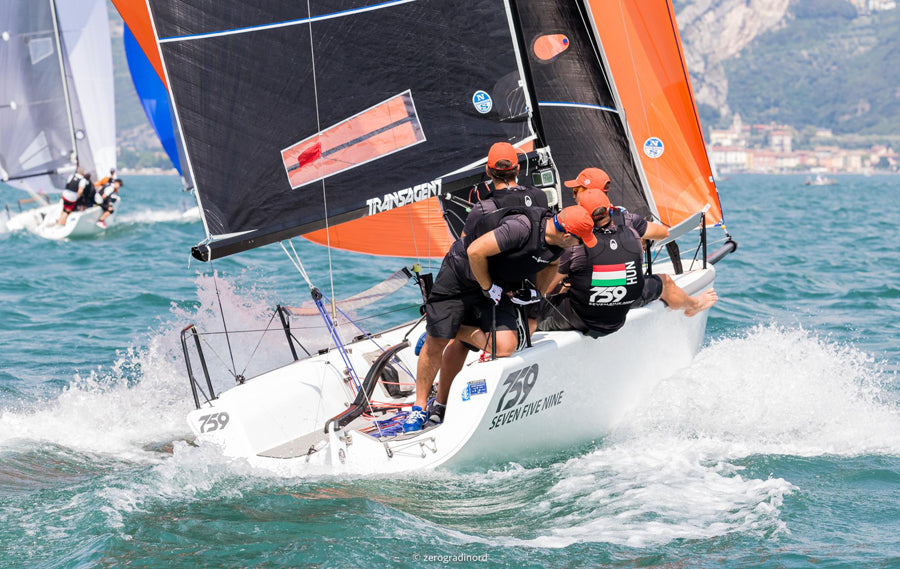
3Di PERFORMS AT THE MELGES 24 EUROPEANS
3Di PERFORMS AT THE MELGES 24 EUROPEANS
Thoughts on the New Melges 24 3Di Mainsail
The Melges 24 Europeans hosted by Fraglia Vela Riva on Lake Garda gave the seventy-two competitors everything that is to be expected on a typical summer day racing on Lake Garda – light winds in the morning followed by a strong mountain breeze coming in the afternoon. Over the past year North Sails have put in a lot of development to their small boat 3Di sails which has included a new inventory for the Melges 24 class.
We spoke to North Sails expert John Bowden who was onboard third placed USA team Lucky Dog. They used the new North 3Di designs for the Melges 24 class and this is what John had to say about their performance.
What is your role on the boat and what were the things you were looking out for in the big breeze?
I am the trimmer, responsible for the sails for the boat. We were happy with our setup in the breeze and we were very happy with the flexibility of the 3Di sails in the only one light air race of the event.
Which sails were you using? And how did you find them?
We used the 3Di Mi-1 mainsail for the three days leading up to the regatta and the more we used the sail the better it looked. Through our tuning and speed testing with the top boats we were extremely satisfied with the 3Di performance that we decided to measure the Mi-1 mainsail at the very last minute. For the jib, we used the standard J-7K jib. We measured the P-1 and the P-3 Asymmetrics although we raced with the P-1 95% of the time.
What was the trick to go fast upwind in these conditions?
The main setup very well, we stuck to the North Sails tuning guide. The mainsheet was a bit more sensitive than the old sail, but once we got used to it the sails went up and down the range better than expected.
And the same for downwind?
Downwind we used the P-1 spinnaker and were super happy with that sail. It has always been our default.
The big surprise was that there was more sheet load on the mainsail downwind. I think this was a huge factor in our speed downwind. Great layline calls were also critical, but the lack of stretch in the Mi-1 3Di Mainsail gave us more power down low to help us go forward. We were quite surprised at how the sail made that big of a difference off the wind.
Did you use the North Sails tuning guide?
Yes, we stuck with the tuning guide. The Mi-1 3Di Mainsail seemed to react very similarly to the AP-3 Mainsail in all conditions. We were just conscious to not be too loose as the lack of stretch in the mainsail made it quite powerful.
Do you have anything else to add about the sails?
We were very happy with the new mainsail, 3Di is definitely our future. We are looking forward to spending more time with the new jib. I think the durability of the material will be huge for these sails. We are expecting to see almost twice the life out of them over the standard sails!
Are you interested in our Melges 24 3Di products? Get in touch with a class expert today!
READ MORE
READ MORE


